
- Best Hikes In The World
- Appalachian Trail
- European Hikes
- Nepal Hikes
- Patagonia Hikes
- See All Hikes
- Mount Kenya
- Mount Kilimanjaro
- Mount Toubkal
- See All Mountains
- South Africa
- New Zealand
- Switzerland
- United Kingdom
- Packing Lists

Climb Stok Kangri – Complete Guide to Stok Kangri Trek
Asia , India
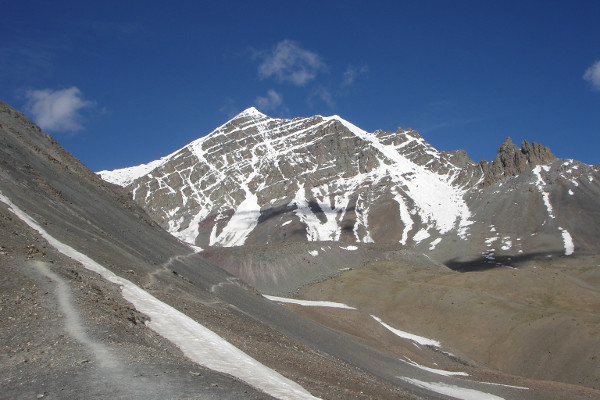
Situated in the remote and scenic Ladakh region of north-west India, Stok Kangri is an increasingly popular summit for hikers who wish to undertake a less technical high-altitude trek in the Himalayas .
This is not to say that Stok Kangri is for beginners and underestimate its difficulty though.
Experience on other high altitude climbs as well as a knowledge of how to use crampons and an ice axe is essential to complete this trek as weather conditions and the rapid gain in altitude on summit day often affect even the more experienced hiker.
Stok Kangri Trek
At 6,153m above sea level, Stok Kangri is the highest mountain in the Stok range of the Himalayas. It is situated in the Hemis National Park which is in the Ladakh region of Jammu and Kashmir in India.
Hemis National Park is itself famous for being home to the greatest concentration of snow leopards in the world.
Also known as the ‘Land of high passes’, Ladakh is renowned for its remote and beautiful mountainous regions. It is popular with hikers due to the numerous amazing trekking routes such as the Markha Valley Trek or the Chadar Trek that cross the region.
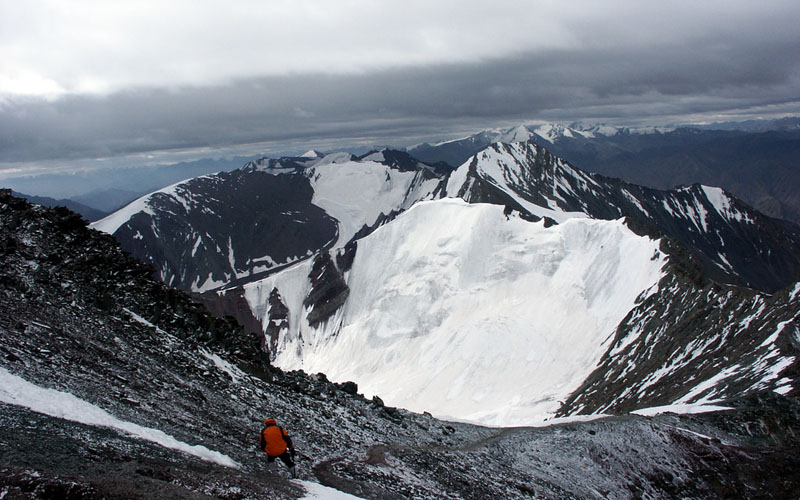
Photo by Mountain Madness
The peak of Stok Kangri, visible from the nearby town of Leh, entices thousands of hikers to attempt its summit every year. The scenery on the trek is typical of a high altitude desert; stark and beautiful. It is an arid landscape of deep valleys rising up to perennially snow-topped peaks. Views from the peak overlook the Zanskar and Karakoram ranges, and on a clear day, K2 can be seen in the distance.
Because the trek is done during the summer months, the daytime temperatures at the lower camps are fairly pleasant and range from 10° to 25°C during the day and average around 10°C at night. From Base Camp upwards to the summit, the temperatures decrease drastically, and the weather becomes more unpredictable. Here, you can expect a range of 10°C to 15°C during the day and anything from 5° to -2°C and less at night time.
There are several approaches to the summit of Stok Kangri, all of which start and end at Leh. The three popular approaches branch off from Leh and approach the summit from different valleys. These approaches ultimately end up re-joining at Mankarmo and from this point, there is one route up and down.
Sightseeing in Leh
The town of Leh is situated at 3,524m above sea level. Spending a few days here to acclimatise before your hike is highly recommended, especially if you are scheduled to arrive in from Delhi which is at sea level.
Leh is scenic and full of history. Pass time sight-seeing whilst acclimatising by exploring the Buddhist monasteries of Shey and Thiksey, or walk around the vibrant markets that were once part of a silk trading route.
You can also take a drive across Khardung La Pass which is one of the highest lying motor passes in the world. It was used historically by horses and camels as a caravan route from Leh to Kashgar in Central Asia and today it is used to carry supplies to Siachen glacier.
Stok Kangri Itinerary
A typical itinerary along the main route via Stok Village would look like this:
Day 1 : Arrive in Leh on a flight from Delhi. Check into your hotel in Leh. Stay overnight in the hotel.
Day 2 : Acclimatize. Spend the day sightseeing in Leh. Stay overnight in the hotel.
Day 3 : Drive from Leh to Stok Village. Begin your trek here, going from Stok Village to Chang Ma. Stay overnight in Chang Ma in tents camping.
Day 4 : Trek from Chang Ma to Mankorma. Stay overnight in Mankorma in tents camping.
Day 5 : Trek from Mankorma to Base Camp. Stay overnight in Base Camp in tents camping.
Day 6 : Base Camp Day. Rest day and training day in Base Camp for acclimatisation and preparation for the upcoming summit bid.
Day 7 : Summit bid Day. Base Camp to Stok Kangri summit and return to Base Camp.
Day 8 : Return. Head back to Stok Village and drive to Leh.
Popular Stok Kangri Routes
All routes start at Leh (3,524m above sea level). One of the shorter popular routes is to start from Stok Village , which is a short 15km drive from Leh. You will commence your hike here and trek the 5.5km to Chang Ma (3,988m) which is your first overnight stop.
The next day you will trek 3.5km to your next overnight stop at Mankorma (4,320m). From Mankorma it’s 4km to get Base Camp (4,930m) where you will spend the next two days.
The real test comes on the stretch from Base Camp to summit where you will trek 7km to the summit (6,153m) and then 7km back to Base Camp. Your descent is back the way you came up.
Starting at Zingchen
Another popular route that allows for extra acclimatisation preparation starts the trek at Zingchen (3,402m). From Leh, it's a short drive to Zingchen (3,402m) where you will hike 6.5km to stay overnight at Rumbak (3,956m).
The next day is a tough one and you will trek 10.7km from Rumbak, over Stok La Pass (4,855m) and then descend to Mankorma (4,320m) where you will overnight.
The next day your trek will take you to meet up with the main route up and you will trek the 4km to Base Camp to overnight and prepare for summit day.
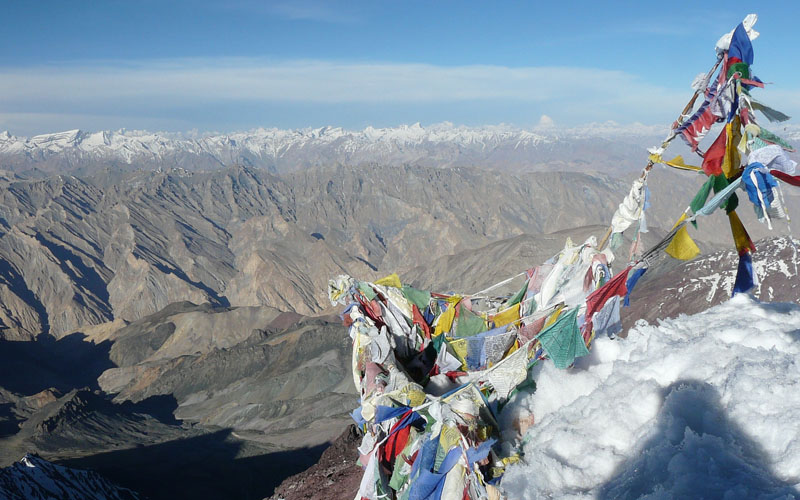
Photo by Peter Lademann
Starting From Chilling
There is another longer route which some people do for extra acclimatisation days if they have the extra time. This one starts the trek from Chilling which is a three hours’ drive from Leh.
This route goes via a town called Skiu and ultimately meets up at Rumbak to join the Stok La acclimatisation route.
It can take up to 5 extra days compared to the other routes.
Please Note: There are no permanent sleeping structures along the routes to the summit and all overnighting is done in tents. A few of the regular tour operators have tents permanently erected at base camp otherwise all tents are carried up by porters or horses and erected daily.
At Base Camp, you will find a tea tent that sells a few basic supplies such as bottled water and snack bars to supplement any additional diet needs you might have.
Stok Kangri Trek FAQ
How do you get to stok kangri .
The easiest way to get to Leh is to fly into Delhi and from there, several airlines offer daily flights at reasonable fares from Delhi to Leh. Check with Air India, Jet Airways, Hahn Air Systems or with your travel agent to see what is available.
You can also get to Leh via road but this takes a lot longer as the transport systems can be unreliable and the road is only open during the summer months. From Delhi, you would take a bus to Manali where you would overnight before getting another bus onto Leh. The entire journey via road can take between two and three days but if you have time to spare and a sense of adventure this could be an exciting way to see more of the Indian countryside.
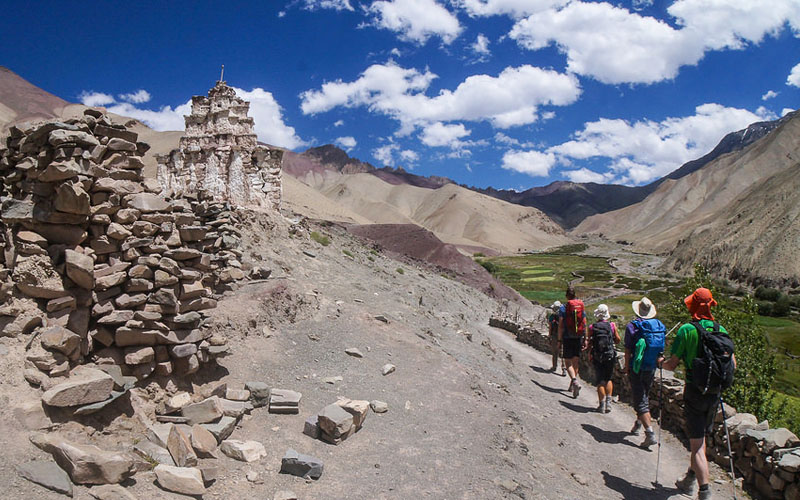
Photo by Steen J. Østergaard
Do you need acclimatisation for Stok Kangri?
Absolutely. Spending a few days in Leh at 3,542m to help your body adjust and rest will help greatly with acclimatisation. Do not rush this part of your summit preparation. Combined with unpredictable weather conditions, mountain sickness that can result from inadequate acclimatisation prior to trekking are the two main reasons that so many hikers fail to reach the summit of Stok Kangri.
Taking one of the longer routes that start from Chilling or Zingchen and follow the Stok La Pass which descends before joining up with the main route for the continued ascension may also help those who wish to extend their acclimatisation time and ascend at a more gradual pace.
The Ladakh region offers many beautiful hikes, for example, the Markha Valley Trek, and considering that the majority of them leave from Leh it is very easy to undertake one of these as a warm-up for Stok Kangri.
Read our guide to altitude sickness and acclimatisation .
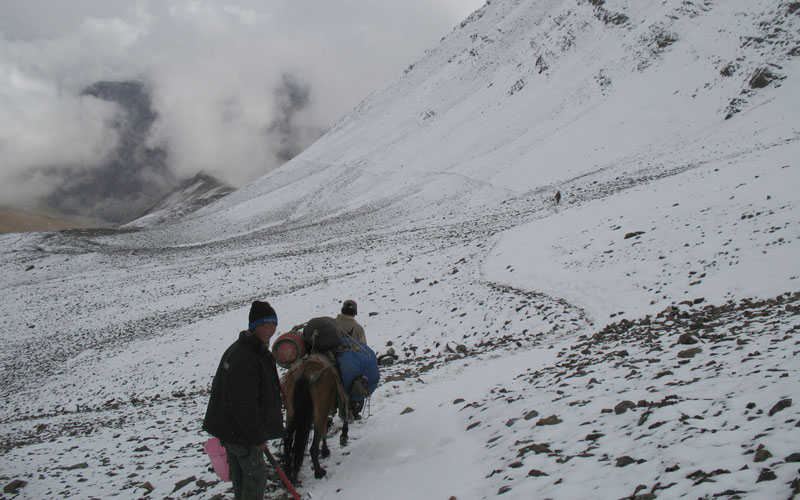
Photo by Mayoor Patal
When is the best time to climb Stok Kangri?
Stok Kangri is best attempted during the summer months from June to September when the routes (except for the summit which is perennially covered) are clear from snow.
Very experienced trekkers can risk adverse weather conditions and attempt the summit late September into October, but an experienced guide is recommended, and the trek should not be underestimated.
Please Note: The route is closed to trekkers over the winter months.
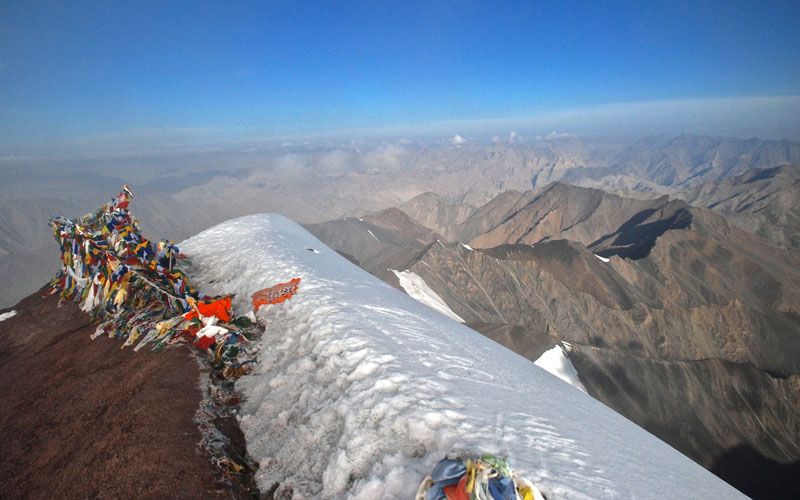
How difficult is the Stok Kangri Climb?
This trek is classified as a difficult climb due to the difficult conditions that you will meet from Base Camp up to the summit. AMS is a very real threat and careful attention should be paid to any symptoms that arise.
Your trek will vary in pace and intensity and might seem deceivingly easy over the first few days on the trek up to base camp. Thereafter the difficulty increases as the terrain becomes more challenging, weather conditions decline, and the air becomes thinner as you head towards the summit.
On the summit day trek, you will negotiate various types of terrain that will include traversing across a slippery glacier, negotiating your way over a section of verglas, picking your way through rocky moraine, and scrambling up snow-covered slopes. This is where your crampons, ice axe and trekking poles might be needed to get you to the summit. Inexperienced hikers might consider roping up for the last stretch when walking the final section of the shoulder to the summit.
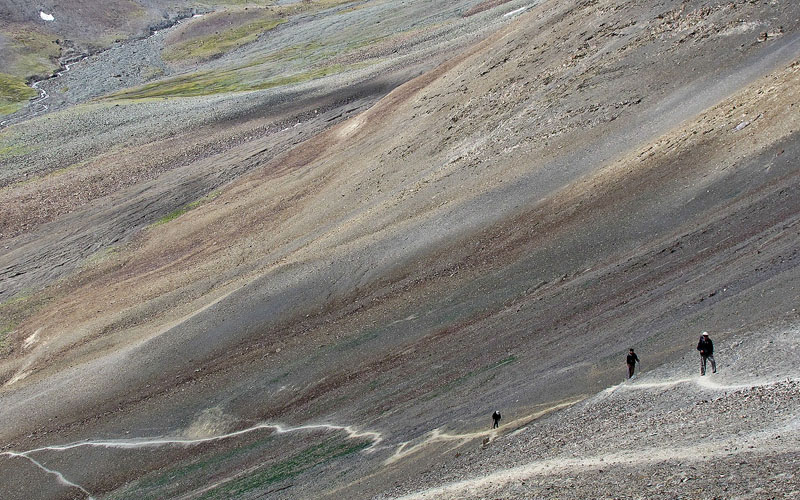
Photo by Matthew Amery
Do you need training to climb Stok Kangri?
Yes, you need some training to climb Stok Kangri. As it is a difficult climb, a good level of fitness and muscle strength, especially in your legs, is required to successfully reach the summit.
Your route to the summit of Stok Kangri trek will involve approximately 4 actual trekking days, each day varying in trekking time from 2.5hrs and up to 11hrs on the summit day.
You will be faced with cold, often freezing nighttime temperatures, and these can affect your energy levels. Having a good level of aerobic fitness is therefore very important.
Here are a few key things to remember when beginning your Stok Kangri training:
Begin Three Months Ahead
Ensure that you begin training no less than three months before your trek dates. Incorporate resistance training using weights, running and hill training into your fitness regime in the weeks leading up to your trek.
Invest in Weight Lifting
Check with your guiding company beforehand to see what their policy is on carrying provisions and luggage. Most of them have porters and horses to carry up campsite provisions and your luggage but you will likely need to carry your own day pack on your trek. Make sure that you get yourself a comfortable backpack (we recommend the Osprey Talon 33L Unisex Pack ) and do some training with it on. Start out light and gradually increase the load to get used to carrying a load.
Go on Training Hikes
If you live in a hilly/mountainous region, then do a few training hikes with your pack on as this will help to prepare your muscles. If there aren't many hills in your area, then be sure to either do lots of incline work on the treadmill or alternatively, stair work will be beneficial too.
Do not push yourself too hard too quickly in your training as you do not want to suffer any injuries leading up to your trek. Make sure to rest in the last week before departure to India. This will ensure that you arrive in Leh feeling fit and ready to take on the mountain.
Practice with Crampons
It is essential that you know how to use crampons and an ice axe as you will likely need to use them on your summit day when you cross the glacier and work your way up the shoulder to the summit. Practice using this equipment on a smaller winter hike in your region that involves traversing snowy peaks or enroll in a mountaineering course that utilizes this equipment to improve your skills.
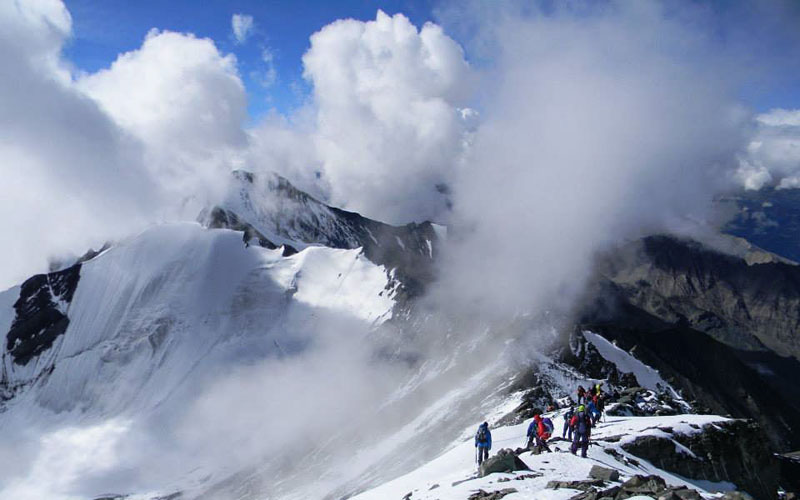
Photo by Alberto Bertotto
What gear do you need for Stok Kangri?
An expedition like Stok Kangri requires some specific gear.
To make sure you don’t forget to bring anything, this is a recommended list of gear to pack, based on our own experience.
Travel Gear
- Passport and a valid visa are obvious ones. Check with your travel agent or the nearest India High Commission to see what the requirements are for your country’s passport but for the most part, most nationalities are required to apply for a visa prior to entry in order to visit India. The application can be done online via India’s e-visa system, or alternatively at your nearest VFS Global centre which processes visas to visit India.
- A durable and water-proof duffel bag is next on the list. Your duffel is going to be carried by porters or loaded onto a horse so it needs to be durable, comfortable to carry and able to withstand the weather - water-proofing is a must! We think that the Northface Base Camp Duffel is a winner here.
- Your lightweight daypack will come in handy as your carry-on luggage for flights and is an essential item for your trek to carry items of a personal nature that you need on a daily basis whilst trekking. This should also be waterproof or have a rain cover.
Climbing Gear
- You will need crampons that are compatible with your hiking boots. The 12- point crampons offer more traction than 10-point crampons and we like the Black Diamond Sabretooth Pro Crampons .
- A straight shaft mountaineering ice axe with wrist loop. Make sure you get the correct one for your height.
- Climbing harness and two locking and non-locking carabiners in case you need to rope up for the walk along the ridge to the summit.
- A climbing helmet
Clothing & Accessories
- Hiking boots that fit your crampons and are waterproof – either B1 or B2 boots will be fine.
- Lightweight hiking boots – daytime temperatures can be warmer in Ladakh so bring a pair suitable for this.
- A pair of comfortable trainers and/or sandals to wear around camp at night.
- Woollen mountaineering socks for the summit.
- Synthetic/lightweight woollen socks for trekking.
- A pair of gaiters to keep boots and lower legs dry in case of wet and snowy conditions
Lower Body Layers
- Water and windproof hiking trousers.
- Thermal base underlayer .
- Insulated trousers for wearing around camp.
- Trekking pants and shorts – should be lightweight and synthetic.
Upper Body Layers
- Water and windproof hiking jacket.
- Quick-dry hiking T-shirts .
- Mid to heavyweight fleece jacket
- Thermal base underlayer. We recommend Smartwool's range of base layers .
- Medium weight down jacket .
Headgear and Handwear
- Waterproof gloves
- Fleece/woollen gloves
- Wide brim sun hat
- Woollen/fleece warm hat or balaclava for summit day.
- Buff and/or scarf for protection from dust.
- Sunglasses with ample UV protection.
- Headlamp with extra batteries.
Other Essentials
- Sleeping bag and mat .
- Dry bags to arrange your gear and keep it dry.
- Trekking poles are highly recommended for this trek – try the Black Diamond Alpine Carbon Cork .
- 2 wide mouth water bottles. The Nalgene Tritan BPA Free Bottle will not freeze up in cold temperatures unlike metal bottles or hydration bladders .
- Insulated bottle cover to keep your liquids hot or cold.
- Water purification tablets
- Snacks such as energy bars or dried fruit to keep you fuelled between meals.
Accessories
- High SPF Sun cream and lip balm.
- Wet wipes, hand sanitizer and tissues.
- Soap, toothbrush and toothpaste, wash towel.
- First aid kit including painkillers, insect repellent, hydration salts, plaster and blister treatment, diarrhoea treatment. Speak to your doctor about Diamox for altitude sickness.
- Camera and extra batteries.
- Repair kit – needle and thread, duct tape
See our full gear list for more details.
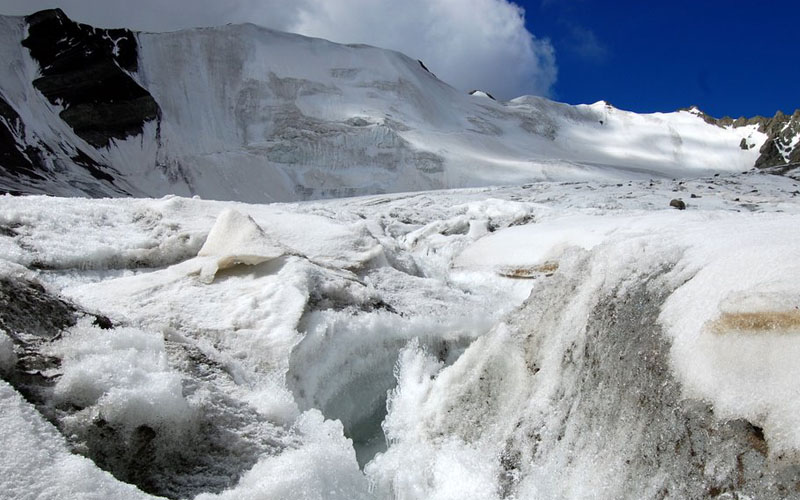
Photo by Mark Horrell
How much does it cost to climb Stok Kangri?
There are various budgets available to Stok Kangri trekkers and the cost will depend on what you choose to include in your trek.
Booking with a guiding company will vary greatly in price, for example, some will include flights between Delhi and Leh, while others will only cater for your trip from Leh onwards. At a glance though, most packages will include your accommodation in Leh, camping and meals whilst on your trek, fees for the necessary support staff, permits and entry fees for the trek. These start from about US$2500 per person and can go up to US$3,150 for a package that has a longer itinerary and includes your flights between Delhi and Leh.
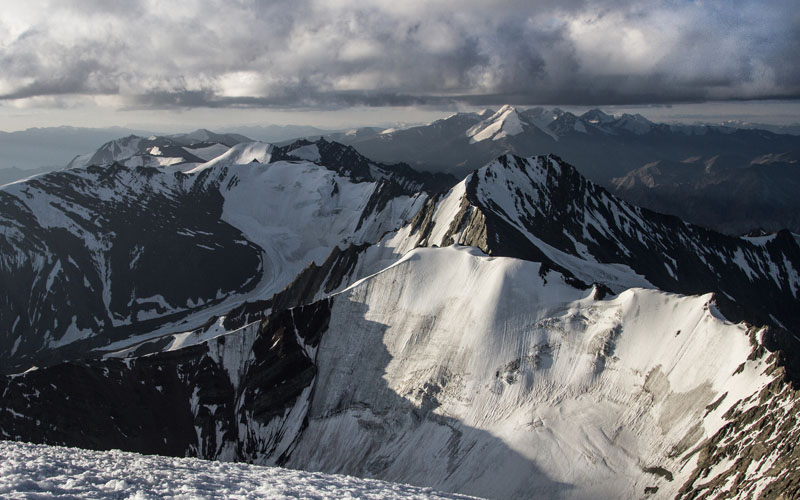
Photo by Kuntal Joisher
Do you need a permit to climb Stok Kangri?
Yes, you do. If you plan your trek through a guiding company, then all of your relevant permits for the trek are usually included in your package price.
If you are an experienced trekker, opt to do your own expedition up the mountain. To do that, you will need to get an IMF ( Indian Mountaineering Foundation ) permit which costs about US$50 for foreign nationals and can be purchased in Leh.
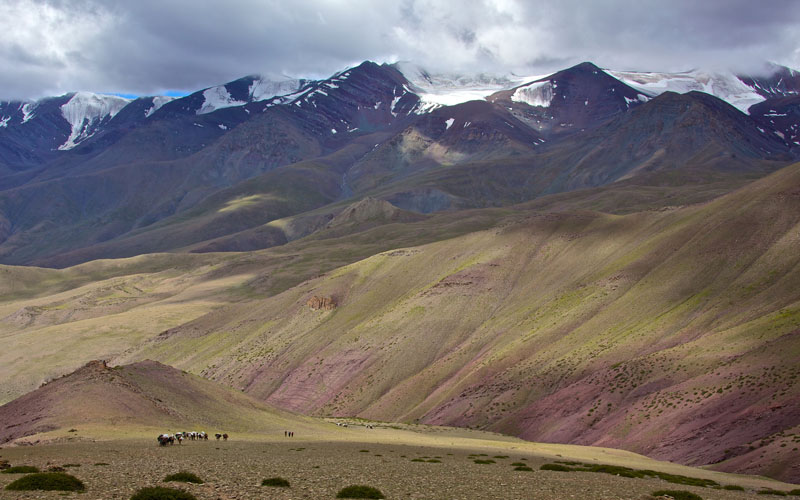
Photo by Tina Iyer
Do you need insurance for Stok Kangri?
Any high-altitude mountain expedition is considered risky, and you will need to get comprehensive hiking insurance to cover you. If you have booked your trek with a guiding company, then standard travel insurance will not cover high altitude mountaineering. When booking your trek, ask your tour provider for their recommendations on high altitude travel insurance providers.
We recommend contacting the BMC in the UK or the American Alpine Club in the US for more information on trekking insurance.
Continue browsing...
See more information on India . Or check out these other Asian Hiking articles:
- Things to do in India after your Hike
- Bollywood Tour of Mumbai
- Where to Get Traditional Indian Food
- Guide to the Hindu Kush
- Hiking in Arunachal Pradesh
- Best Asian Hikes
- Hike to K2 base camp
- Best hikes in India
- Best hikes in Nepal
- Best hikes in Bhutan
About the author
Mark Whitman
Mark has trekked extensively in Asia, Europe, South America and Africa. He founded Mountain IQ in 2014 with the sole aim to be the best online information portal to some of the most popular mountain destinations around the world. When not writing for Mountain IQ, Mark is out exploring the outdoors with his wife!
Leave a Reply
Your email address will not be published. Required fields are marked
We work with local guides to offer great value adventures at unbeatable prices
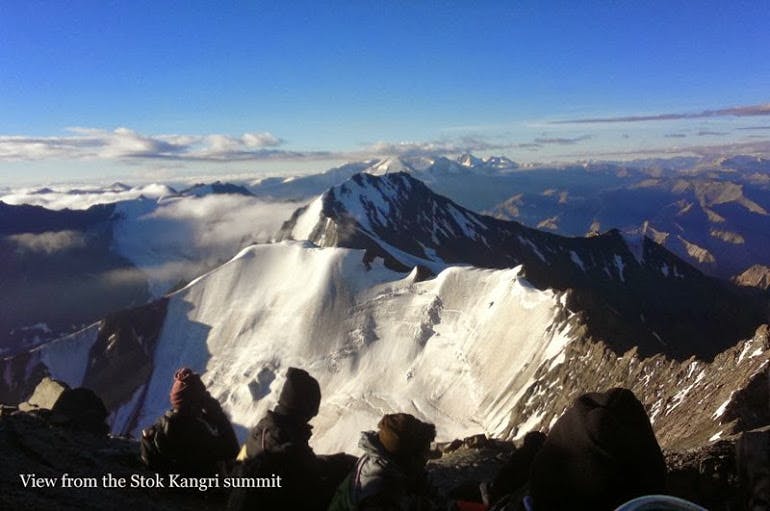
Why Stok Kangri in Ladakh is Meant for the Experienced Trekker
Share this story
Category Expert Opinion Guides To Choose Treks Photo Story
By Arjun Majumdar
T he number of new trekkers who want to do the Stok Kangri trek surprises me. Some of them have not done any high altitude trek, not even a relatively simpler one like the Roopkund . They want to have a go at the Stok Kangri summit — no doubt attracted by the glamour of scaling a known summit in the Indian Himalayas. At 20,500 feet Stok Kangri is the highest trekkable summit in India (6,153 m).
I want to throw in some words of caution for trekkers.
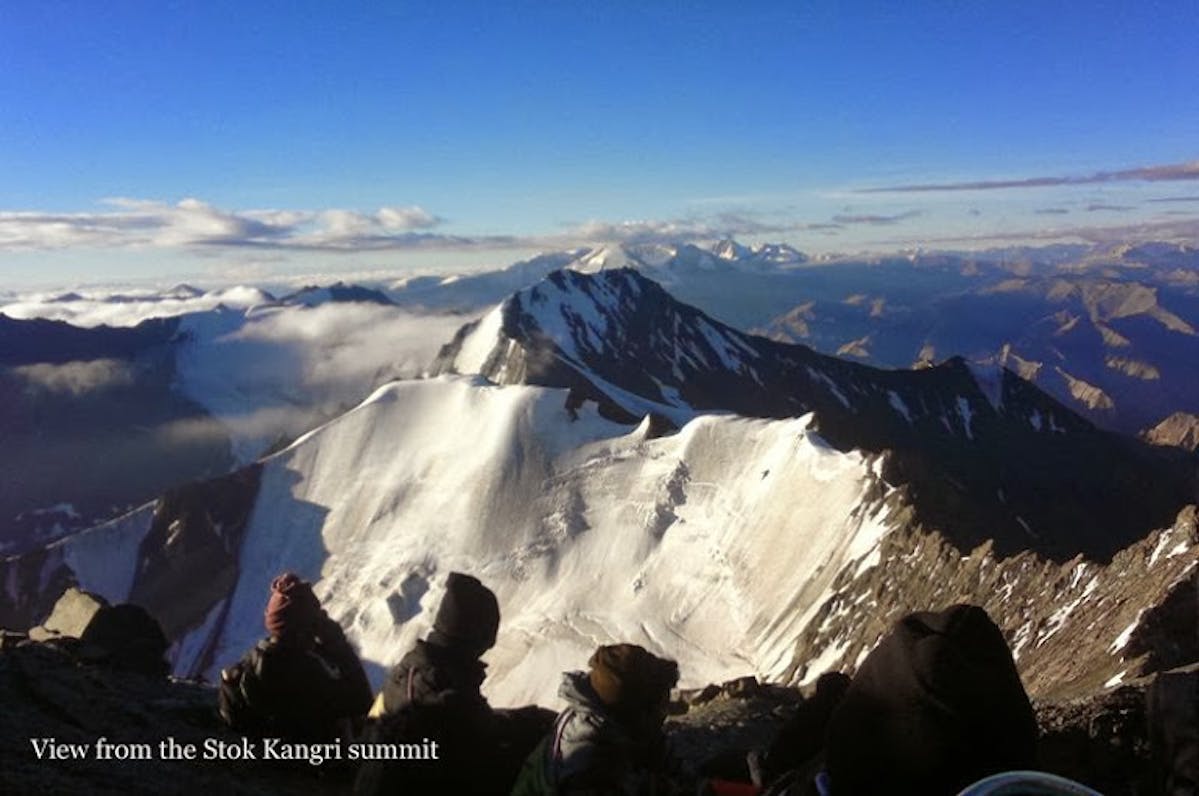
View from the Stok Kangri summit. Picture from Indaihikes archive
Requirement of proper acclimatisation
The Stok Kangri trek requires proper acclimatization. I am dismayed at the number of trek operators who casually say, “Stok Karna koi baat nahi. Paanch che din ka trek hai, ho jayega ji.” (Stok is no big deal, it is just a 5-6 day trek, and it will be done.) One of them came to our office with an air of invincibility. It alarmed me greatly.
Here are some real stories: In 2008, a close friend of mine had to return half way from the trek, hit by AMS, despite spending two days at Leh acclimatizing. Only one member from her team of 15 made it to the Stok summit. In 2009, a team of 6 trekkers made it 70% of the way to the summit in July and had to return, hit by a snow storm. The same team attempted Stok once again last year and all of them had to turn back, some with bleeding noses, hit by acclimatization issues – few of them were only meters away from the summit.
Most itineraries of trek operators are rather questionable. They have two days of acclimatization at Leh, as if acclimatization at 11,500 feet would help overcome a summit at 20,500 feet. The two days of acclimatization at Leh is required not for the Stok summit, but to get adjusted to the mountains after a sudden flight from Delhi, which is almost at sea level.
What a trekker needs is another trek that climbs to at least 15,500 feet (4,700 – 5,000 mts) before attempting Stok Kangri. No operator I know wants to include this in the itinerary – it makes the Stok Kangri expedition longer and more expensive. What is disheartening is most trekkers don’t insist on it either – it means taking more time off from office. Leaves seem to be expensive too!
Do not attempt Stok Kangri if you cannot spend at least 10 days in the mountains of Ladakh. And do not attempt Stok Kangri if you do not have the physical fitness to endure a trek that climbs nearly 5,000 meters prior to the Stok Kangri trek. What it means is you are going to do two very high altitude treks back to back. This requires a high order of physical fitness, for which preparation needs to start couple of months in advance.
Ability to make good judgement
Next, I’ll put down something as “judgement.” Because Stok Kangri is a trekkable summit, most first time trekkers throw caution to the wind about some things that happen frequently at extreme high altitudes.
The first of these is the weather. It changes colour like a chameleon. A bright sunny day turns into a blizzard in a couple of minutes. Caught unawares, a trekker without enough experience can panic. On a trek like the Stok Kangri you can hardly afford to do that. You need to keep your wits about you to get out of these situations. To do this, you need to prepare well – and one way to prepare is to read a lot about high altitudes. In the world of internet, it is easy to do that.
Judgement also comes into play when you take a call to return from a steep snowy shoulder just 50 metres short of the summit. Sometimes, it is not worth taking a chance on the summit if the snow on the shoulder is slippery. First time trekkers believe it is the guides job to take them to the summit. So, they trust the guide despite common sense waving a red flag. Trekkers with better judgement don’t do this.
Knowledge of Altitude Sickness and Medical Aid
AMS is another issue. The Stok Kangri trail gains altitude rapidly. Here, a person normal at 16,000 feet can suddenly start developing symptoms of AMS gaining only another 500 feet in altitude. This can be a potentially fatal situation if timely action isn’t taken. Judgment and experience here helps. Someone with experience is well prepared and knows what to do when hit by AMS. They know the emergency procedures and take corrective steps.
I recommend trekkers to be on a course of Diamox from Delhi before they start the Stok Kangri expedition.
I do not recommend the Stok Kangri trek for someone who has never done a high altitude trek before. Attempt Stok Kangri only if you have done treks above 14,000 feet. If you are new to trekking, do not attempt the Stok Kangri trek.
Trek operators in Ladakh will always give you an idea that Stok Kangri is an easy trek. They will rarely include an acclimatization trek in their itinerary and they will never talk about the vast majority of trekkers who never make it to the Stok Kangri summit.
The Stok Kangri summit is a wonderful gift for Indian trekkers. It is truly a summit worth climbing and a trek that does not require mountaineering skills. With proper preparation and judgment everyone can make it to the summit. Just don’t let the glamour of a 20,500 feet summit, cloud your vision.
Having said that, there is another trek that as glamorous as Stok and not quite as popular. I am talking about the Kanamo Peak trek .
Kanamo stands tall and above all else in its region at 19,600 ft. It overlooks over almost 35 other summits. It is a thriller of a climb.
Here is a video that tells you why Kanamo Peak makes a great alternative to the more popular Stok.

At Indiahikes, we are always looking for fresher, newer trails to give older treks some breathing space. Kanamo is one of the fresher treks, where you’re likely to be the only group trekking.
Do take note of the issues I have raised for Stok Kangri. They apply to Kanamo as well. Do keep those in mind before registering.
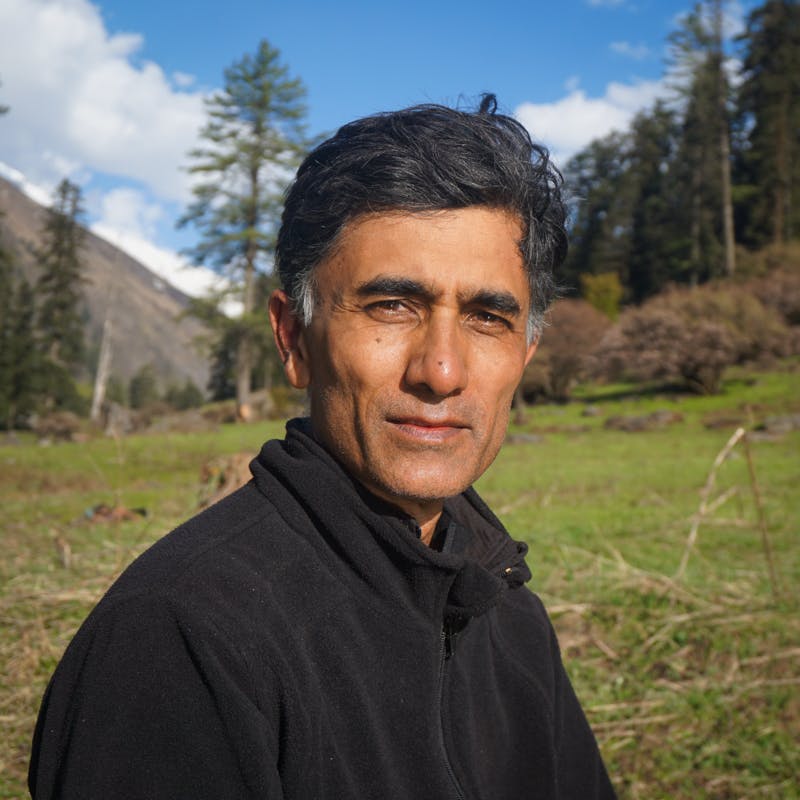
Arjun Majumdar
Founder, CEO, Indiahikes
About the author
An entrepreneur by profession and a trekker by passion, Arjun started Indiahikes in 2008 with a vision to explore and document new trekking trails. He wanted to solve problems in the mountains and implement sustainable ways of trekking. His biggest dream was and still is that Everyone Must Trek, because Trekking Transforms Lives. Today, Indiahikes takes over 20,000 trekkers in the Himalayas every year and has changed the face of trekking in India. Arjun is deeply respected for his expertise on trekking trails and entrepreneurship. He has written extensively for Discover India magazine and is a TedX speaker. He frequently talks at institutions about his journey, but his favourite topic is always the impact of trekking on the human mind, body and spirit.
Watch his TEDx talks here - TEDx Sayajigunj University on how Trekking Impacts The Mind, Body and Spirit TEDx IIM Bangalore on 3 Unusual Lessons In Entrepreneurship TEDx IIM Sambalpur on Why Children Must Trek
Upcoming Treks

Ali Bedni Bugyal Trek
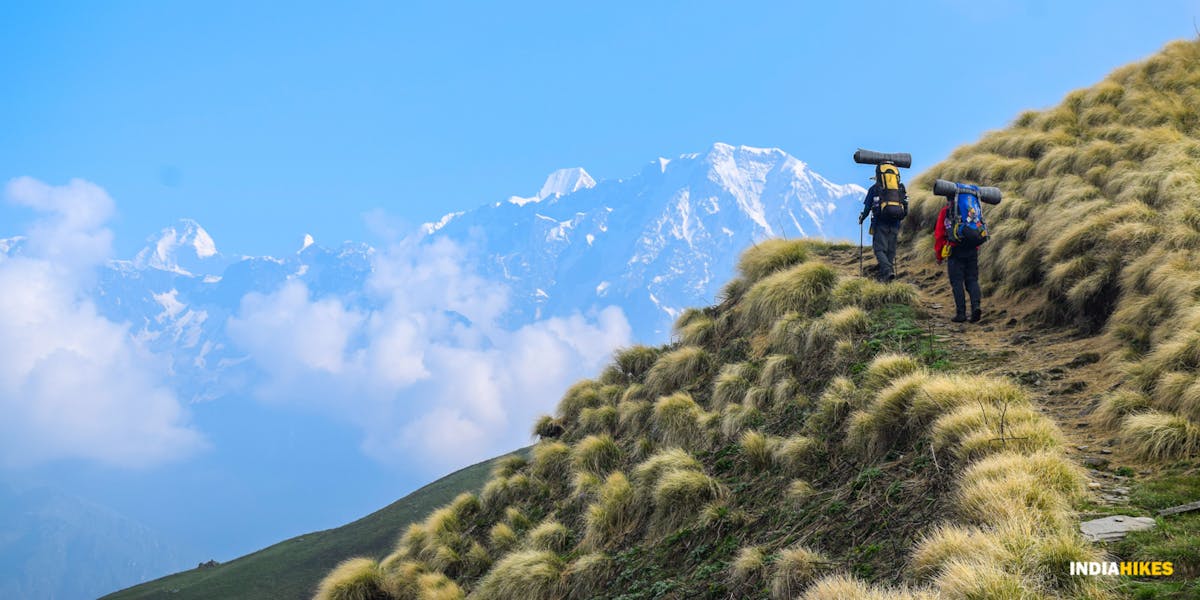
Ranthan Top Trek
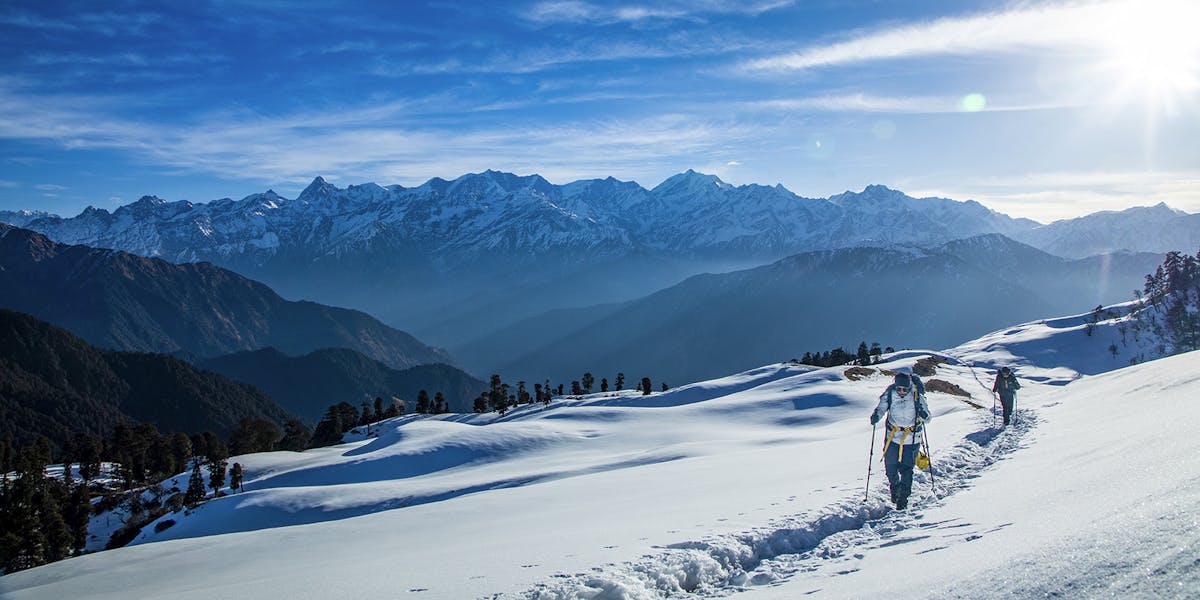
Dayara Bugyal Trek
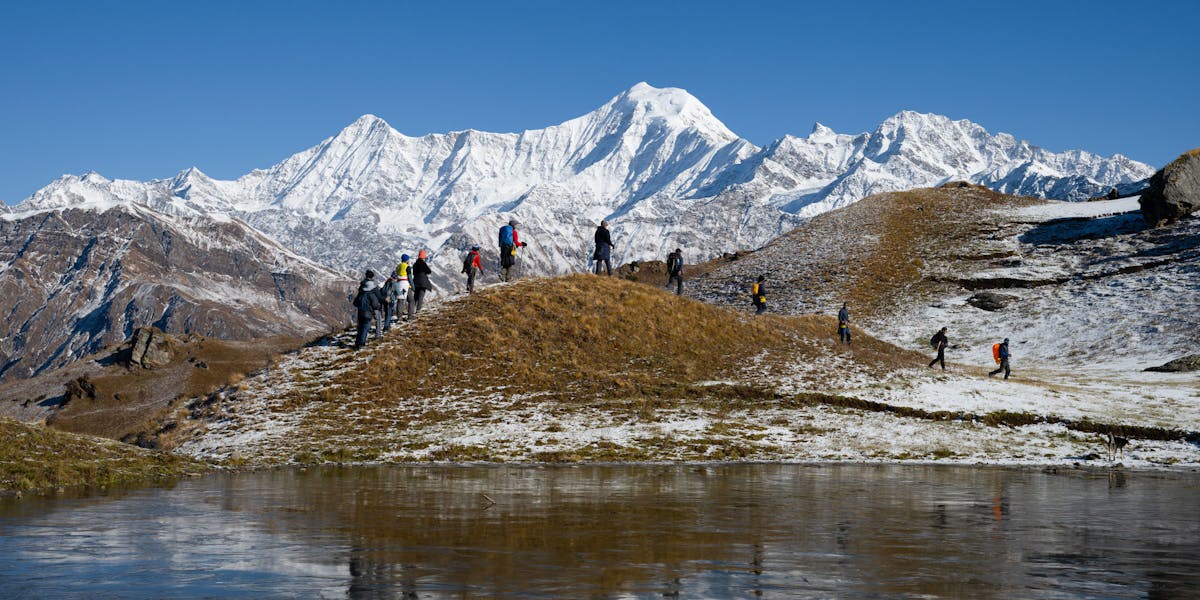
Related Videos

How to get fit for a trek

A Fun Warm Up Dance For Your Trek
Sign up for our much loved Weekly Mailer
We have terrific trekking tips, trek updates and trek talks to look forward to
Treks by Season
Treks by month, treks by difficulty.
- Easy - Moderate
- Moderate - Difficult
Treks by Region
- Uttarakhand
- Himachal Pradesh
- Lahaul and Spiti
- West Bengal
- Chhattisgarh
Treks by Duration
Special treks.
- Family Treks
- Stargazing Treks
- Senior Treks
- Adventure Therapy
- Summer Camps
- Youth Camps
- Cancellation policy
- Work with us
- Our sustainability practices
- Privacy Policy
- Terms & Conditions
080 468 01269 Mon to Sat - 9.30 AM to 7.30 PM Sun - 9.30 AM to 6.30 PM
Bengaluru Office
139, Defence Colony Road, Defence Layout, Sahakar Nagar, Bengaluru, Karnataka 560092
Dehradun Office
No.85/10, Neshvilla Road, Dehradun - 248001
© 2024 Indiahikes Private Limited
All images are copyrighted by their respective authors.
Stok Kangri Trek
Available batches, brief description.
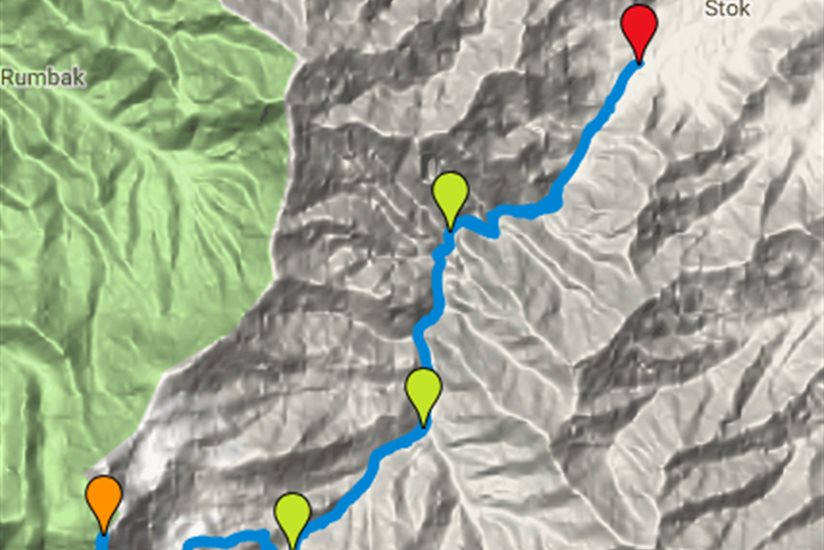
Brief Itinerary
Detailed itinerary, what's included.
- Camping during the trek and Guest House/Hotel Stay on twin / triple sharing basis in Leh (Day 1, Day 2, Day 3 & Day 8)
- Mountaineering course certified Trek Leader with First Aid certification & customized rescue course from NIM
- Trek Meals (Starting Lunch on Day 3). 4 meals during Trek
- Technical equipment - as required, depending upon snow conditions
- Trek Permit Fee / ALTOA Fee (Upto the amount charged for Indian nationals)
- First aid medical kits and oxygen cylinder
- Qualified & experienced Guide and Support staff
- Transport from Leh to Road head and return
What's Not Included
- Meals during Hotel Stay in Leh
- IMF Permit Fee for Foreign Nationals (approximately USD 75 per person)
- Environmental Fee & Wildlife Permit Fee
- Meals during road journeys
- Any kind of personal expenses
- Any kind of Insurance
- Mules or porter to carry personal luggage
- Anything not specifically mentioned under the head Inclusions
Are you Eligible for this Adventure?
Max Altitude

BRS Level Required
Stok Kangri Trek is a level 6 adventure on the Bikat Rating Scale.
This makes it mandatory for you to have high-altitude experience of preferably multiple treks marked at level 5 on the BRS. The altitude, the terrain and the nature of the climb demand a certain level of skill and a need for you to be aware of how your body reacts to the various features of high altitude environment.
If you do not know what level of BRS trek would suit you best, worry not! Fill out this Form:

we will send you a progression chart to help you comfortably get out of your comfort zone in order to level up and ultimately reach your highest potential in the big, bad world of outdoor adventure.
Packing List
This is a list of essential items for individuals doing the trek with Bikat Adventures. This list contains only those items which the participants are required to bring with them. The list excludes those items which are provided by Bikat Adventures on the trek. We have divided the items into five categories. All the items in the list are essential except for those marked as optional.
Trekking Gear
- Ruck sack bag with rain cover. Qty -1
- Day Pack Bag - Recommended for treks with summit day
- Head Torch with spare Batteries. Qty -1
- U V protection sunglasses. Qty -1 Here is how you can choose the best sunglasses for trekking.
- Water Bottles: 2 bottles of 1 liter each
- Non-skid, deep treaded, high-ankle trekking shoes Qty -1
- Pair of light weight Slipper/Sandals Qty -1
- Quick Dry Warm lower or Track Pants. Qty - 2
- Full sleeves T-shirts/ Sweatshirts. 1 for every 2 days of trekking
- Pair of thick woolen socks. 1 pair for every two days of trekking
- Thermal Body warmer Upper & Lower. Qty-1
- Undergarments. Qty - 1 for every day of trekking
- Warm jacket closed at wrist & neck .Qty-1
- Full sleeves sweater. Qty -1
- Rain wear ( Jacket & Pants ) . Qty-1
- Pair of waterproof, warm gloves. Qty-1
- Woolen cap. Qty-1
- Sun shielding Hat. Qty -1
- Personal toiletries kit (Small Towel, Toilet paper, paper soap, Bar soap, toothbrush, toothpaste, cold cream, etc.)
- Sun screen lotion small pack. Qty -1 Here is your Sun Protection 101 to stay safe in the bright sunny outdoors.
- Lip Balm small pack. Qty-1
- Small size, Light weight & Leak proof lunch box. Qty-1
- Plate. Qty- 1
- Spoon.Qty-1
- Tea/Coffee (plastic) Mug.Qty-1
Miscellaneous
- Camera (Optional)
- Carry your medicines in plenty in case you have any specific ailment. Consult your doctor before joining the trek.
- Dry fruits, Nuts, Chocolate bars (Optional)
Frequently Asked Questions
Eligibility, experience required, requisite skills, fitness benchmark.
- Jog/Run for 5 Kms in 25-30 mins Or Walk continuously for 10 kms (with 3-4 small breaks) on plain terrain (slight incline is better) - You would be required to produce a screenshot from a fitness app testifying the same
- Hold your breath for 40 seconds
- 3 sets of Climbing 30 – 40 steps in one stretch, Push Ups – 10, Lunges & Squats – 15 X 2 sets
About the activity
Why should i go for this trek, stok kangri trek - ladakh, best season, what are the best months to visit this trek, how should i pack my rucksack.
How should I select my trekking shoe?
What to pack
Connectivity
How to reach the base of the trek & how to go back from the end point, what is the cellular network connectivity for this trek, nearby attraction, what are the nearby attractions that i can explore, what is the minimum & maximum age limit, accommodation, what will be the accommodation type in this trek, equipment and facilities, what kind of tents and sleeping bags will be provided to us, are there any washroom/toilet facilities on the trek, if we trek in snow, what equipment will you provide, what kind of food will be provided for the trek, what equipment can i rent from you, what gear and equipment will be provided to us, weather conditions, what will the temperatures be like during this trek, when will there be snow on this trek, what clothing do i need for this climb, is there an option to offload my backpack, who will lead us on the trek, is the trekking pole necessary, are there any local stores/shops from where i can shop trekking necessities, is it safe for a solo woman traveller to trek in fixed departures, will you give certificates on completion of trek, in case we opt for the transport with you, where will you pick us from and where will you drop, what time will you drop us at the end point on last day of the trek, mandatory documents, what are the mandatory documents required for the trek, international travel, will i need a visa, when should i apply for the visa, what kinds of insurance do i need for climbing this peak, where is this peak located, do i need a permit to climb this peak, what route is the best to climb this peak, how is this climb different from the mountains in india, is it a technical climb, what are some of the climb’s highlights, do i necessarily need a guide to climb this peak.
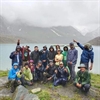
Small Group Size
Our batch sizes are capped at 15 for smaller treks with the trek leader and trekker ratio of 1:8. This ratio, in our years of experience, has proven to deliver the best trekking experience for individuals as well as groups. Capping the size of the group ensures individual attention to each trekker so that no signs of distress or need during the trek go unnoticed. It also helps to form a more cohesive cohort with better group energy which helps define the rhythm and pace of days on the trek. As you go higher up on the BRS scale, since the stakes are higher, expeditions have an even smaller group size with the ratio of expedition leader to climber set at 1:2.
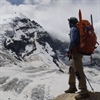
Qualified Trek Leaders
We follow a rigorous regime of hiring and training our experts in the field. Each trek leader is a certified mountaineer with years of experience in the field. In addition to their qualification, they also go through practical and situational training to tackle any and all kinds of sudden conditions that may present themselves on the ground. Being unpredictable is the core nature of the mountains but being ready for any circumstance as best as possible is a controllable asset that we try to nurture. Our field experts are also trained in basic medicine and first-aid response. Watch: Forerunners - The Making of A Trek Leader At Bikat Adventures
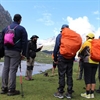
Guided Progression
Since Bikat Adventures is a learning-based organization, we help you climb up the ladder of difficulty within the sphere of outdoor adventure systematically. Our on-ground training modules are designed to handhold you through the upskilling process so that you are ready to take on bigger challenges.
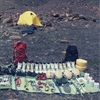
Equipment Quality and Check
All the gear used on our treks and expeditions is tried and tested, maintained for good quality, and is overall top-notch in quality and condition. We are continually looking to obtain the best of everything there is in the market so as to ensure optimum safety.
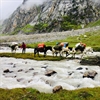
Support Systems
Along with the staff you see on-ground, we have a team of superheroes working in the background to give you the best experience possible. Our background team also comprises local staff from each area who know the region best. Having local support helps with studying the area, pre-planning, execution, and in receiving timely support in case of emergencies in these remote locations.
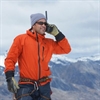
Communication
Our on-field staff is in constant contact with our teams based in primary locations so as to eliminate any avoidable delay in reaching additional help and support when required. We try to use the best tools for communication available, including satellite phones, in regions where they are not restricted.
What our customers Say

Cancellation Policy
Cash refund
Cancellations up to 30 days prior to departure date
5% deduction
Cancellations between 30 days to 15 days prior to departure date
50% deduction
Cancellations within 15 days prior to departure date
Voucher refund
Cancellations up to 5 days prior to departure date
No Deduction
Cancellations within 5 days prior to departure date
- Cash refund is applicable only in case of bookings made without using any promotional offer code or vouchers
- This is only a brief of cancellation terms. For finer details please refer Detailed Cancellation Policy.
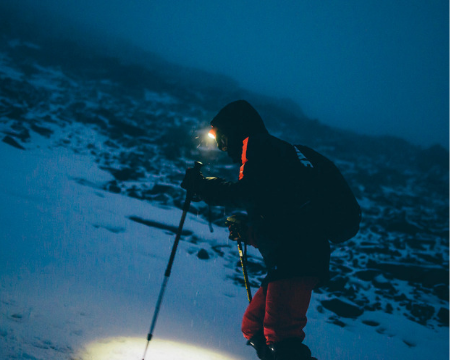
Subscribe for latest updates & offers
Similar adventures, enter your email, events by categories.

Mountaineering

Scuba Diving
Events by months.
- January July
- February August
- March September
- April October
- May November
- June December
Events By Nights
- 5 & More Night
- Environmental Policy
- Privacy Policy
- Term & Conditions
- Work With Us
- Address: 303, 3rd Floor, Tower B4, Spaze Itech Park, Sector 49. Gurgaon
- Pre Sale - 7838148127 , Post Sale - 8588878499, 9667639126
Bikat Adventures
- Cancellation & Refunds
- Content Sharing
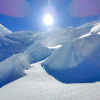
© 2024 Bikat Adventures - All Rights Reserved
Powered by: novel knett software solutions, submit enquiry.

Stok Kangri Trek
Stok kangri.
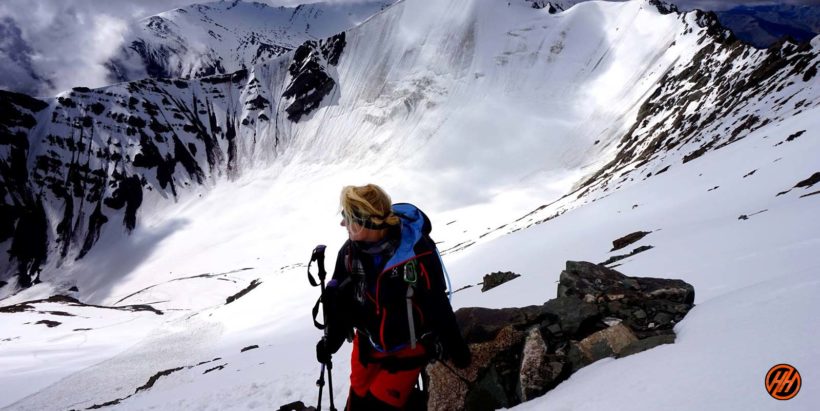
Description
Reviews (0), things to take, available dates, include / exclude, stok kangri trek a demanding traverse amid towering himalayas.
Stok Kangri top most expedition trek in the Leh or Ladakh , Towering peaks all around with deserted landscapes, Stok Kangri peak has become popular in past few years. Moreover, Located at Leh in Ladakh, it lies 6, 153 meters ( 20185 feet ) above the sea level. Thus, every year this place is chosen by many tourists as a great trekking destination. Therefore, this place has seen footsteps of people from different areas of the world. Leh base camp of the Capital of Ladakh state at the altitude 3500 Meter of sea level.
Leh is starting point of Stok Kangri trek or Chadar Trek you can see Zanskar or Indus valley , Stok Kangri is one of most popular Expedition this is not simple trek. This trek provide to you opportunity to more experience the completed trek , on the trek entire trail has beautiful and ridges, so you can feel the sudden changes.
Explore the Himalayas in Stok Kangri Trek
Furthermore, explore the natural and cultural beauty of Leh. In addition, the trail will take you through Stok village which is very famous because the recent king lives there.
Thus, feel the tranquil environment of Ladakh and know deeply why it is called “Cold desert”.
Summit Views are such worthy! Reach the top after traversing glaciers, steep slopes and last summit ridge and come across wide surroundings, witness the best views of Karakoram Range, Zansker and Sansker Kangri.
About the Stok Kangri Trek
Reach the Leh base camp spend some time in Leh need to proper Acclimatization –
Day 1 Easy Arrival from Delhi to Leh , meet our trek team enjoy some time around Leh market , Leh market one of the beautiful market .
For completing this trek you will have to be physically fit .
It is difficult to cover the last point top of the hill because it is difficult to breathe due to being extremely high .It is long trek of 8 days and end of the same trek is also the same with Leh .
It also requires experiences to cross this trek .in the month of July to August you can trek on the Stok Kangri trek .
At this time the maximum snow is melted and you can see the clear top of the mountain.
Ladakh and Leh which are located in India has become the favorites trekking destination of trekkers all over the world which consist of snow filled mountains, cold deserts and beautiful shining lakes which attract the people towards their natural beauty.
It is considered the best trekking place for trekkers .
it is also famous for interesting sports like mountain biking and river rafting etc.
From Leh and Ladakh many trek and expedition were carried out as it was base for many treks and expedition .Stok Kangri trek is one of the trek carried out from here .it is situated at the height of 20,153 feet .
It is considered very difficult and challenging trek currently this trek attract attention of many trekkers.
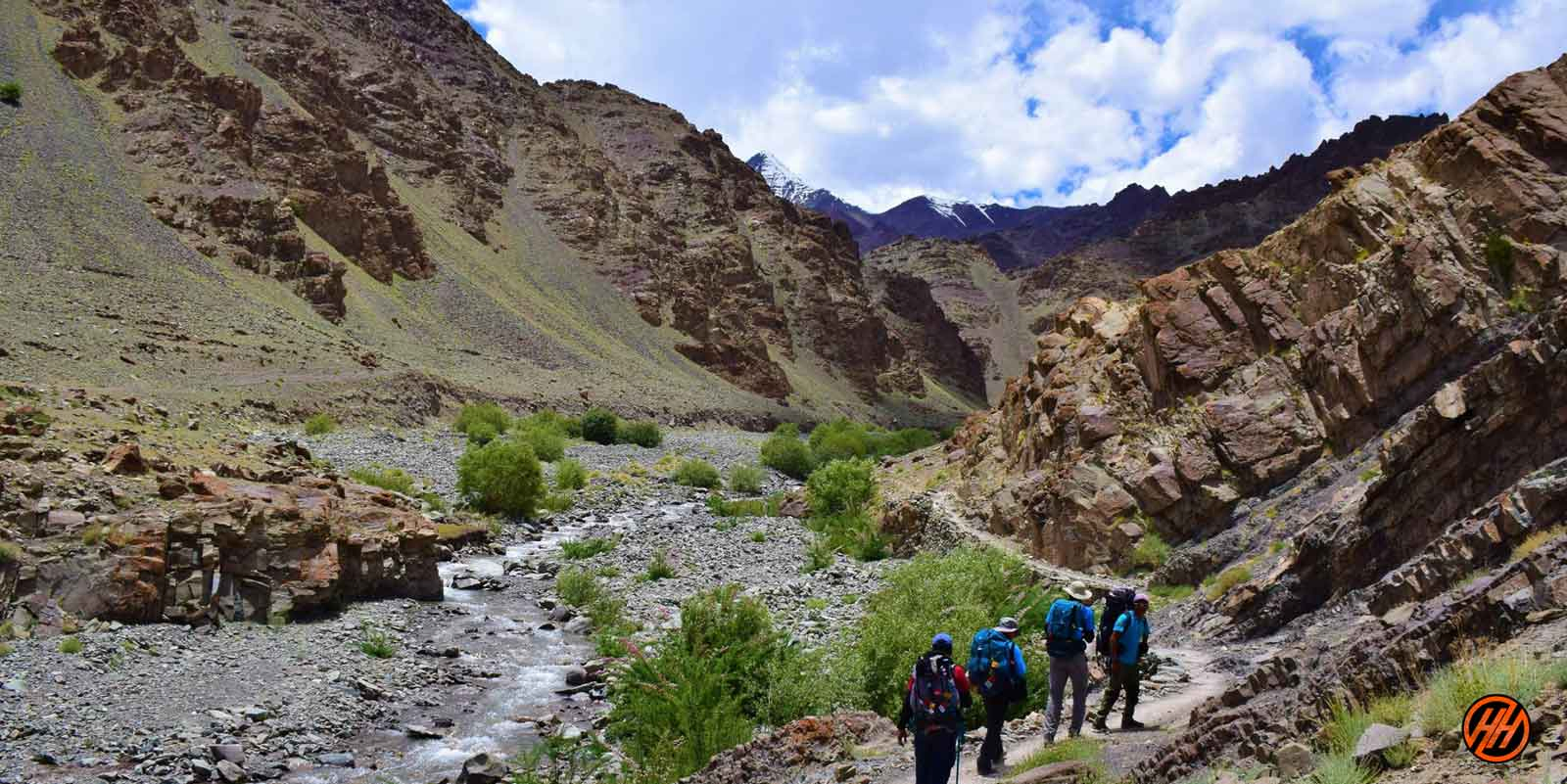
In your bag pack you should have the following things.
Rain cover, Energy bar, Water bottle, Medical kit and toilet paper .You should have one trekking stick and torch. Comfortable clothes like t-shirt and trekking pant.
Keep thermal and water proof jacket along with you to protect yourself from cold and good quality Shoes .
First to the third day after you reach Leh, you have to spend one to two days here. After that you can visit to see some places like Shanti Stup, Pengone Lake and Thicky Muth etc.
On the third day you will start your trek by moving toward Stok village on the way to trek you will get to see beautiful places. The destination point on the trek is change Ma.
It is situated at the height of 13,087 feet from Stok village .the king of Ladakh lived in this village that’s why you will get to see tradition of king times . After reaching Chang Ma you can camp here and take rest.
Why to Choose Stok Kangri Trek?
Before heading towards the itinerary, it is really essential to perceive the reason behind choosing Stok Kangri trek.
See firstly, the trekking distance is a total of by taxi 30 Km and on foot 33 km which is to be covered into 07 nights 8 days. . Leh to via stok village, base camp or Stok Kangri summit
Stok Kangri trek is a high altitude mountain trek Altitudes is 6,153 Meters (20,153 feet)
The Starting trail is moderate as compare to other treks this is difficult trek. So this trek is not for beginners
Need proper gear & clothing for sub-zero temperature?
You got to see so many heavenly bodies at one place like the panoramic view of the Himalayan ranges Leh or Ladakh valley
I think Do spare time in Interaction with our local’s team, and you will get to know about some of the ancient tales of Indian mythology and our local cultures, this is good ideas for trekkers
Beautiful landscapes so carry proper photo gear & Extra battery backup.
The backpack should not exceed 10 to 12 kg only
So, choose a camping spot wisely after properly analyzing the area.
Alcohol and smoking is not allowed in during the trek
High Altitude requires proper acclimatization. Of base camp Leh
Getting to Himalayan Hikers Base Camp Leh
By Air Delhi to Leh Direct flight Best Option
Note: – Delhi to Leh direct flight available by Indian Airlines and Jet Airways is the most convenient, meet out team check –in Hotel
Altitude we are going to cover in Stok Kangri Trek
Leh – 3500 Meters
Chang Ma – 12,959 feet
Man korma camp (14,271 feet)
Base camp of Stok Kangri (16,076 feet)
Stok Kangri Summit (20,153 feet) (6,153 Meter)
ATM Point & Mobile connectivity in Stok Kangri Trek
ATM POINT: Hi trekker ATM available is Leh Withdraw money before your journey,
Mobile Connectivity: There will be available all networks only post paid
Key Points Stok Kangri Trek
Duration: – 7 Nights 8 Days Leh to Leh
Base camp: – Leh
Temperature:- Day 5°C to 10°C) Night 2° C to -3° C
Stok Kangri – Altitude: – 6,153 Meter
Best Time: – July, August, 2020
Trek Level: – Difficult
Trek distance: – On foot 57 Km – By taxi 140 km
Group Size: – minimum 5 people maximum 12 people
Short Itinerary of Chadar Trek
Day.1 – Reach Leh by Air today is your Reporting day in our hotel (3500 Meter) – night stay hotel
Day.2 – Rest Day for Acclimatization explore some time Shey Monastery and Thiksey monastery and hall of fame Leh market night stay hotel
Day.3 – Drive from Leh to Stok Village (15 km) same day trek to Chang Ma (05km) (4/5 Hours) (12,959 feet) overnight stay camp
Day.4 – Trek from Chang Ma Camp to Mankorma camp (04 Km) (3/4 Hours) (14,271 feet) overnight stay camp
Day.5 – Trek from Mankorma camp to Base camp of Stok Kangri (04km) (3/4 Hours) (16,076 feet) overnight stay camp
Day.6 – Rest Day for proper Acclimatization
Day.7 – Trek from Base camp to Stok Kangri Summit (20,153 feet) (6,153 Meter) back to camp (07 km) (11/12 Hours) over night stay camp
Day.8 – Trek from Base camp to Stok Village (13 km) (8/9 Hours) same day drive to Leh
Day 1 : Reach Leh by Air today is your Reporting day in our hotel (3500 Meter) – night stay hotel
Day 2 : rest day for acclimatization explore some time shey monastery and thiksey monastery and hall of fame leh market night stay hotel, day 3 :drive from leh to stok village (15 km) same day trek to chang ma (05 km) (4/5 hours) (12,959.
Trek Distance – 20 km – 4/5 Hours journey
Mode of journey – By taxi – 15 km – On foot – 05 km
Altitude – Chang Ma – 12,959 feet
Night Stay – our Camp – on twin/three share basis
After breakfast today and in further days of the trek, you are going to witness some pictorial places of Leh which are no less than heaven. Enjoy the drive towards Stok village through beautiful green trees and exotic scenic beauty.
Stok village is famous because recent king of Ladakh lives here. Start the trek to Chang Ma, the climb is strenuous. The campsites are a wide open land, set up your tents and retire for the night.
Day 4 : Trek from Chang Ma Camp to Mankorma camp
Trek Distance – 04 km – 3/4 Hours journey
Mode of journey – On foot
Altitude – Mankorma camp – 14,271 feet
Night Stay – Camp – on twin share basis
On this trek you pass through the barren landscapes of Ladakh. Start the trek from Chang Ma, walk along the river and pass through cold deserted area by crossing small clear streams. Setup your camps at Mankorma and retire for the night.
Day 5 :Trek from Mankorma camp to Base camp of Stok Kangri
Trek Distance – 04 km – 3/4 Hours journey
Mode of journey – ON foot
Altitude – Base camp – 16,076 feet
Base camp is a grassy field with many streams and small lakes, the views are clear from the upper side of campsite, go there and relish the views of Parcha Kangri and Gulab Kangri with many other rising peaks.
The temperature lowers here and you will have enough time to acclimatize. Setup your camps and retire for the night.
Day 6 : Rest Day for proper Acclimatization
Today you can explore the nearby places and train yourself for difficult trek. Know about the weather conditions and the guides will let you know about the trail and technical equipments
Day 7 : Trek from Base camp to Stok Kangri Summit (20,153 feet) (6,153 Meter) back to camp.
Trek Distance – 07 km – 11/12 Hours journey
Mode of journey – on foot
Altitude – Stok Kangri Summit – 20,183 feet
Wake up early, to start the climb. Stok Kangri peak, with your technical sport Today is the main day of your trek, so be ready at 4:30 am in the morning to witness sunrise from Stok Kangri summit. Nothing can be better than watching rising sun from the summit because then the views are jaw dropping. Whoever watches it gets mesmerized.
Light breakfast will be served at 4:30 am then the trek with start. It is important to use headlamps. Trekking in dark is really fun but only with professional guides. Soon you will reach just below the Stok Kangri summit.
Prepare your things and start the ascent. The climb is going to be strenuous and long and the trail takes you through glaciers, sheer slopes and high ridges.
To reach the summit start climbing a high ridge, cross this section and you will come across wide surroundings, witness the best views of Kara koram Range, Zansker and Sansker Kangri. Descent to the base camp and retire for the night.
Day 8 : Trek from Base camp to Stok Village (13 km) (8/9 Hours) same day drive to Leh
Trek Distance – 28 km – 8/9 Hours journey
Mode of journey – By taxi – 15 km – On foot – 13 km
Night Stay – Our campsite – on twin share basis
I hope all trekkers coming with good experiences and memories leave the base camp and today is the end day of this trek. Look at the beautiful snow clad mountains and high towering peaks then start your trek from base camp to Stok village.
Descent with care and reach the village, it is the end point of this trek. From here the drive is back to Leh.
Mandatory Documents
Please carry the documents given below.
Original and photocopy of government photo identity card- (Aadhar Card, Driving License, Voters ID, etc, Passport and Visa important to foreigners Medical Certificate (First part should be filled by the Doctor and Second part by the Trekker) Declaration Certificates
Note: – Many trekkers commit the same mistake of carrying unnecessary items on a trek which only makes the backpack heavy. It is important to know the right items to carry. It differs from season to season if you are trekking in summers then carry less layers of warm clothing and if you are trekking in winters carry enough layers to protect yourself against chilly cold.
Necessary Items for trekkers

Backpack (50 to 60 liters) A strongly built backpack with good support is compulsory for a trek. (Rain cover is important)
Sturdy Trekking Shoes The shoes should be strong enough with good support. The people ask if sports shoes would be comfortable but it is good to bring the right trekking shoes.
The Clothes You Should Bring On a Trek Avoid keeping extra clothes because it only makes you backpack heavy.
Trek Pants – The jeans are never suitable for a trek so you need at least 2-3 trek pants for treks carry more for longer treks.
Jacket – Jackets are very important to carry on a trek it protects you against the chilly weather. So carry 2 jackets on a week long trek.
Layers of warm Clothing Carry warm woolen layers or fleece. Carry more layers during winter season (at least 2 to 3) and less during summer.
Thermals – The Temperature decreases at night so you might be need thermals for Night.
T- Shirts – Bring those t shirts which dry fast.
Poncho –They are needed if you are trekking on a Rainy day to keep you dry.
Hiking Pole
Water Bottle 2
Cap or Balaclava
Woolen and Waterproof Gloves
Socks (Woolen and Regular)
Torch head light
Personal Toiletry Items – (toothpaste, toothbrush, toilet paper, sanitizer etc.)
Carry Personal Medical Kit
Personal Medical Kit (Carry minimum 5 tablets and maximum 10)

Diamox – (Prevents altitude sickness)
Digene – (It cures discomfort in stomach, acidity)
Crocin Advance – (Cures fever and headache)
Aspirin/Combiflam – (Pain reliever)
Disprin – (Cures headache)
Avomine – (Prevents motion sickness)
Avil – (It treat allergies)
Norflox TZ & Lomofen – (Prevents Diarrhoea)
Ranitidine – (Reduces the amount of acid in stomach)
Volini/Moov spray – (For sprains)
Betadine/Savlon – (Antiseptic cream)
Stretchable/Elastic bandage
Note:- Use medicines only when prescribed by the doctor. In case you face any problem during your trek, discuss and take advice from the Professional guide.
Sorry! Here are no Available dates right now. For Any Queries you can Email us with [email protected] and Call Us +91 9756197558
What is Included In This Trek?
Transport Facility
Forest Permit and entrance fee
Accommodation in Hotel Leh
Accommodation in tents on twin share basis
All meals: breakfast, packed lunch, tea, coffee, snacks, soup and dinner
(All camping gears)
High quality tents
Sleeping bags
Separate Toilet tents – Ladies and Gents
Dining Tent
Dining Table
Kitchen team
Radio Walkie Talkie for Communication
Good Experience Trek Leader guide and Technical guide
Medical Kit
Oxygen Cylinders
What is Not Included In This Trek?
Personal Insurance
Medical Certificate
Personal toiletry Items and Personal Medicine kit
On first day En Route to base camp the Breakfast and Lunch are Not Included
Last Day En Route Lunch and Dinner are Not Included
There are no reviews yet.
Your email address will not be published. Required fields are marked *
Name *
Email *
Save my name, email, and website in this browser for the next time I comment.
Related Tours
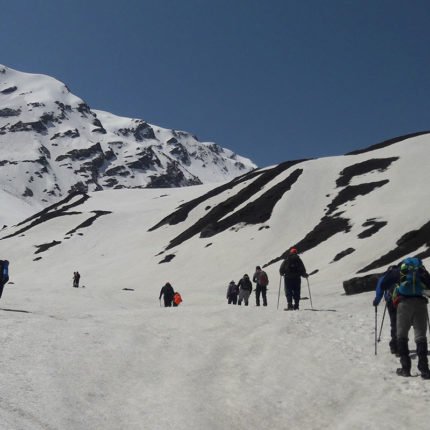
AUDEN’S COL TREK
Auden’s Col trek is a high altitude trek In Uttarakhand
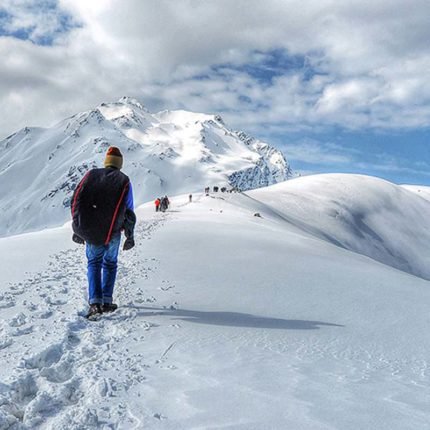
Chanderkhani Pass Trek
Chanderkhani Pass Trek a great beginner Trek in Himachal
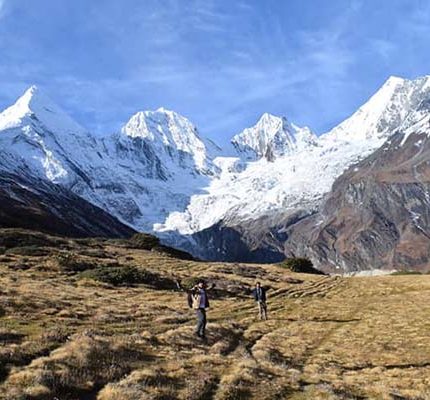
Panchachuli Base Camp Trek
It is lies in Eastern Kumaon Garhwal region of Uttarakhand Himalayas.
Price: ₹ 22,000.00
Book the tour
Book your trek.
- Overview Itinerary Dates Include/Exclude
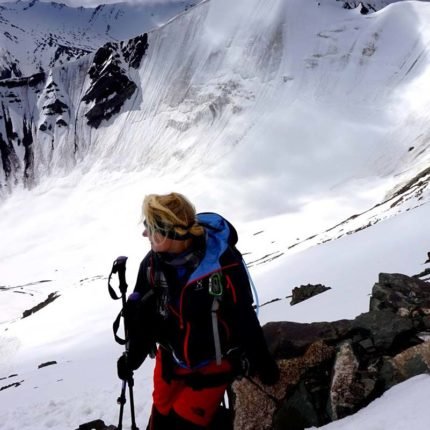

Stok Kangri Trek
The stok kangri trek itinerary, day 1 arrival at leh,.
The journey of your trek to Stok Kangri begins with your arrival in Leh
Take rest and get acclimatized
- Altitude – 3500 meters
Day 2 Acclimatization and Exploration of Leh
Take a gentle walk around Leh town.
Head to the Shanti Stupa, a white-domed Buddhist stupa situated on a hilltop overlooking Leh.
Visit Leh Palace, an architectural marvel with stunning views of the city and the Indus Valley It’s a great place to learn about the history and culture of Ladakh.
Day 3 Drive to Stok Village and Trek to Chang Ma
Depart from Leh towards Stok Village. Enjoy the scenic drive, passing through picturesque landscapes, with the Indus River flowing alongside the road.
Once in Stok Village, Begin your trek from Stok Village towards Chang Ma. The trail initially leads through a narrow gorge before opening up to a wider valley.
Reach Chang Ma, your campsite for the night.
- Drive Distance – 14 km
- Drive Duration – 30 to 35 minutes
- Trek Distance – 5 to 6 km
- Trek Duration – 4 to 5 hours
- Altitude – 11,500 ft to 11,800 ft
Day 4 Chang Ma to Mankorma
Begin your trek from Chang Ma toward Mankorma
following the trail as it ascends through a rocky terrain.
The trail will take you through high-altitude terrain with stunning views of the surrounding mountains and valleys.
Reach Mankorma, your campsite for the night.
- Trek Distance – 4 km
- Trek Duration – 3 to 4 km
- Altitude – 13000 ft to 14100 ft
Day 5 Mankorma to Stok Kangri Base camp
Begin your trek from Mankorma towards the Stok Kangri Base Camp.
The trail will lead you through rocky terrain, winding its way upward. Take in the breathtaking views of the surrounding mountains.
Reach the Stok Kangri Base Camp, your home for the next few days. Take some time to rest and acclimatize to the higher altitude.
Spend the evening acclimatizing and getting used to the altitude. Take short walks around the base camp to help your body adjust.
- Altitude – 16,300 ft
Day 6 Acclimatization + training day
Embark on a short acclimatization walk around the base camp.
Attend a safety briefing conducted by your trekking guide.
Receive training on basic mountaineering techniques. This may include instruction on how to use crampons, rope techniques, ice axe usage, and self-arrest techniques.
Get a good night’s rest to prepare for the early start the next day.
Day 7 Stok Kangri Base camp to Stok Kangri summit back to base camp
your summit attempt on Stok Kangri. It’s a long and demanding day,
Start your day well before dawn, usually around midnight to 2 AM, to allow ample time for the ascent and descent.
Begin the trek towards the summit of Stok Kangri. The initial part may be steep and challenging, and the air will be thin. Take slow, steady steps.
As you approach the summit, you may be fortunate enough to witness a spectacular sunrise over the Himalayan peaks.
After the summit of Stok Kangri. Enjoy the awe-inspiring panoramic views of the surrounding mountains and valleys.
Arrive back at the base camp. Take off your equipment, and take rest</p>
- Trek Distance – 14 km
- Trek Duration – 12 to 13 hours
- Altitude – 20,180 ft
Day 8 Stok Kangri Base camp to Stok Village and drive to Leh
Begin your descent from the base camp towards Stok Village.
Take your time and carefully navigate the rocky terrain.
Arrive back in Stok Village,and stay overnight there
- Trek Duration – 5 to 6 hours
Day 9 Departure From Leh
start your day and drive back to Leh. Take in the scenic views along the way.
Day 2 How difficult is the trek & what are the challenges?
The stok kangri trek faq, where is stok kangri situated.
Stok Kangri is situated in the Stok Range of the Himalayas, around 15 kilometers southeast of Leh, the capital of Ladakh.
How many days it will take to do this trek?
The trek typically spans over a period of 8-10 days, including acclimatization days. This allows trekkers to acclimate to the high altitude gradually.
How Difficult Stok Kangri trek is?
The Stok Kangri trek is considered challenging due to its high altitude and unpredictable weather conditions. Trekkers should be physically fit and have prior experience with high-altitude trekking.
Whats the Ideal Time to do this trek?
The ideal time for the Stok Kangri trek is during the summer months, from late June to early September when the weather is relatively stable and the snow cover is reduced
What is the starting point of this trek?
The trek starts from Stok village and leads to Stok La Base Camp, crossing a high pass called Stok La.
About Wildlife?
The region is home to various wildlife species, including marmots, blue sheep, and occasionally even snow leopards.
How to reach Leh?
The cheapest way to reach from New Delhi to Leh is by train to Jammu Tawi, then a flight to Leh Kushok Bakula Rimpochee Airport which takes 13h 45m.
The fastest way to reach from New Delhi to Leh is a flight to Leh Kushok Bakula Rimpochee Airport which takes 1 hour 15 minutes.
Do you think I should bring some medicines along with me while on the trek?
Yes, it’s recommended to have your personal medicines and a simple first aid kit during any trek.
</div>
</div>
What are the best places to explore in Leh-Ladakh?
Explore leh-ladakh&amp;amp;amp;amp;amp;amp;amp;amp;amp;amp;amp;amp;amp;amp;lt;/h2>.
Pangong Lake: Journey 160 KM from Ladakh to reach the tranquil Pangong Lake. This world-famous tourist spot offers a range of activities, from camping to boating, against a backdrop of mesmerizing natural beauty.
Nubra Valley: Nestled between the Nubra and Shyok Rivers, Nubra Valley, often called the ‘Valley of Flowers,’ captivates visitors with its scenic vistas and cultural richness. From the ancient Diskit Monastery to charming Hindu temples, there’s much to explore.</p>
<p> Hemis Mon
astery:&lt;/b&gt; Hemis Monastery, situated near Hemis National Park, is one of India’s most renowned Buddhist monasteries. It’s famous for the annual Hemis Festival, a five-day celebration honoring Padmasambhava. Getting to this monastery is an adventure in itself, with breathtaking scenery and thrilling pathways along Pangong.
Shanti Stupa: Perched on a Chanspa hilltop, the white Shanti Stupa features a large Buddha sculpture. Part of the Peace Pagoda Mission, it’s renowned as one of the world’s top Buddhist sites. Inaugurated by the 14th Dalai Lama, it exudes serenity and a sacred atmosphere.
Gurudwara Pathar Sahib: This revered place is associated with Guru Nanak Dev Ji. Legend has it that a demon threw a rock at the Guru while he was meditating, and the boulder with imprints of his body parts is enshrined here.
Thiksey Monastery: Perched on a hill, this beautiful monastery belongs to the Gelug sect of Tibetan Buddhism. Dating back to the 1400s, it houses small temples, Buddhist relics, and nunneries. It’s not just a place of worship but also a spiritual haven for over 500 meditating monks.
Local Markets: Leh’s local markets are a treasure trove of souvenirs. Visit the Tibetan Market in the Main Bazaar to shop for spices, handicrafts, snacks, and more.
Khardungla Pass: For a scenic mountainous escape to Nubra and Shyok Valleys, journey along the 47.2 km Khardungla Pass, perched at an elevation of 17,852 feet. Marvel at panoramic views of the Himalayas and the Karakoram Range.
Why trek with Himalaya Shelter?
“I have been doing treks with Himalaya Shelter for the last two years and they are awesome people with pure humbleness.“
Writes Priyesh.
We at Himalaya Shelter consider our trekkers part of our community, a family of sorts and really understand the efforts that you put into taking that much-needed break and setting off to the mountains. Some of you may wait for months and even a year to plan out that perfect excursion. That’s why we want it to be “a perfect excursion” for you.
Our testimonials (read below) are a testament to our service-oriented mindset.&amp;amp;amp;amp;amp;amp;amp;amp;amp;amp;lt;/p></p>
fety into great consideration and ensure our team is trained to handle emergency situations.
For a better experience, we provide accommodation on Twin Sharing throughout the trek. With most trekking operators you would get triple or even quad sharing accommodation.
Our Accommodation will have attached washrooms
Furthermore, we provide the essential safety gear for your trek –
Without any additional charges.
We pamper you with great food which keeps you going on the trek. (On our google maps out of 300 reviews over 80 Trekkers mention great food😋)
We do not outsource services to ensure topmost quality throughout your journey. We use our own fleet of Vehicles to ferry you to the base camp and return.
How to Get Fit for this Trek?
Daily 60 minutes of jogging before one month of trek
Daily 60 minutes of running before one month of trek
Yoga and Surya Namashkar for flexibility
Is permission required for this trek?
You do not need a permit to visit The Spituk Trek if you are an Indian citizen
What is the total distance of this trek?
The total distance of this trek is approximately 40 km
What is the best time to do the trek and how is the weather?
What are the top highlights of the trek.
There are no reviews yet.
Your email address will not be published. Required fields are marked *
Your review *
Name *
Email *
Save my name, email, and website in this browser for the next time I comment.
The Stok Kangri Trek Inclusions
- Accommodation for a total 8 Nights
- Meals from Day 1 Dinner to Day 9 Breakfast will be served. Veg Meals with Egg options can be served. Jain meals can be arranged on request.
- Certified Trek Leader, Cook and Support Staff
- Forest Permits
- Camping Equipment including tents, kitchen & dining tents, toilet tents etc Gaiters, Microspikes
- Your designated hotels may not reopen by the time you reach there. While we are making alternate arrangements, do understand that things may not be as “tip-top” as our designated hotels.
- The gurudwara, Hemkund Sahib may not be open. While we are trying to take permission to go to Hemkund Sahib, if it does not happen, then do understand that the pandemic has put restrictions beyond our control.
The Stok Kangri Trek Exclusions
- Any Add Ons apart from the inclusions above
- The bag offloading charges are INR 800 per bag per day
Upcoming Treks
- 17-07-2021 to 23-07-2021 open
- 17-07-2021 to 23-07-2021 close
Send Request
Your query has been successfully registered. we will contact you within 24 hours., something went wrong.try after sometime..

- Treks in Himachal Pradesh
- Treks in Uttarakhand
- Treks in Sikkim
- Treks In Jammu & Kashmir
- Uttarakhand
- Himachal Pradesh

Stok Kangri Trek Guide 2024: Highlights, Best Time and Itinerary
Table of Contents
One of the most alluring places on the planet is Stok Kangri that lies in the beautiful area of Ladakh. Ladakh is located in the Jammu and Kashmir state of India and is famous for the kindness and support of its inhabitants. Leh the joint capital of Ladakh is situated at the height of 3500-3800 m above sea level and is the most preferred place for the trekking lovers. Trekking in Leh is the ideal option for trekking in India and hence it attracts tourists from every nook and corner of the world.
Stok Kangri is one such peak that has gained tremendous popularity in the last few years. Illustrating the Himalayan range with a broader perspective, this trek embraces deserted surroundings and offers its trekkers the opportunity to experience the complete serenity. The entire trek trail has incorporated many hills so you can feel the sudden change in scenery.
In winter, the whole landscape attains a perfect splendour. Stok Kangri peak provides you a complete view of Zanskar and the Indus Valley.
About Stok Kangri Trek
Just imagine that crossing several obstacles, climbing on the lofty slopes, withstanding sunny mornings to severe snowstorms, and walking past winding tracks towards the 6153 meters is what it takes to do the Stok Kangri Trek. Therefore such a trek is only and only meant for those amateur and experienced trekkers that have one or two trekking experiences above 5000 meters and also, wish to experience the ultimate thrill and excitement.
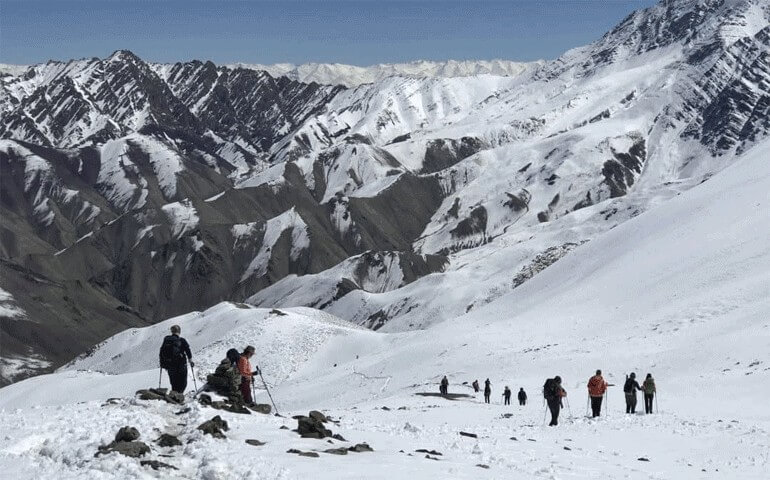
Seven days of challenging trek through the magnificent Ladakh Mountains will push you to the limit. Stok Kangri, situated at about 20,128 feet above sea level, is the highest peak in its namesake range of the Ladakh Himalayas. Before you start the expedition, you get a whole day just to stroll around in Leh, a beautiful and culture-rich town. You then travel to the old village of Stok, where you will reach after a drive through tortuous mountain roads lined with birch trees. The elevation gain will begin right from the moment you start the journey from the village. You will first travel to Chang Ma, where you will find your tents set-up on lofty slopes at an altitude of around 13000 feet.
The next day you shall continue your Stok Kangri expedition and make for Mankorma. This is among the most scenic of journeys as, along with it, the mountains will keep changing their colour depending on the amount and angle of sunlight. Mankorma with its flat terrains provides a pretty contrast to the steep slopes of Chang Ma. At night, the Orion arm of the Milky Way galaxy with millions of shining stars is clearly visible from here. Wake up in the morning and get ready for a tough part of your expedition. The decreasing oxygen levels, rising cold temperatures, and increasing altitude will make you utilise all your mountaineering skills.
This section of Stok Kangri trekking will take you to the base camp of the mountain. You will get to look at some wonderful scenery, which will take away all your stress and the feeling of the hike being treacherous. Along the way, you will come across many small and bright glacial lakes. A lush green meadow by a narrow brook makes for a perfect spot to set up tents. In order to reach the top, you will first ascend to a glacier and then begin the real ascent. You will have to walk on all fours along the southern face of the mountain because of the narrow rugged path, and approximately 75-degree gradient of the slope. After an hour, the climb will become easier, and at the top, you will get impressive views of the Zanskar, and Karakoram Mountains.
The journey en route and thereafter passes through some narrow tracks and hazardous moraines; one might encounter blizzards, which may slow down or hold back trekking to Stok Kangri. The Stok Kangri Trek creates a unique experience for the trekker. This expedition offers camping, facilities for homestay at a scenic remote village, breath taking beauty, and pleasant stories.

Where is the Stok Kangri Trek?
The magnificent Stok Kangri (6153m) is situated in the south of Leh. Declared an open trekking peak by Indian mountaineering foundations, Stok Kangri can be done by anyone who is well-experienced in trekking and is physically fit. From the summit impressive views of Karakoram Range, Ladakh Range, and Zanskar range can be witnessed.
Best Time to Visit Stok Kangri Trek
The ideal time to visit Stok Kangri trek is between May and mid-October. During this time, the weather in Ladakh is warm and pleasant. The temperature usually ranges between 20 and 30°C in the daytime. Also, the highways leading to Ladakh are open for civilian traffic. This is the time when Ladakh receives the bulk of its tourists. Most highways open up at the end of April or the first week of May. The weather clears up and one can enjoy their trip to Ladakh.
Read more: Hidden Hill Stations In India/
However, July and August are the best months for Stok Kangri trek as during these months Manali-Leh and Srinagar-Leh highways are open for private vehicles.
Stok Kangri Trek Highlights
- Visit some of the ancient and architecturally rich monasteries of Ladakh.
- Witness spectacular views of the stunning landscapes and hulking high peaks of Zanskar and Karakoram Range
- Experience serenity while passing through the beautiful Markha Valley.
- Homestay at some scenic remote village and get an opportunity to imbibe the unique lifestyle of the locals.
How to Reach Stok Kangri Trek ?
The Leh Kushok Bakula Rimpochee Airport is the main airport in Leh City. It has quite a number of flights that connect Leh with Delhi and with few other major cities of India. You can opt for air travel and have a very unique and exciting experience of flying over the mountains.
I would also recommend you to opt for road travel for reaching Stok Kangri Trek. Also, if possible take your own vehicle, or else you can rent a self-drive vehicle of your choice.
Also, it is better for you to hire a private taxi in Leh instead of hiring a shared taxi or depending solely upon public transport. This is because shared taxis and buses would not be the correct decision as there are multiple places to be covered and often you may not find any public transport going towards these remote villages.
Read more: Sham Valley Trek Ladakh
Now coming to the route, Leh is connected to the rest of India by two major highways: NH 1D (Srinagar-Leh Highway) and NH-3(Manali-Leh Highway). The Srinagar-Leh Highway passes through Kargil and Zoji-La whereas the Leh-Manali Highway passes through Rohtang Pass and Tanglang La. It also passes through the upland desert plateau of Rupshu whose altitude ranges from about 4,500 m to 5,500 m.
Markha Valley Trek Itinerary
Day 1: Delhi – Leh (Rest for acclimatization)
Take a morning flight from Delhi to Leh. I would suggest you take a morning flight. On arrival at Ladakh, take a taxi to reach the hotel. Then you can visit the local markets of Leh like the Tibetan market for clothes and the Moti market in the evening. Try to return early from the markets and take proper rest in the hotel.
This day will be to get more acclimatized to the weather conditions in Ladakh. We shall go for a short day hike to practice essential ascending techniques. Overnight rest inthe hotel.
Day 3: Leh – Zingchan (3900 m/ 6hrs)
Try to wake up by 6 am, I know it is quite difficult to wake up so early when you are on a holiday. Yet, to make your vacation special try to follow some tips. Then get fresh and eat a proper, light, and healthy breakfast. Also remember to carry some biscuits, fruits, water bottles, and napkins along with you.
Today, you will have to drive to Spituk, which is the nearest road access to Stok Kangri. Then you shall begin your trek with an easy preliminary walk for around four hours until you arrive at Zingchan. Then you may camp overnight at Zingchan.
Day 4: Zingchan – Stok La (4400 m/ 7 hrs).
Post breakfast, you shall be trekking to the base of Stok La from Zingchan. Stok La is positioned below and the nights are cold and days are relatively warm here. Reach Stok La and take rest at the camp.
Day 5: Stok La – Mankorma (4900 m/ 6 hrs)
Today your trek will be towards Mankorma, where you will camp. Get the stunning panorama of Stok Kangri and the trek trail to the peak from the base camp.
Day 6: Mankorma – Base Camp (5000 m /5 hrs)
Early in the morning, you will head out for the base camp. You will reach early to camp and will utilize time to relax. After taking rest for few hours, you will take a small ascent from base camp. You will climb a further 100 meters and then descend again to get enough time in the night for the preparation of tomorrow’s peak attempt. Overnight, rest in the base camp.
Day 7: Base Camp – Stok Kangri (6150 m) – Base Camp (5000 m): 9-10 hrs
Today, you shall start early to utilize good weather conditions. You will ascend to a ridge first. This ridge will lead you to a large glacier that you will cross in order to reach the peak. The last steps towards the peak are the most difficult and require high physical and mental strength.
Day 8: Reserve Day for Summit
It is an additional day to explore and feel nature’s beauty at the peak.
Day 9: Base Camp – Stok village – Leh (3500 m): 8-9 hrs
Today, you will descend down to the Stok Village from the base camp. You shall cross ruins of old forts. It takes around six hours to reach Stok village where you can hire vehicles to reach Leh. You will drive for two hours back to Leh. Check-in to the hotel and overnight take rest.
Day 10: Back to Home
Now your trip has still not got over. You still have to reach your home. So, reach the airport in time to catch the flight to Delhi, and also, for those who have come by road, I wish you a safe journey ahead. Do not forget to capture some photos and videos while driving through the hills, forests, and then the plains.
I know you must be feeling quite tired and also sad at the same time because your trip has now come to an end. But I hope you enjoyed your trip to Stok Kangri Trek. Till then, keep on trying new trekking activities. We will meet soon with a new trek!
Ask us anything!
Frequently Asked Questions (FAQ)
When should i book for stok kangri trek.
You should book Stok Kangri Trek two-three months in advance so that you get an ample amount of time to prepare for the trek.
What is the minimum age required for Stok Kangri Trek?
Stok Kangri trek is a challenging trek with a maximum altitude of 20175ft (6150m), so the minimum age required is 15 years.
What kind of shoes will be required for this trek?
Trekking shoes with good ankle support are a must for any trek in the Himalayas. Quechua Forlclaz 500, Hi-Tec Colman and Salomon are the ideal shoes with value for money.
Which vehicles are used for transportation purposes?
Most of the Himalayan roads towards the trek are rugged, so a vehicle with best ground clearance like Mahindra Bolero, Scorpio, Safari Dicor, Tata Sumo ,etc are used for transportation purposes.
- Share This Post:
Related Articles
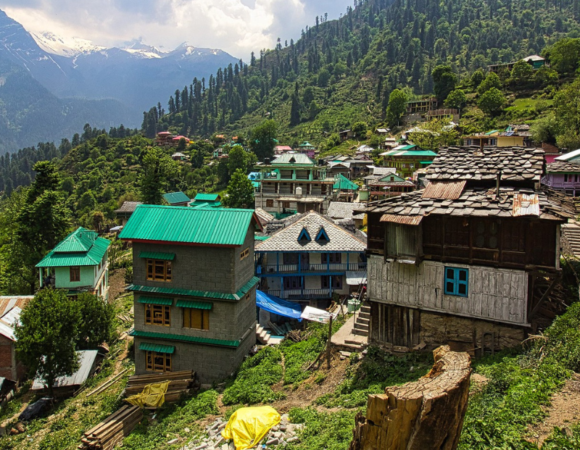
10 Best Hill Station In Himachal Pradesh, Highlights, FAQ’s
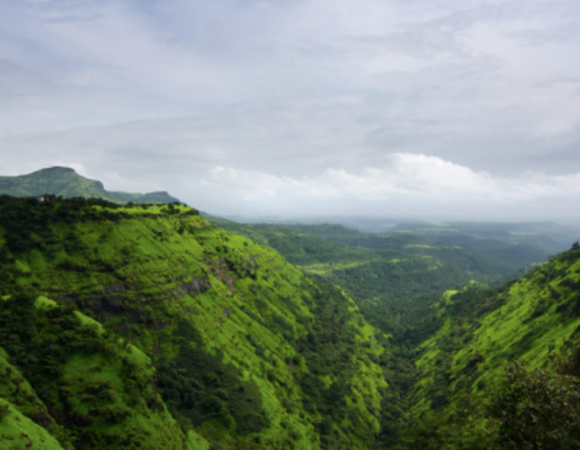
10 Best Hill Stations In Maharashtra, Highlights & FAQ’s
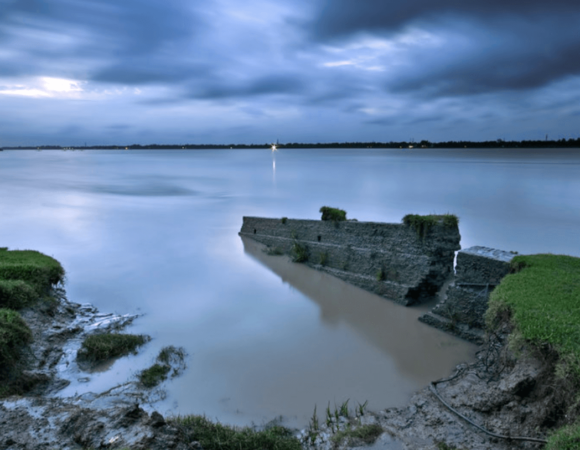
10 Best Hill Stations In West Bengal – Best Time, How to Reach Highlights & FAQs
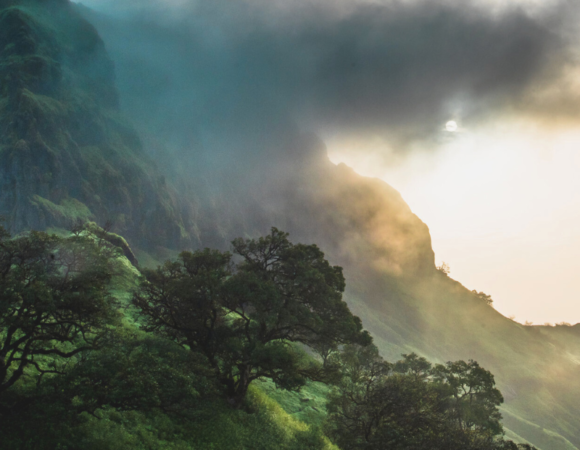
10 Best Maharashtra Trekking Places, Highlights, Treks & FAQ’s
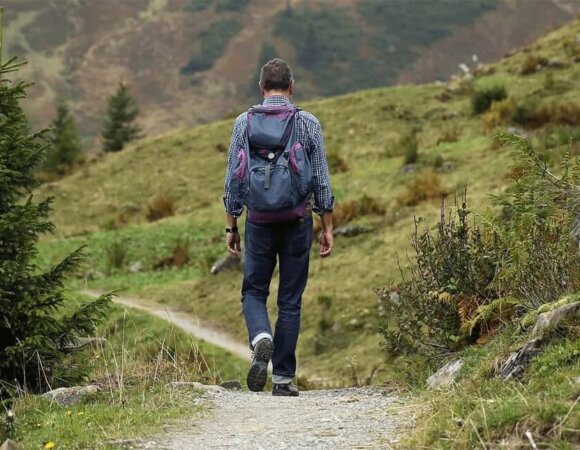
10 Best Trekking Places Near Delhi In 2024 & FAQ’s

10 Best Treks in Himachal That You Can Do in Winters
3 thoughts on “stok kangri trek guide 2024: highlights, best time and itinerary”.
[…] through its zig-zag way through the Solang valley, this exhilarating trek to Beas Kund offers experiences and adventures worth a lifetime. If you are a noob at trekking, […]
Very helpful and informative article!!
Add a Comment Cancel reply
Save my name, email, and website in this browser for the next time I comment.
Things To Carry On Your Trek
Book your experience with us.
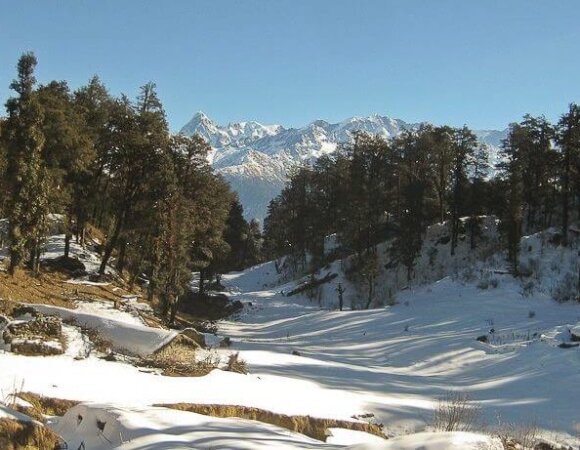
- Amenities 5
Dayara Bugyal Trek
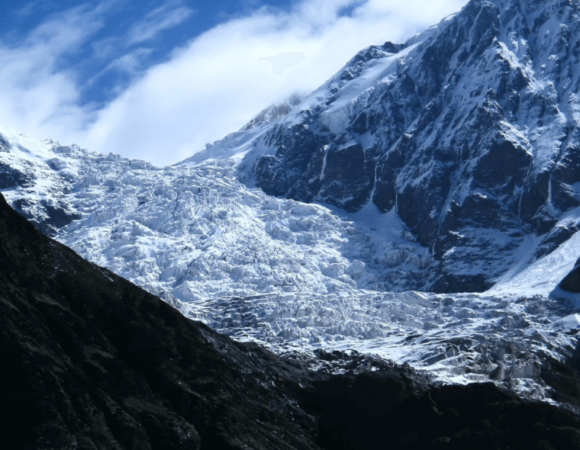
Pindari Glacier Trek
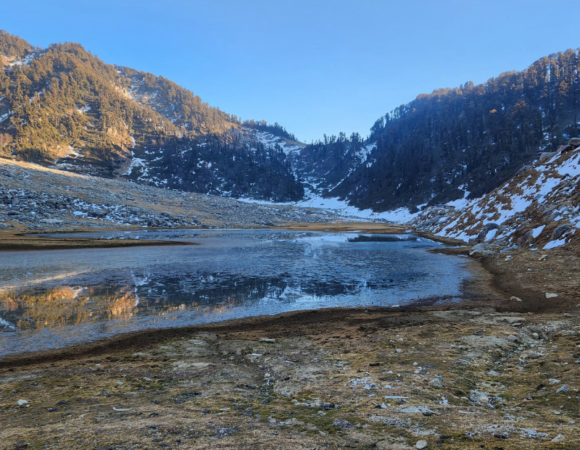
Kareri Lake Trek
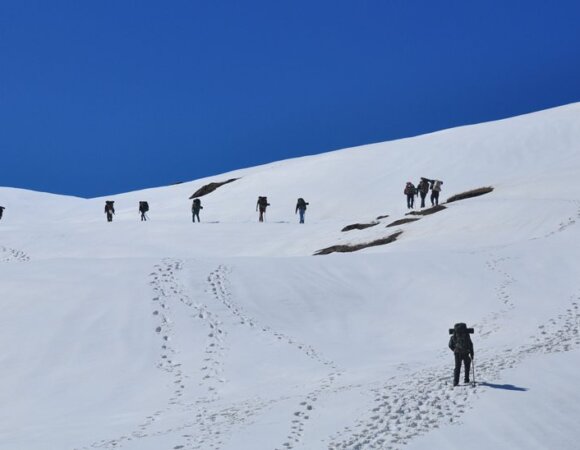
Panwali Kantha Trek
Book your unforgettable experience with us, reset password.
WhatsApp Us
- More Networks
Here’s Why Stok Kangri Trek In Ladakh Must Be Done With An Experienced Trekking Partner

Stok Kangri
At a jaw-dropping 20187.01 feet, Stok Kangri trek is one of the most challenging summits in India, and the mere thought of attempting this trek can set your pulse racing.
As Stok Kangri trek offers a non-technical foray into high-altitude mountaineering, this dream trek is on every adventure enthusiast's radar, but the difficulty level of the summit climb is highly underestimated.
There are certain treks that can really benefit from the support of trained guides and better logistics, and one such trek is Stok Kangri. It is one of the most thrilling treks you could ever embark on in India and involves climbing on steep slopes, withstanding blizzards, walking on meandering trails and a very high level of physical fitness.
If you're looking for a challenging, exciting and rewarding adventure that you will never forget, Stok Kangri trek is your best bet. Let us guide you through planning this trip so you can enjoy the most within your fitness capabilities.
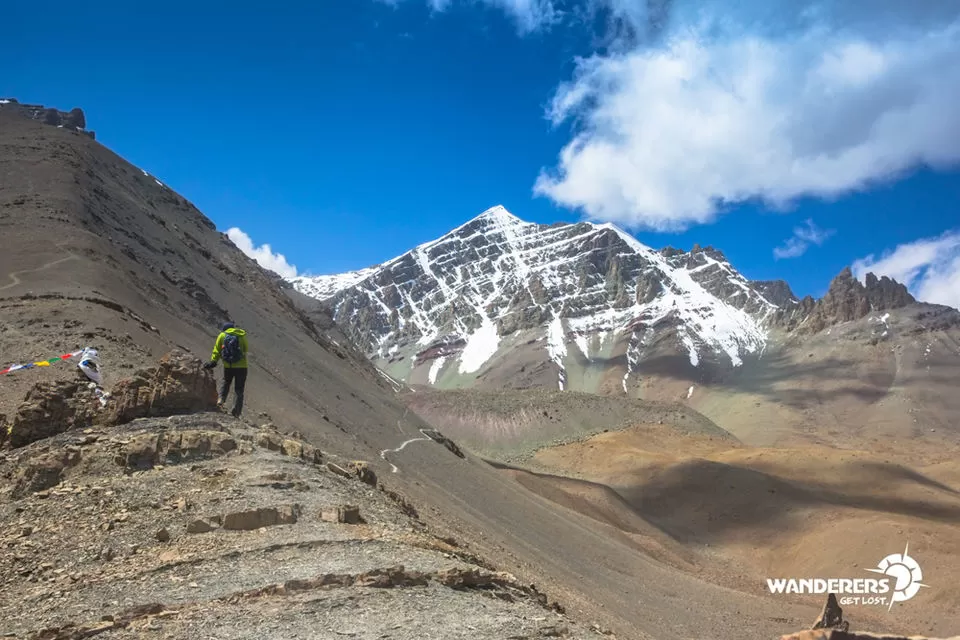
→ Where is it
Stok Kangri is the highest mountain in the Stok range of the Himalayas in Ladakh. The base camp (at 16,322 feet) lies southeast of the summit and can be approached through various routes. You can walk from Leh to Stok village, which will take you approximately 3 hours, or you can also choose to drive from Leh to Stok Village, which will take around 30 minutes.
→ Difficulty level of Stok Kangri trek
Stok Kangri trek is challenging to say the least, not just physically but mentally as well. Your fitness levels will make all the difference between enjoying this trek and merely enduring it. Start training at least a month before the trip. You could incorporate running, cycling and swimming in your fitness regime and for strength training, climb stairs with a heavy backpack and go for long hikes.
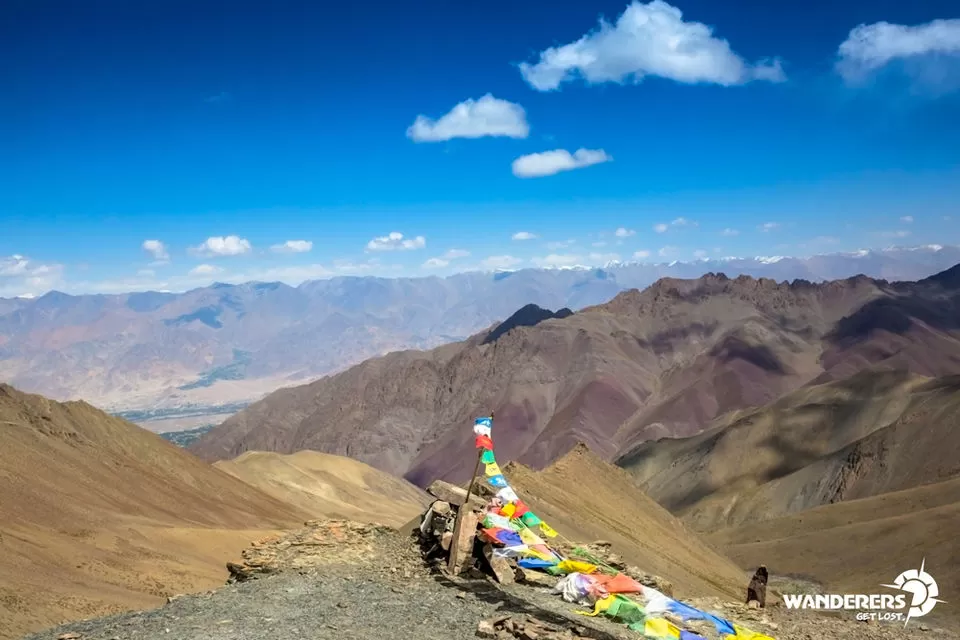
Besides a high level of fitness, you also need to be mentally strong to withstand the weather on Stok Kangri trek, because a bright sunny day turns into a blizzard in a couple of minutes. Prior experience in the Himalayas will be an added benefit is you're planning to attempt Stok Kangri trek.
→ DIY or not
At 20187.01 feet and several challenges such as AMS, fatigue and unpredictable weather, the only thing that can help you survive is experience. Therefore, it is advised to attempt Stok Kangri trek with a trusted organisation that will guide you through the steep slopes and unforgiving terrains.
Wanderers as an organisation has successfully managed to bridge the gap between people and the great outdoors, in ways that can completely change the way you travel. Comprising of professional mountaineers and outdoor enthusiasts, Wanderers can guide and support you in achieving your trekking goals.
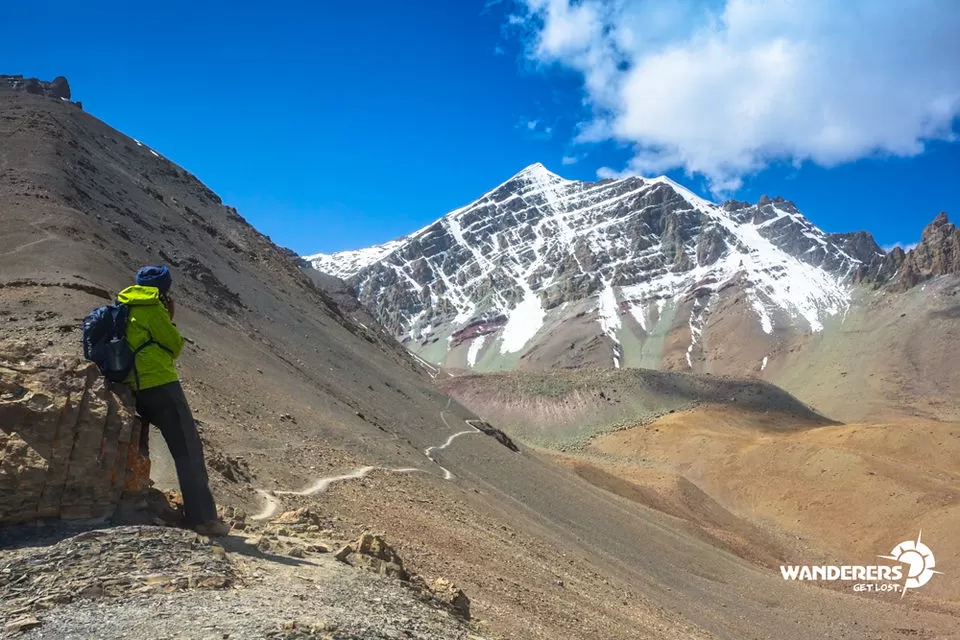
With personalised service and high quality experiences, Wanderers specialise in bespoke adventures. Whether you wish to camp by the river side, sleep in between the fireflies or wish to scale the Himalayas, Wanderers offer one of the best experiences in tailor made adventure with the highest standards of safety and eco-friendly low impact trekking.
Here's how Wanderers is different from other adventure companies:
• The organisation spends considerable time in planning and preparing for your custom adventures. They have good quality outdoor equipment and arrive at the optimal logistics based on your requirements.
• An important aspect, that defines their commitment to providing a safe experience in the mountains is the fact that they don’t like just making up numbers. The more the merrier does not work with the Wanderers and they don't over-burden the local environment with an influx of trekkers. They limit their group size to 14 people but more often than not, try to keep it around 10.
• A team of trekkers and climbers, their competence is tested and qualified by the top mountaineering institutes in the country.
• Wanderers also help in preparing you for the outdoors with consultation on your personal clothing, gear and travel plans.
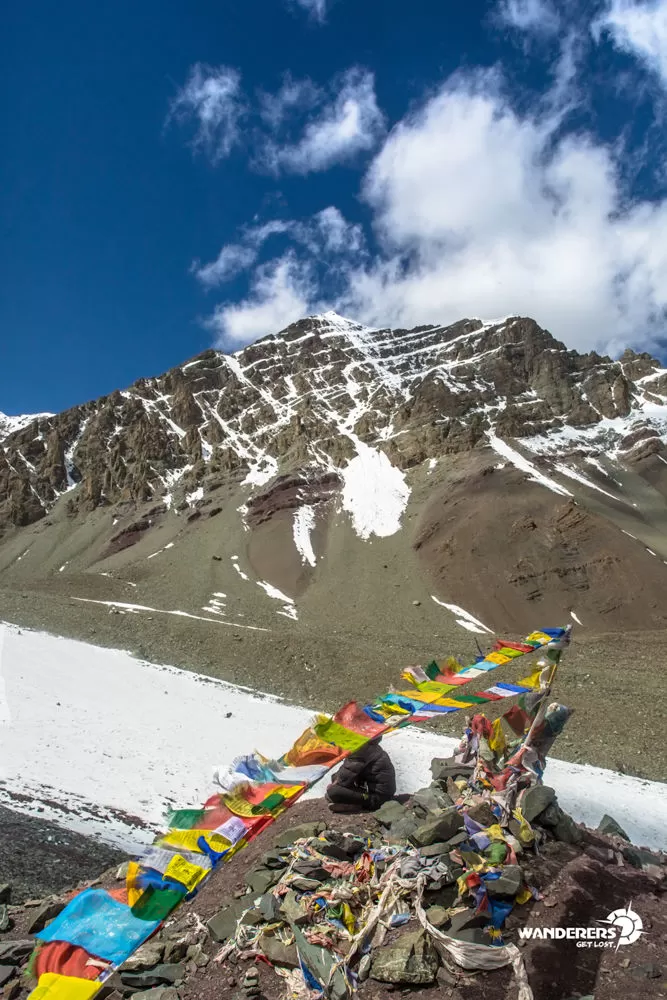
→ When to do Stok Kangri trek
Climbing the Stok peak is mostly restricted to the summer months and there have been very few successful attempts to the peak in winters. The ideal months to do this trek would be from the end of June to September.
→ Itinerary
This is the Wanderers' itinerary for Stok Kangri trek:
The first two days of Stok Kangri trek are kept aside for acclimatisation, the most important part of the trek. After a flight from Delhi, being adjusted to the mountains is very important.
Second day will also be about acclimatisation. You can unwind at the hotel, take a walk to the local market, explore the cafes in Leh or just simply chill in the hotel.
Day 3 (Leh to Stok to Changma):
On day 3, you will start driving driving from Leh to Stok village. The drive will take you not more than 40 minutes and after reaching Stok village, a 6km trek for 5 hours will take you to your first campsite, Changma.
Day 4 (Changma to Mankarmo):
From Changma, you will start proceeding towards you next campsite Mankarmo. This 4.5km trek will take you about 4-5 hours. An uphill but scenic climb will keep you busy on day 4 and while you're on the way, don't forget to spot some Himalyan Marmots and blue sheeps.
Day 5 (Mankarmo to Stok base):
After breakfast, you will start trekking to the Stok base camp. On the way, you will encounter some beautiful peaks such as Gulap Kangri and Parcha Kangri. From Mankarmo, it will take around 5 hours to reach the Stok base.
Day 6 and Day 7:
After breakfast, you will head out for an acclimatisation walk on day 6. After getting back and followed by lunch, you will be briefed about the things you need to carry for the summit. At midnight you will leave for the summit. The route goes through glaciers and then comes to steep slopes to the summit ridge. This is a long climb and would take somewhere between 9 to 10 hours. You will reach the top of the Summit at 20,190 (approximately) feet by 8am. After spending some time at the top you will start descending to the base camp to enjoy to some warm meals and to rest for the remaining day.
You will start from the stok base and descend to Changma. Spend the night at Changma.
On day 9, you will trek from Changma t0 Stok village and from Stok village you will drive back to Leh.
Total Stok Kangri trek distance – 42 to 43kms (including acclimatisation walks)
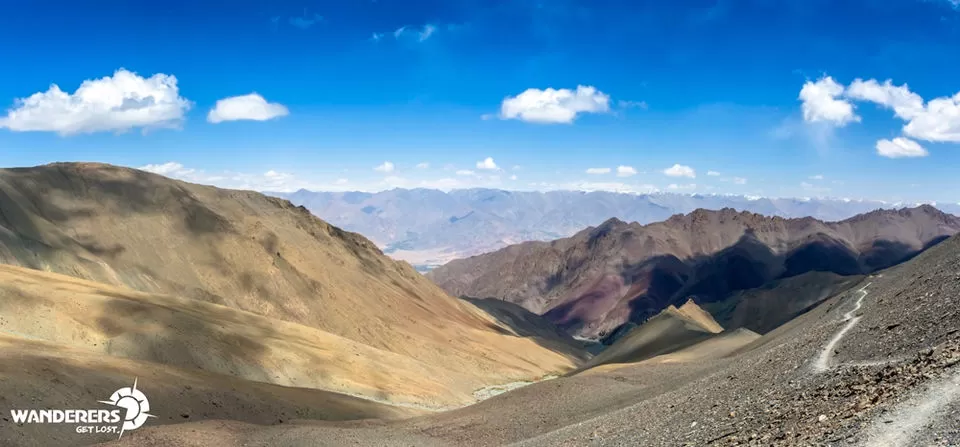
Leh – 11,500 feet – Stok village – 11,800 feet – Changma – 13,100 feet – Mankarmo – 14,200 feet – Stok base – 16,350 feet – Stok summit – 20187 feet
Contact details: To get a quote on the cost, call 91 9599744950, +91 8447552839
What to pack
Pack heavy woollen, gloves, caps and sturdy shoes. Few other essentials – sunscreen with SPF 20 or above, sun hats and balaclavas (ski masks).
Remember, this trek's steep slopes and unforgiving terrains can't be charted independently and should be embarked upon with the help of a tour company.
We recommend Wanderers , who along with their expert guides and OELs (Outdoor Experience Leaders) also believe in sustainable tourism.
You can book it here .
Embarked on the Stok Kangri trek recently? Tell us about your experience in a travelogue on Tripoto , and inspire millions of travellers across the globe!
In association with Wanderers .

- Upcoming Treks
Explore the world with us, one adventure at a time.
Stok kangri trek, package details, ╰┈➤ click here for available dates.
Stok Kangri Trek is a prominent peak among trekkers, soaring to 20,100 ft. It towers higher than Mt. Elbrus in Europe (18,510 ft) and Mt. Kilimanjaro in Africa (19,340 ft), making it one of the most impressive mountains in the world. This majestic summit is a true testament to India’s natural beauty, providing an unforgettable outdoor experience. Get our affordable trek packages .
The main difficulty of the Stok Kangri trek is the summit day, which involves a long, tiring.
hike in below-zero temperatures and walk on a glacier for several hours during the night, followed by a couple of hours on the ridge to reach the peak. Although no technical skills are necessary, it is unsuitable for novice hikers.
Reaching the summit of Stok Kangri is a rewarding experience that will stay with you forever, and the picturesque views make an effort worthwhile. Standing atop the Stok Summit offers a fantastic view of the Karakoram and Zanskar ranges.
A Stok Kangri expedition is an unforgettable experience and a dream come true for any serious trekker. Keep reading for more information on the Stok Kangri trek route map, complete schedule, temperature and weather conditions, photographs, videos, and reviews. Read the Stok Kangri trek blogs at the end. Explore our holiday attractions – Har Ki Dun, Ruinsara Lake Trek , Kedartal Trek, Humpta Pass Trek, Stok Kangri Trek and many more.
Complete Itinerary
The beginning of the thrilling journey to Stok Kangri is at Leh. Buses and aircraft both provide access to Leh from the nation's capital, which is located in Delhi. If you are taking the road trip route, you will start your journey to Leh once you have reached either Manali or Srinagar. Rather of driving from New Delhi to Leh, taking a flight would be the most efficient use of your time and resources since it would get you there far faster. As soon as you arrive in Leh, take some time to enjoy the clean air and relax, since it will take some time for your body to adjust to the new climate.
Your second day of travel is set aside for you to do some sightseeing and get used to the climate in Leh as you acclimatise. The town of Leh has a rich cultural history and is home to a number of important historical sites. Visit one of the town's many monasteries, or sample some regional specialties at one of the town's many modest eateries, which are located all over the place. It is possible to spend a whole day in Leh seeing some of the city's most famous attractions. In Leh, one may choose from a variety of hotels that are offered at prices that are affordable. Spend the night in Leh, have a good night's sleep, and wake up feeling refreshed since the beginning of the actual journey is only around the corner.
It is common knowledge that the hiking routes in and around Leh are among the most difficult and fascinating in the world. After the start of the third day, you will be transported to Stok Village. The trip from Leh to Stok Village is an amazing one all the way through. After leaving Leh, you will travel through a number of stunningly beautiful landscapes on your way to your destination, many of which will include tall, verdant trees. It is possible that the roads may get more rough as you go closer to Stok Village, but this should be of little worry since the weather during the summer is often quite pleasant. The newly crowned King of Ladakh now makes his home at the Royal Palace, which is also located in the Stok Village. There is a tiny museum located within the Royal Palace that is home to a number of antique and religious relics. The Royal Palace is an incredible destination for tourists to check out. As soon as you make it to Stok Village, you should be ready to go on the journey to Chang Ma. Due to the presence of so much snow, the journey to Chang Ma may be rather perilous at times. This snow walk, however, would be much more enjoyable for you if your guide helped you through it. A place to stay for the night would be provided here. You could have supper in one of the tents that have been put up in an open area, and then you could retire for the day.
After spending at least three days acclimatising with the climate, you will start the Stok Kangri trek gradually on days four and five of the journey. Ladakh is characterised by desolate and dreary terrain, which is traversed by hikers on the way from Chang Ma to Mankorma. Along the trip, you will get a taste of the true beauty that Ladakh has to offer, as well as an understanding of why Ladakh is often referred to as a chilly desert. You will have to ford two or three smaller creeks on your way to Mankorma, but other than that, the hike is mostly just a stroll along the river. Tents are used for overnight accommodations here.
The hike back to base camp should ideally take no more than a couple hours. The base camp is located in a breathtaking location, offering breathtaking vistas of the adjacent mountains and the lush vegetation that surrounds it.
You may take a trip to the higher regions of the campground and enjoy panoramic views of the surrounding area, or you can visit one of the neighbouring lakes or water streams where you can swim in ice-cold water. The area also boasts a number of lakes. In addition, the adjacent region offers a breathtaking panorama of the surrounding mountains, including Gulap Kangri, Parcha Kangri, and others.
Aside from that, the base camp is a pleasant site that is located in a grassy area, and it is there that you will be able to rest and recuperate in preparation for the hike the following day. You are going to need to do some more acclimatisation here because as the trip continues, the air will grow thinner and you are going to see significant shifts in the weather over the next several days. Tents would be set up at the base camp for the night of Day 5, which would be spent there. Be sure to bring along a sufficient amount of warm clothing to combat the dropping weather.
This day will be rather simple in terms of hiking, but it will not be spent fully relaxing. On day 6, you go out to get acquainted with your surroundings by exploring the areas immediately around you.
The future journey will be full with obstacles, and you need to be sure that you are ready to overcome them before you set off. The leader of the walk will supply you with all of the required information about the various variations in the terrain and will guide you throughout the whole experience. Because the hiking path might be dangerous at times, you will need as much knowledge and expertise as you can get your hands on.
After a certain point in the voyage, you will be required to go through snow that is gradually becoming deeper. There may be instances in which the snow would be so deep that your legs would sink up to your knees. For this reason, it is necessary to have a solid understanding of the conditions that surround you so that you can respond appropriately to challenging circumstances. Make an effort to get some rest today since you will start the last part of your trip tomorrow, therefore it is important that you do so. You would spend the night in tents once again, and by this point, you would have a good understanding of what the weather is like in this location both during the day and at night.
The day has come at last when you go on the most exciting part of the adventure that you have been on. The journey that we would be doing today would be the most challenging as well as the most unforgettable one. The hiking trail takes you up steep slopes and through glaciers, which ultimately leads you to the ridge that encircles the top.
This walk is far longer than the ones you've done in the past, so you'll need to make sure you're both physically and mentally prepared for it. It would take an average climber anywhere between 9 and 10 hours to do the whole journey, but a sluggish climber may perhaps need an extra 2 to 3 hours to finish it.
After setting off on your adventure, you would make it to the top of the ridge in a matter of a couple of hours at most. You'll get the impression that you're a monarch looking out over his domain from the balcony of his palace if you stand on the peak and take in the view of the mountains in the surrounding area. You may get some breathtaking views of the Zanskar Ranges to the south and the Karakoram Ranges to the north of you. Saser Kangri Peak is also in your line of sight. Because you are going to be travelling back to your base camp in a few hours, you should make the most of the time that you have while you are on the summit. Once you have arrived at the base camp, take the rest of the day to unwind, savour your meal, and then retire to your tent for a restful night's sleep.
This day would be the first step towards the completion of your trip. On the eighth day, all of these previous days spent adventuring across the mountains, braving the harsh conditions, overcoming obstacles, and accumulating experience come to an end. Get one last look at the magnificent snow-capped peaks and the untouched beauty of this region before you leave it behind forever. You get an early start from the Base camp and make your way to Leh as the day draws closer.
Take extra precautions when descending, since hiking downhill may be just as difficult and tough as hiking upwards at times. You won't be able to avoid walking till you reach Stok Village. You will now be transported all the way to Leh from Stok Village, which is where the hiking comes to a close. As you make your way back to Leh, you may find yourself reflecting on the incredible experiences that have transpired over the course of the last eight days.
Inclusion & Exclusion
• transportation between leh and leh, beginning with pick-up on day 1 and ending with drop on last day., every meal is vegetarian (sometimes eggs will also be served), beginning with breakfast on day one and continuing through lunch on last day., staff consisting of a professional guide, a chef, and support team., equipment for camping, such as stools, toilet seats, and other seats, sleeping bags, crampons, fees required to enter the forest., tented accommodation throughout the trek, with guests sharing tents in twin-person ratios., medical kits, all necessary permits, support from a porter and a mule to carry one’s personal belongings. porter/mule costs for personal baggage* per bag per person inr 300 per day., • transportation from your hometown to leh and back, personal costs like tips, foods from stalls, phone calls, etc., any costs that are incurred as a result of unanticipated occurrences such as adverse weather, obstacles, medical evacuation, etc., things to carry, government issues id card, bag rain cover, woolen and sun cap, personal first aid kit and medicines, waterproof trekking shoes (can be available for rent also*), fleece and down jacket, waterproof gloves, water bottle, sunscreen and body lotion, person toiletries, tissue paper and wet wipes.
The best time to visit or book Stok Kangri Expedition package is May and October .
Stok Kangri Expedition is suitable for experienced trekkers. Adults and seniors should carry doctors' notes for their fitness requirements for the journey. They should be fit enough to cover a 4 km distance in 30 minutes and should be able to carry at least a 10 kg backpack.
Temperature is generally between 10 to 30 degree in summers and 10 to -30 degree in winters.
Please visit- universalcamper.org/booking-and-refund-policies
Why Choose Us
➫ expert team, ➫ comfort stay, ➫ customized trekking, ➫ cooked and hygienic food, ➫ value for money, explore our, related trek.
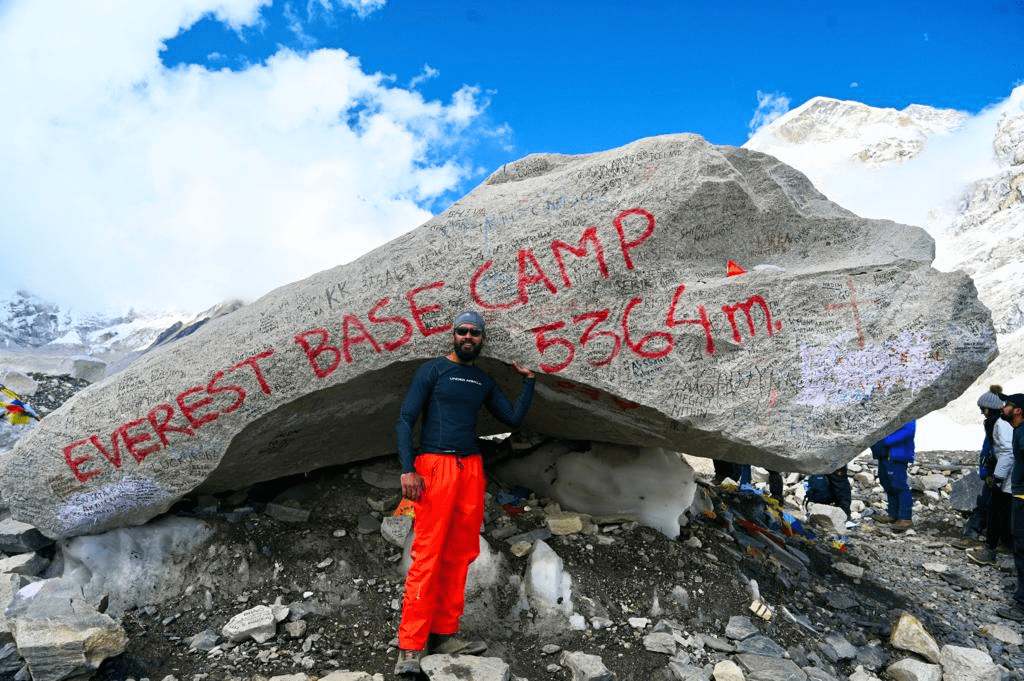
- Everest Base Camp Trek

- Hampta Pass Trek
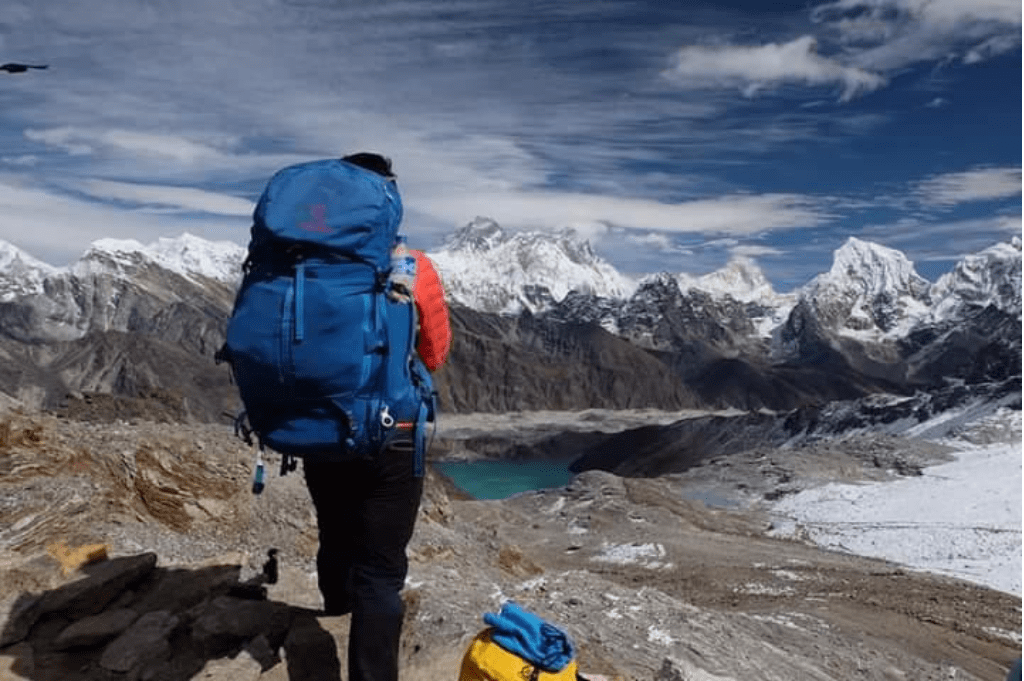
Everest 3 High Passes Trek
Trusted partners.

Checkout Our
Awards & recogination.

⇗ Impotant Links
- Privacy Policy
- Terms & Conditions
- Booking & Refund Policy
⇗ Upcoming Treks
- Kedarkantha Trek
- Ruinsara Lake Trek
- Kheerganga Trek
- Valley of Flowers Trek
- Sandakphu Phalut Trek
- Srikhand Mahadev Trek
⇗ Reach Us AT
- Street Number 622, Action Area IIB, Newtown, Kolkata, West Bengal 700161
- +918777208318
- +919389791926
- +919330542026
- [email protected]
© 2023 Universal Camper | All rights reserved. Designed by Yourdigishell
Upcoming Tours
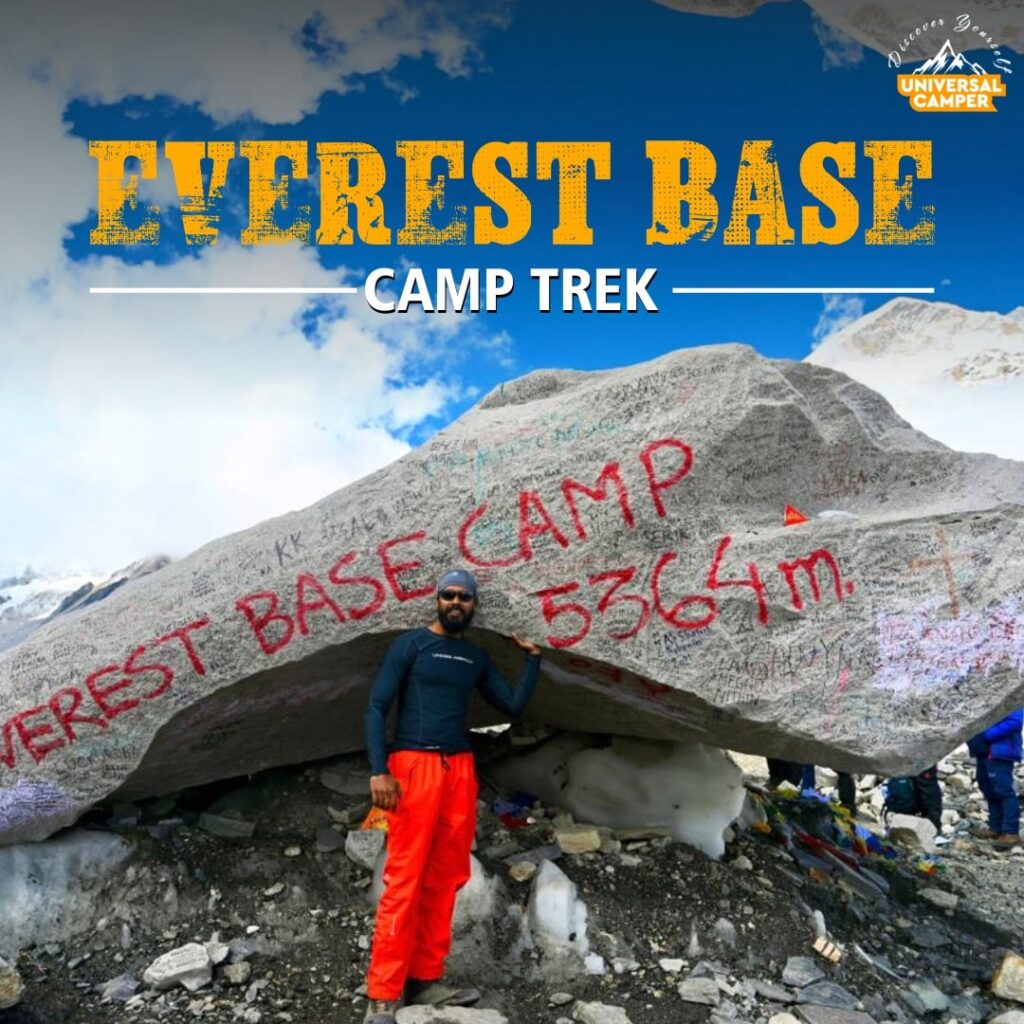
Contact Us
+919389791926 | +919330542026
Plan your Next Trip
Get in touch.
Write to us for personalized travel advice or for information on group travel and last minute travel , all travel is insured and safe.
Upcoming Dates & Slots
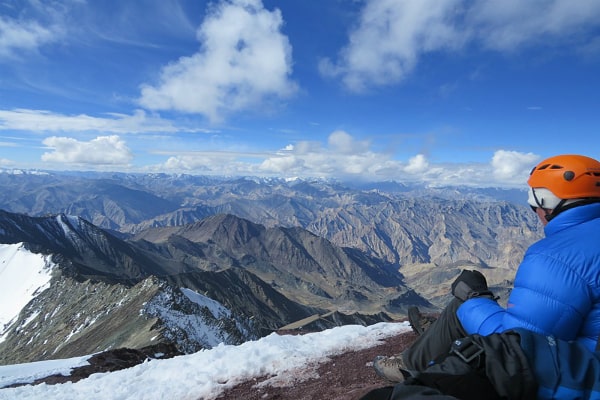

Starting from
₹ 21174 ₹ 15881 +5% gst.
- 8 Days 20,180 40
- Start : Ladakh End : Ladakh
- Difficult Ladakh
- Best season :May - Oct
Tour Highlights
✔ Stok Kangri Peak situated at 6152 M is the most elevated Peak in the stok scope of Himalayas.
✔ The pinnacle is situated in Hemis National Park and its unmistakably noticeable from Leh and encompassing zones.
✔ Remaining at the summit of Stok Kangri, you can see the Karakoram Range to your north and Zanskar Range to your south.
✔ A standout amongst the most entrancing destination on earth is Stok Kangri.
✔ The whole trail has numerous edges so you can feel the sudden change in landscape.
✔ Stok Kangri is one such pinnacle that has increase gigantic prominence over the most recent couple of years.
✔ View of the Karakoram Range in the north and the Zanskar mountain range in the south.
Inclusion/Exclusion
Inclusion in cost during the tour:
✔ Meals as specified in the itinerary (it will be basic Indian vegetarian Meals). ✔ Experienced Trekking Guide. ✔ Experience trekking Cook for the Trek. ✔ Trekking Crew. ✔ Trekking Permits and Permissions. ✔ Basic First Aid Kit (Please do carry your personal medicine). ✔ All necessary Camping Equipment’s:-
- Sleeping tents.
- Dining tents.
- Kitchen Tents.
- Toilet Tents.
- Sleeping Bags (You may also carry your own sleeping bags as per your comfortability).
- Sleeping Liners (We do provide the same, however its recommend to carry your own for comfort).
- Sleeping Mattress
Exclusion in cost during the tour:
✖ Mandatory GST of 5% on Invoice Amount. ✖ Any kind of Travel / Health Insurance (Trekveda strictly recommend each traveller to please carry your own travel / health insurance). ✖ Any specific Meals /Snacks / Beverages unless mention in the cost included section. ✖ Any of Cost for Airfare, Train fare. ✖ Any kind of medical expenses. ✖ Any tips, laundry, Phone call, liquors, mineral water, camera fee or any other personal nature expenses. ✖ Airport pickup and drop services ( Will be subject to additional cost). ✖ Any other fee / charges not mentioned in the cost included section. ✖ Backpack offloading charges, the backpack should not weigh more than 9 kgs. ✖ Suitcases/strollers/duffel bags will not be allowed (Subject to additional cost.)

Have any question?
contact us @
+91 8958094170
- OVERVIEW & ITINERARY
- THINGS TO CARRY
- SAFETY & SECURITY
- FITNESS TIPS
Short Itinerary
Day 1: Arrival at Leh.
Day 2: Leh (Acclimation).
Day 3: Leh to Mankarmo via Stok village.
Day 4: Mankarno to Stok Kangri Base Camp.
Day 5: Rest, Acclimatize, Training.
Day 6: Base Camp to Stok Kangri to Back Camp Back.
Day 7: Base Camp to Leh.
Day 8: Leh Departure.
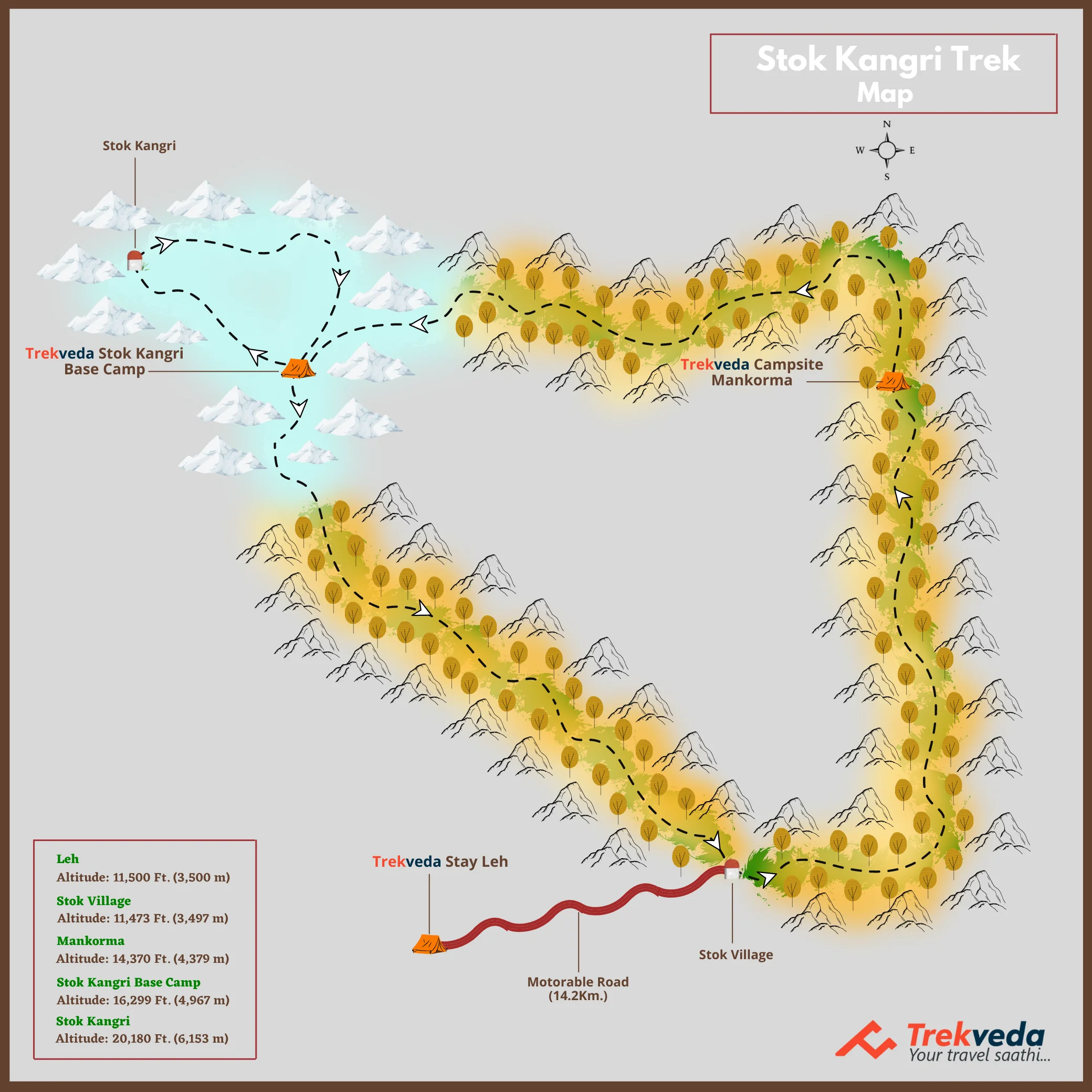
A standout amongst the most entrancing destination on earth is Stok Kangri that lies in the wonderful territory of Ladakh.
Ladakh is situated in the northern territory of India and is celebrated for sympathy and backing of its inhabitants. Leh the capital of Ladakh is arranged at the tallness of 3500-3800 m of ocean level and the bravest destination for the trekking lovers. Trekking in Leh is the best and it grabs the attention of the visitor from each edge of the world and stok kangri trek package is worth taking.
Stok Kangri is one such pinnacle that has increase gigantic prominence over the most recent couple of years. Delineating the Himalayan range with a more extensive viewpoint, and offer its trekkers the chance to encounter the total harmony. The whole trail has numerous edges so you can feel the sudden change in landscape. In winter, the entire scene accomplishes an ideal gloriousness. Stok Kangri top gives you the whole perspective on Zanskar and the Indus Valley. This trek is going to be so stunning though treks in India are already popolar in the world
Your trek starts from Delhi as you take the flight or the road trip to reach the destination from where the real adventure begins.
it’s 8 days total trek with full of challenges and adventure, you will witness so many eye-pleasing destinations on your way to Stok Kangri trek, and you will so experience the ancient culture the Leh native still follow and the festivals they celebrate with all the colorful senses.
Difficulty Level : Stok kangri Trek
One who has an experience of trekking are the one who can pursue this trek , this trek is not for the first timers and even the experience one needs to have a good and this could be the most magnificent and incredible journey for the trekkers as the destination is well known for its beauty and trekking.
Is it suitable for children’s?
No, it is not at all favorable for children; kindly do not pursue this trek with kids.
Is it a good option for the first time trekkers /or families?
No, we do not recommend this trek for the first timers, families can choose but if they have a prior experience as it is a difficult trek.
Highest altitude : Stok kangri Trek
One can attain a maximum altitude of 20,180 Ft. subject to his endurance and other conditions such as a climate, temperature. This trek isn’t easy at all so one must prepare themselves mentally and physiologically before choosing Stok Kangri as this trek has so many complicated ways to cross.
Season : Stok kangri Trek
Season! Best season to visit stok Kangri best time is between May to mid October as the place is pleasant and one can get easily indulge in the temperature, the view stays clear and beautiful in May to mid October.
Average temperature : Stok kangri Trek
The average temperature in the day time will be 20°C to 30°C, and falls in the night.
One must bring enough pair of clothes and better quality trekking shoes so that a trekker can be covered thoroughly and does not face any difficulty during the stay at this temperature; there is a vast difference in the city and mountain temperature so it might be possible that one can encounter a little difficulty during acclimatization.
It is essential to bring enough warm enough, and that may not even affect the backpack too much.
What makes this trip different?
Stok Kangri is one of the most astounding trekking crests on the planet and trekking in jammu and Kashmir is nothing less then a paradise in the mountain. It remains at the height of 20,180 Ft. It beats two of the most noteworthy mountains crosswise over two unique mainland’s and is, the point of fact, a delegated gem of India. The greatest and the main amid Stok Kangri trek is the summit day, where you need to overcome below zero temperatures, trek on an ice sheet for around 6-7 hrs during the evening, and stroll on the ridgeline for about 2 hrs to achieve the summit. The view from the Stok Kangri summit is the wonderful experience and a daunting task. You can see the Karakoram go from the Stok Summit alongside the Zanskar run. Stok Kangri is an ideal trek and each eager trekker's fantasy. Therefore nothing can be compared to Stok Kangri; every trek lover can understand the dream of Stok Kangri summit.
Trek Itinerary : Stok kangri Trek
Day 1: Arrival at Leh
Altitude : 11,562 Ft.
Time taken : 1 & 1:30 hrs
Your journey to the beautiful destination will start from Leh nestled in northern India, Capital of the Leh region in Jammu and Kashmir. Leh is roasted at an altitude of 11,562 Ft, is most known for its Buddhist essence and nearby trekking areas. Earlier Leh was the significant trade route between Tibet and east, Kashmir to the west and also between India and China, the two beauties Jammu and Kashmir, where lies Ladakh in between, the most admired destination for every individual across the border even, people since ages are traveling to behold the shining diamond Ladakh.
You can choose either road to reach Leh, or you can take a direct flight from Delhi to reach this destination, though by road it will consume a lot of time and energy, flight will be more convenient as it will take approx 1 and a half hrs, basically Leh is most known for its Buddhist essence and nearby trekking areas.
Day 2: Leh (Acclimation)
Day 2nd will be the day to acclimatize yourself to the weather and the altitude itself, and the briefing about the whole trek, points you should keep in mind before going futhure, etc, and in your free time you can stroll around and acclimatize yourself.
Experience the culture and visit nearby famous places and temples along with that can shop in the local market of Leh whatever you like; Leh is rich in culture as it is an amalgamation of Buddhism and Tibetans culture. You can witness a lot of things such as Buddhist monasteries built in ancient times, the rock carving and the peace of monasteries grab the global attention.
You can see and experience so much there, but as it is nestled at a higher altitude so it is necessary to keep yourself indulge in the weather of Leh so that it will not become the hindrance in your futhure trekking.
Day 3: Leh to Mankarmo via Stok village
Altitude : 14,370 Ft.
Time taken : 5 hrs
Trek Gradient : Moderate to Difficult
Water sources : Carry your own water bottles
Leh could be a dream trekking destination for many, so many among you can live their dream of trekking which will start from 3rd day, when you will drive from Leh to Stok village it may take approx 30 min reaching Stok village, in between the drive you will witness the astounding scenery and exotic places around, and will look like a heaven to you, drive to Stok village will have a different adventure, the town is enveloped into the lush green trees and the abundance of natural beauty , the city lies in the south of Leh and is well known for the royal palace, from Stok village you will start your trek towards Mankarmo which is at an altitude of 13,940 Ft. and may take 4 to 5 hrs to reach there and this will be the destination for 3rd day, trekking is a little hard so one must be aware of it in advance.
Day 4: Mankarno to Stok Kangri Base Camp
Altitude : 16,299 Ft.
Time taken : 3 hrs
On the 4th day, you will trek towards Stok Kangri Base camp which is nestled at an altitude of 16,400 Ft.
It will take 2 to 3 hrs trekking on 4th day, it would be better if you will start the trek early because the time that is defined is according to the average distance, but it entirely depends on you how much you can walk and how much time you will take because the trek isn’t easy.
It has a problematic ascent throughout the way, and the more you will go towards Stok Kangri, the higher level of altitude will start decreasing the level of the oxygen, and it may become little challenging for you to walk therefore it is essential to prepare yourself for the trek earlier.
You will pass through the narrow trails in the mountains, where you must trek carefully, as you will reach the high altitude you can face the problem while breathing in climbing.
Later, when you will cross the hissing river and then the trail will become little smooth and broader but still the way will be ascending along the way you will go through numerous alpine Lakes and tinny ripples, and Mother Nature will astonish you in each step.
This trekking session will over, and you will reach the Stok Kangri Base Camp, rest and have a good time after so much efforts else you can climb little peaks nearby to prepare yourself for your expedition further.
Day 5: Rest, Acclimatize, Training
5th day will not be hectic as you will again take the halt before the summit, this day you will acclimatize yourself with the weather again as now you are on the different level of height, so it’s necessary.
You will take an acclimatization walk 17,700Ft. To get into the weather properly and to prepare yourself for the further adventure that will come to your way.
It is essential to prepare yourself for the coming days your trek guide will let you know about the further challenges you will face, and other vital majors that one must keep in mind as Stok Kangri isn’t an easy trek.
You must listen to your guide carefully and each point he/ she will let you know along with that you can explore the area.
Meadows carpet and you may witness the sheep grazing there; you can talk to the shepherds and understood more about the place out of curiosity.
Later have your dinner, rest and sleep you wake up early for facing the adventure.
Day 6: Base Camp to Stok Kangri to Back Camp Back
Time taken : 8 to 11 hrs
Trek Gradient : Difficult
6th day will be the most challenging as well as the adventures day for the trekkers.
It would be better to start the climb earlier as it will take so much time to reach the summit.
The route will go through the glaciers that will make it hard to climb so be careful once you will pass the iceberg, there will be a steep way with slopes to the summit ridge.
It will be a long climbing day so you must be mentally and psychologically prepare to reach the summit as it won’t be an easy trek, it will take 9 to 10 hrs for the average climber to reach the peak, and for the slow climber, it will be like 2 or 3 hrs in addition.
After this hard climb when you will reach the glacier, the real rise will start from here to the Mount Stok Kangri top now it will take approx 2 hrs to reach the summit again climb carefully because your one mistake can drag you into the danger.
As you enter the peak, your wait will be over, and your efforts will treat your eyes with the most beautiful view of the Karakoram Range in the north and the Zanskar mountain range in the south.
It will be a pleasant view from the top; you will get the unobstructed picture of the summit and the colorful Buddha prayer flags that is just a delicious s treat to the eyes, there you can click pictures and enjoy harder.
Later you will come back to the base camp and you can celebrate your victory over the hardest summit.
Day 7: Base Camp to Leh
Altitude : 11,824 Ft.
Time taken : 3 to 4 hrs
As you will be done by the 7th day, so now a time when you will see you way back to the Leh.
You will trek back to the Stok village with enthusiasm and the feeling of winning that you have completed such a hard trek, from Stok village you will get the vehicle to go back to the Leh by capturing this beauty in your eyes you will drive back to the Leh from Stok village.
Day 8: Leh Departure
Time taken : 1 to 1:30 hrs
8th day will be the goodbye day from Leh as you will travel back to your homes from Leh via flight with all the memories you have created in these 8 days and the bonds you made will always be with you.
So one must trek always you gain a better experience and lessons in life.
Stok kangri Trek : Essentials Trekking, no doubt, is one of the most thrilling adventure one could ever have in his/her life. With an elegance of nature and unmatchable experience of the pristine mountain ranges, trekking stands out among all the adventures across the world, but nothing comes free, there are certain aspects of the trekking which one needs to consider while he/she is making up his/her mind for trekking. Here’s a list of some basic requirements which one would need during his/her camp trekking. Let’s pay some heed to these prerequisites for trekking.
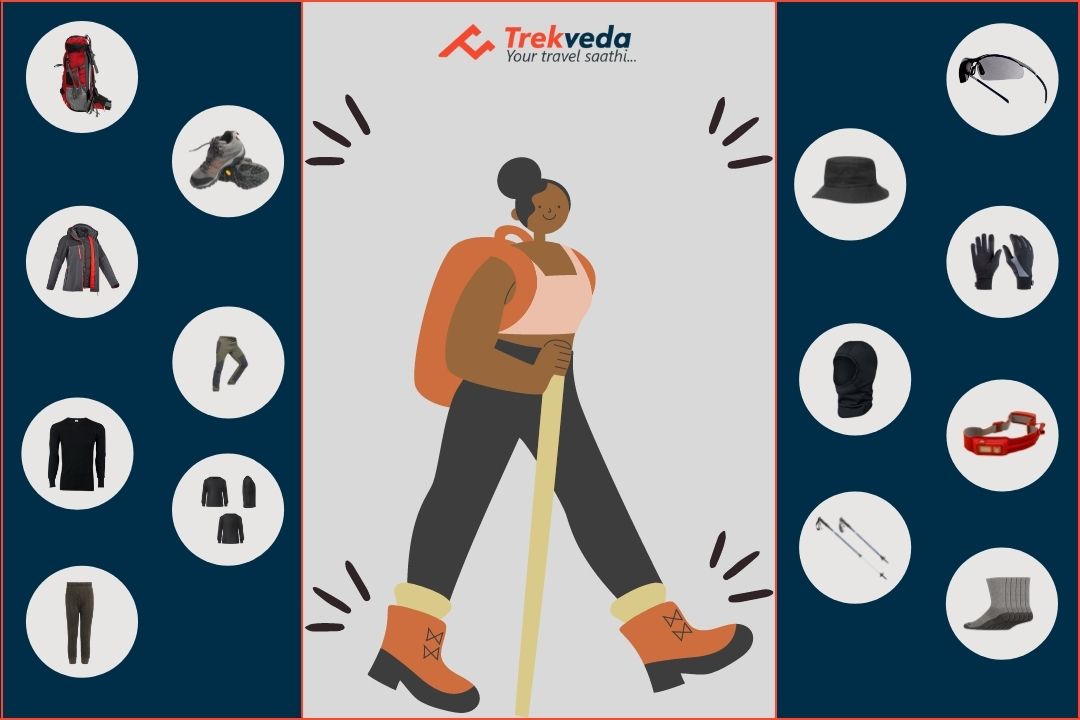
Things You Can’t Afford Missing On Trek
1. A Sturdy Backpack/RukSack
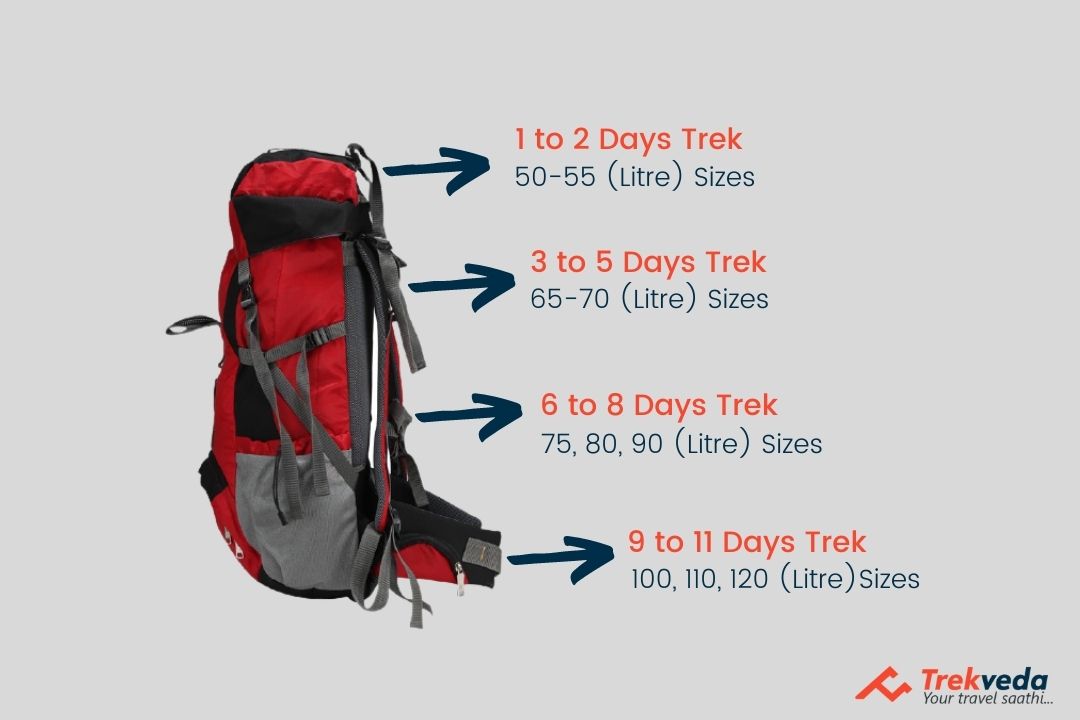
RukSack A high-quality backpack with an ease of carrying facility with durable and stern straps is one of the pivotal thing that you’d need during the entire trekking. The easier it’s to carry, the more fun you can have during your trek.
2. A Pair of Trekking Shoes
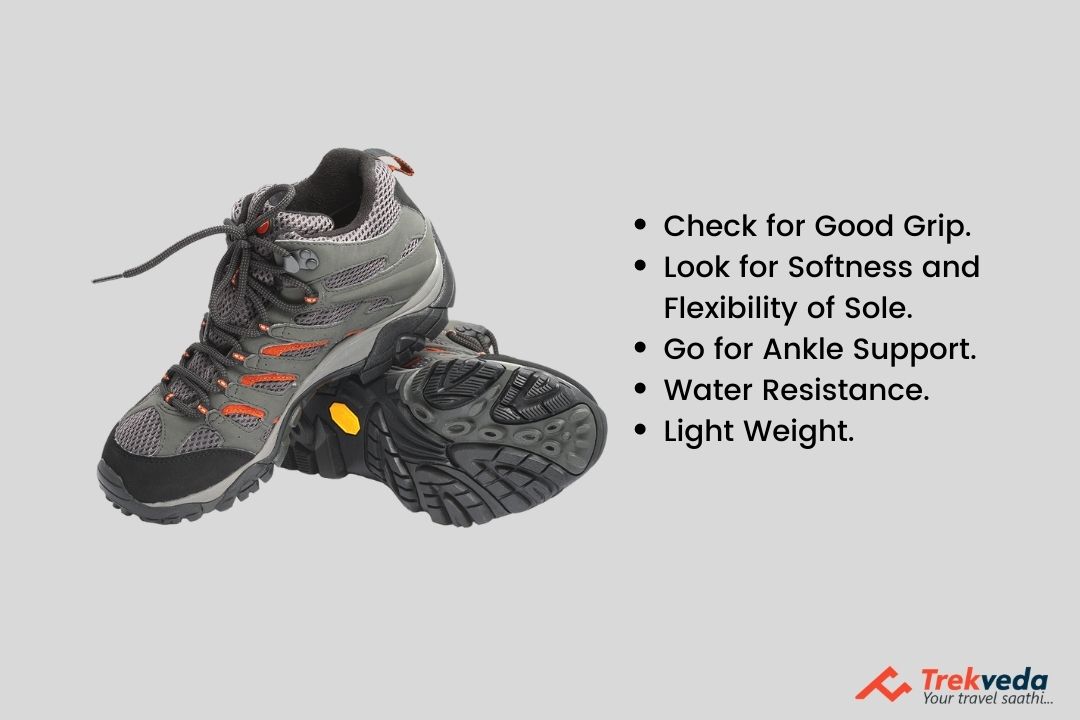
Your regular sports shoes can be a mess during the trek and one of the most regretting thing that might take away the joy of trekking. To prevent yourself from slippery patches through the streams, a pair of trekking shoes with good grip would do a great work for you and reciprocate your experience of trekking to the manifolds.
Clothing Clothing is one of the most important aspect of trekking but that doesn’t imply the “what if situation”, hence carry the clothes that you’d need normally. Carrying more and more clothes will only add the weight, thus problem. Once on the trek, you’d not generally need to change the clothes every now and then, provided if you maintain your hygiene properly.
Three Warm Layers Jacket

On high altitude treks, temperature after the sunset drops to the considerable degrees. So during these campsites, you might need an additional layer along with the padded jacket coupled up with a fleece and a warmer.
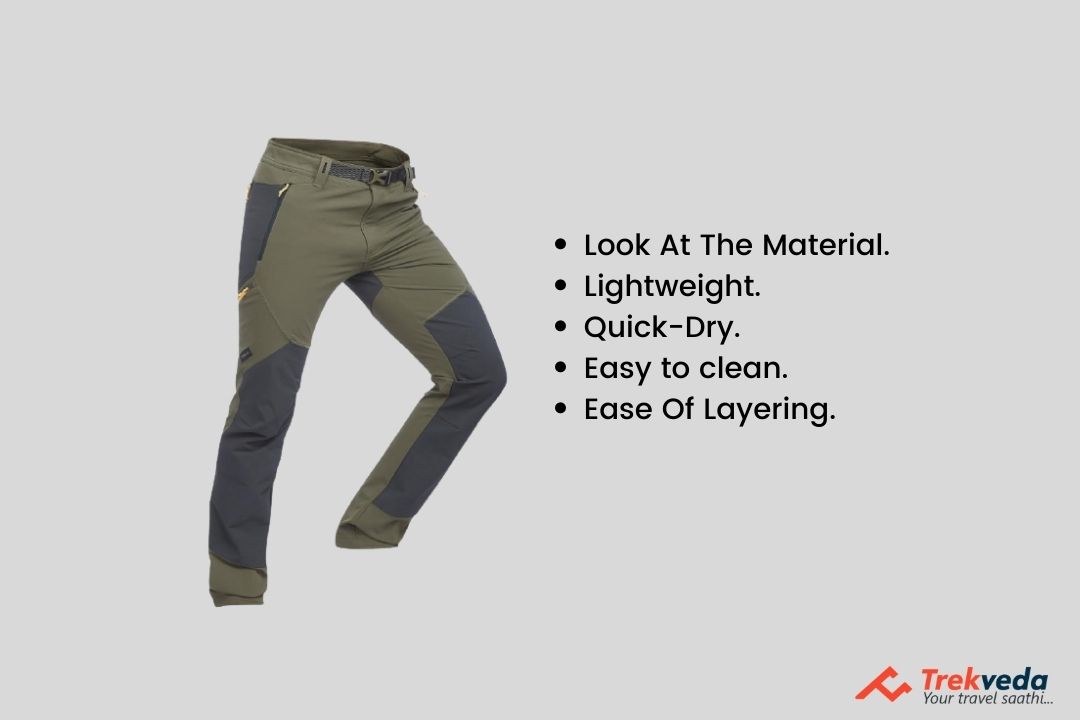
Please don’t go for jeans/ denims for the substitute for the trek pants since they’d not add comfort to your stay at the campsites. Wear one pair and carry the remaining two.
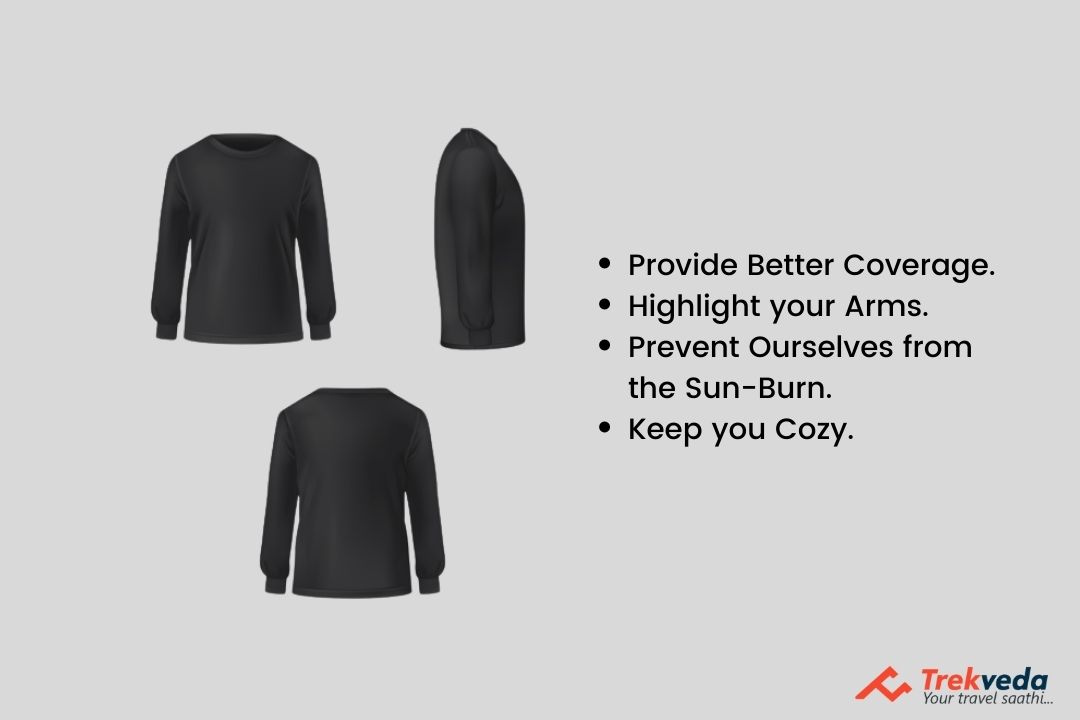
It’s advised to wear full sleeved t-shirts in order to prevent ourselves from the sun-burn. Carrying a dry-fit t-shirt or two can be a wise idea if you’re trekking during the rainy season. Regardless of the cold weather, trekkers’ bodies tend to sweat and to prevent yourself from falling ill, you’re advised to change your clothes at campsites.
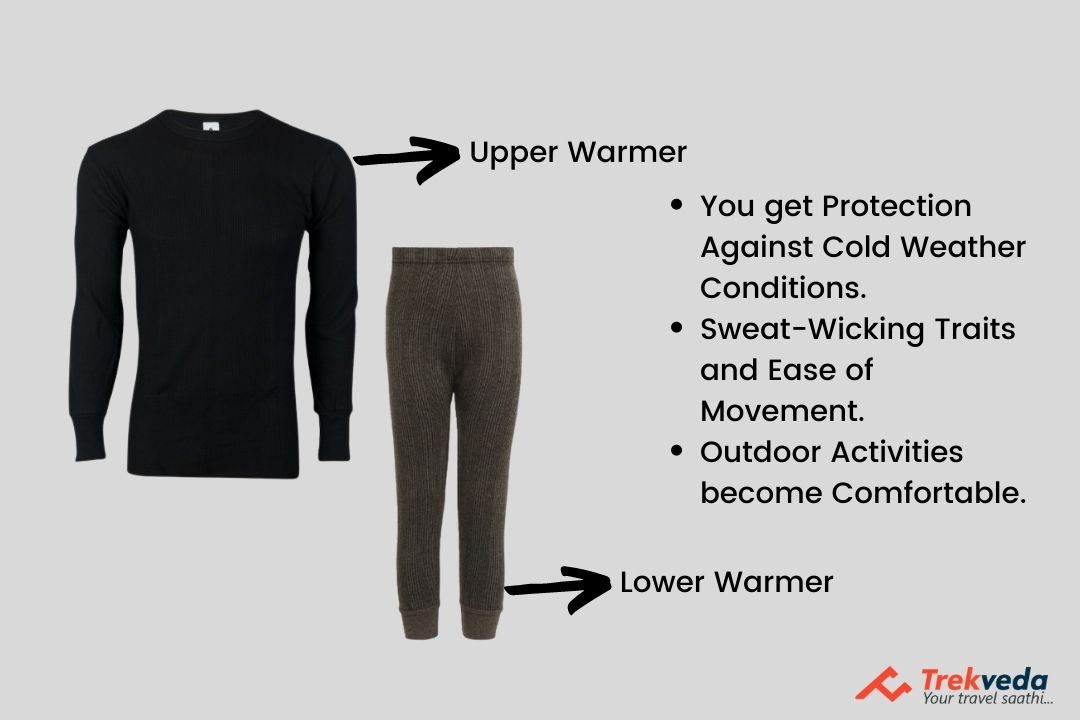
Warmers or thermals can be added on one’s own concern related to their health and their exposure to the cold climate.
Accessories Shades
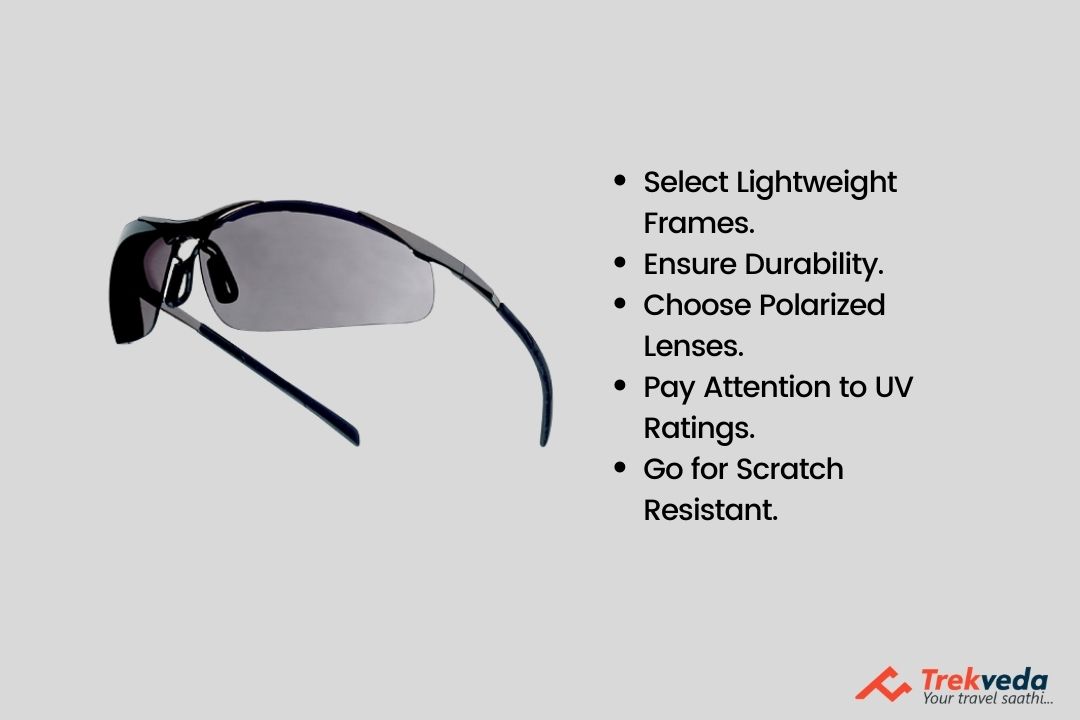
Sunglasses are to counteract snow visual deficiency. While at the same time you're probably not going to discover snow in October, convey a couple in any case.
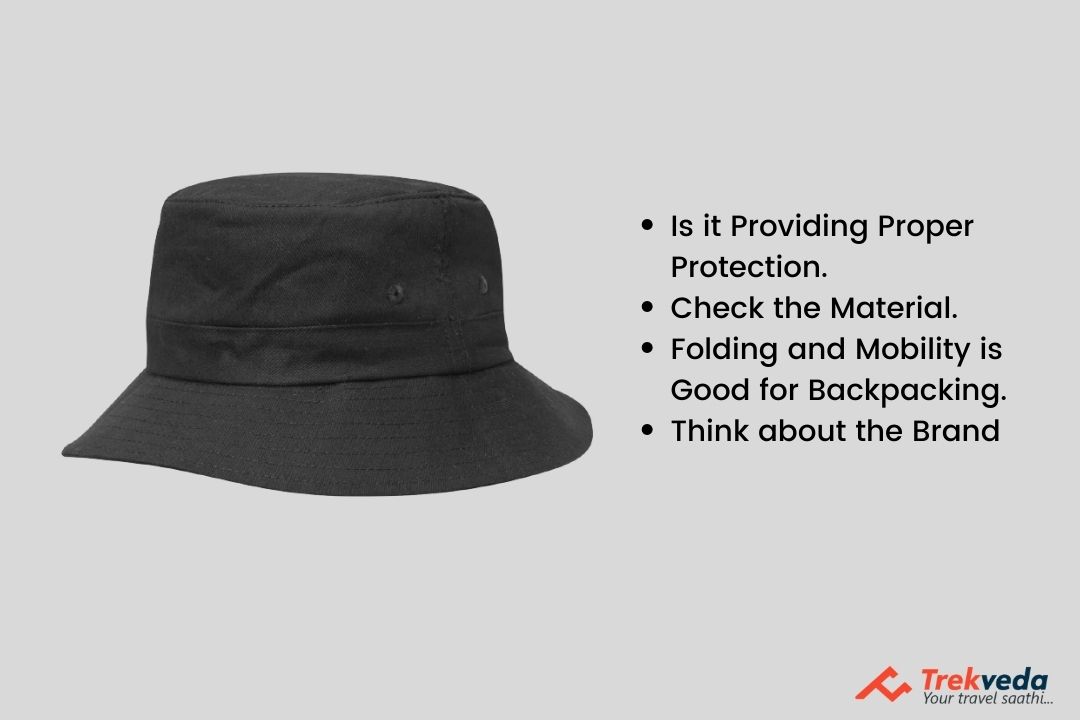
The sun feels more grounded while at the same time strolling on the mountain slants. Convey a sun cap to shield your head and neck from the warmth, particularly in case you're trekking later in the day.
Engineered Hand Gloves
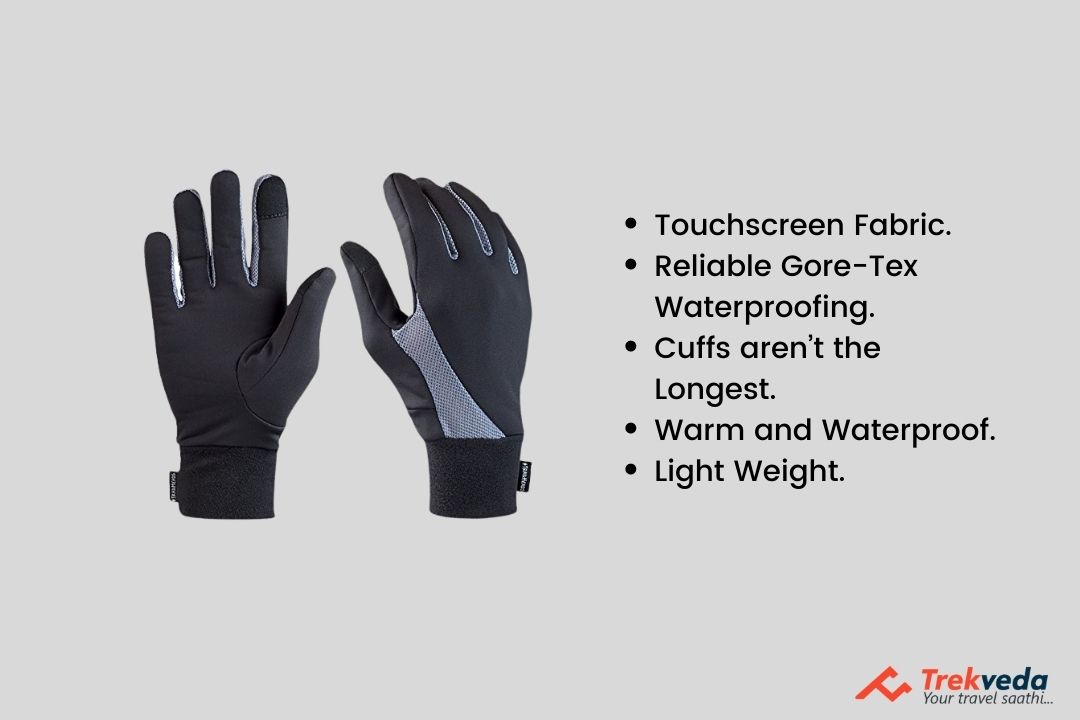
One sets of downy or woolen hand gloves. One sets of water evidence/safe, wind verification gloves.
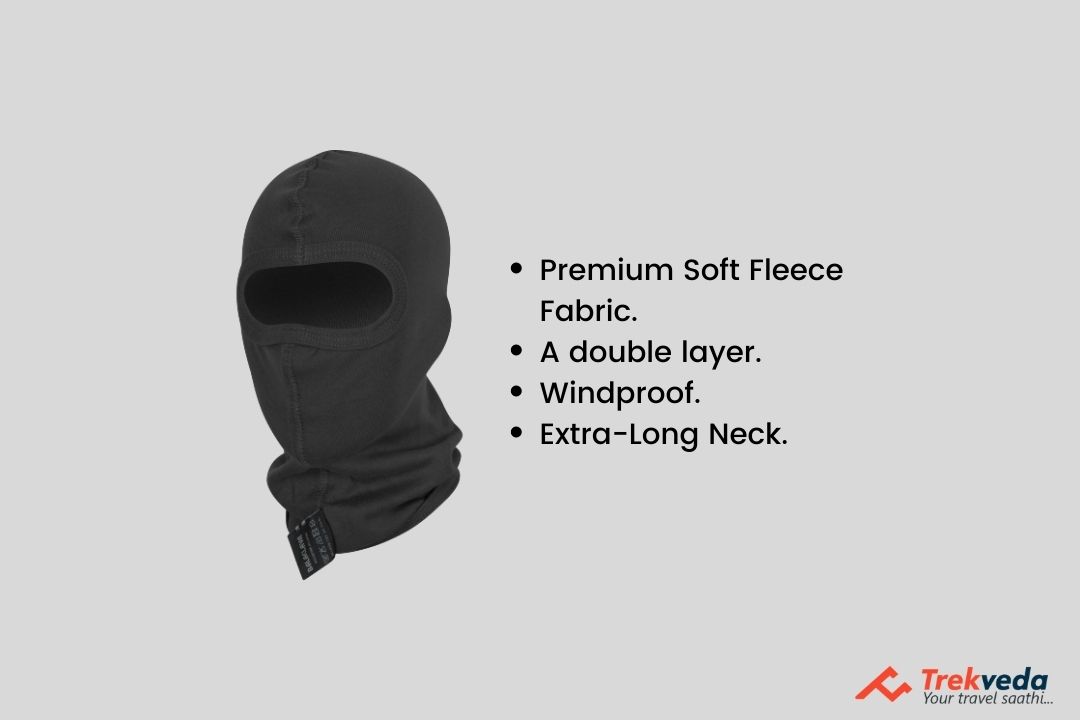
You may utilize woolen scarves rather too.

A part from two sports socks, you can take a couple of woolen socks for the night as they’d spare you from the dripping temperature.
Headlamp/LED Burn
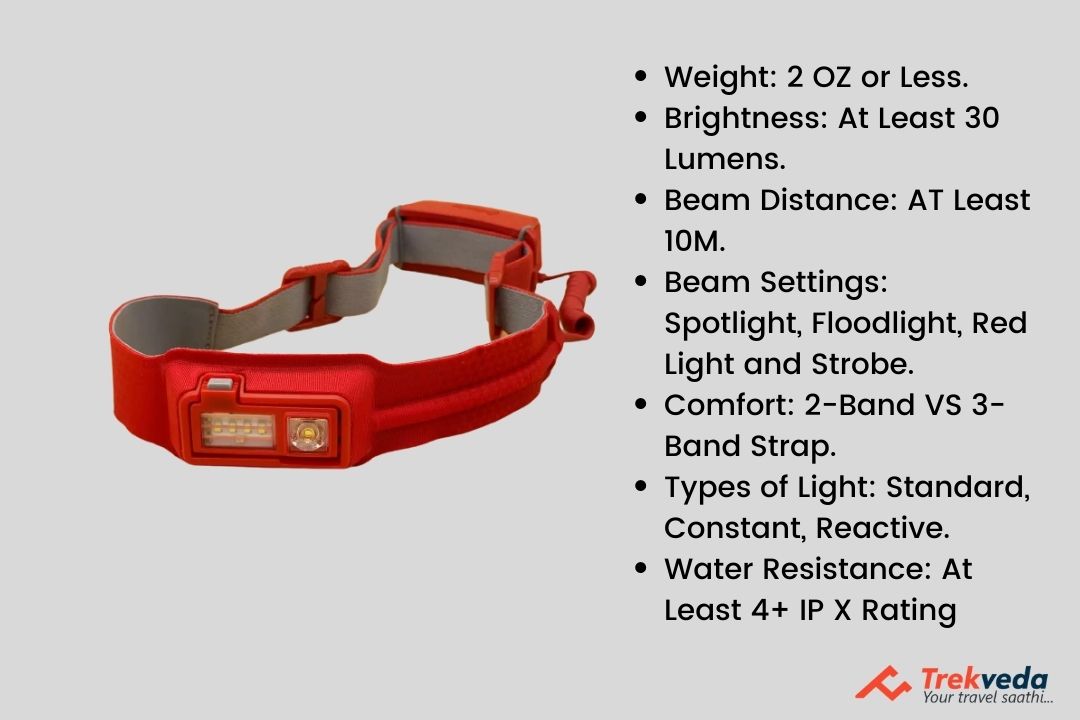
Trekking Pole
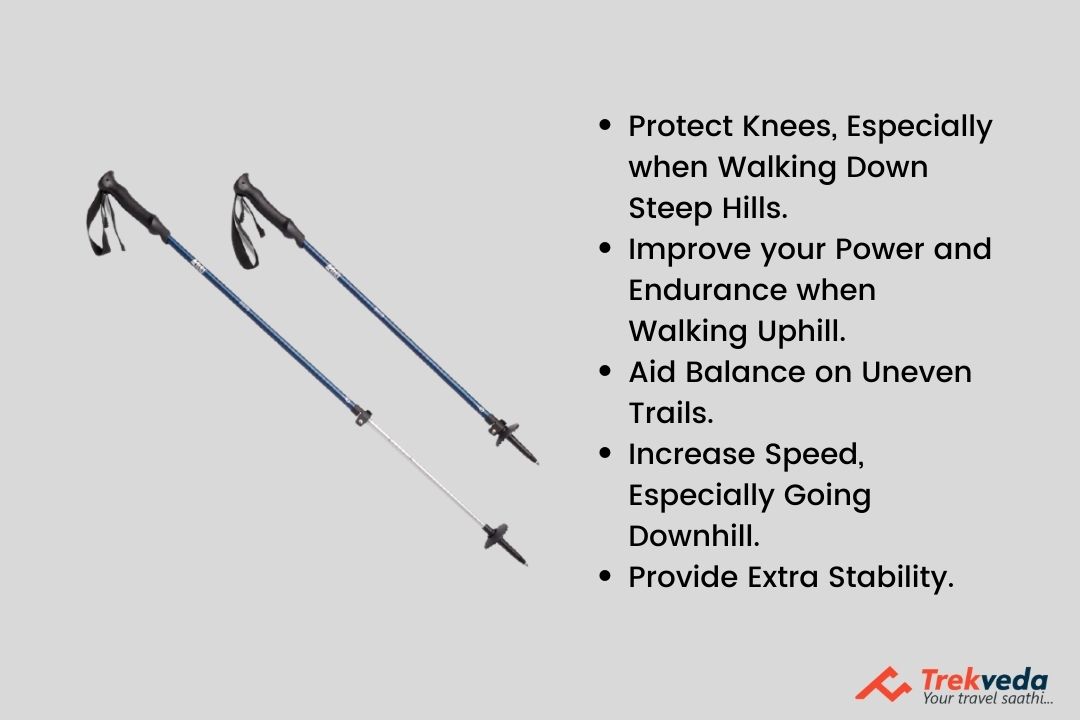
Having a trekking pole in your hand during the trek is boon, although at times it may bother you as an unnecessary article but it proves out most handy during the submit as it curbs your effort of straight inclinations of the high altitudes which often turns out tiring.
Other Essentials to Carry
An Additional Pack: This is one of the best practice you can do on one-day submits or treks where you need to get back to your campsite by the end of the day. Here you can pack your essentials like, water bottle, medical aids and snacks. This keeps you away from carrying the unnecessary weight.
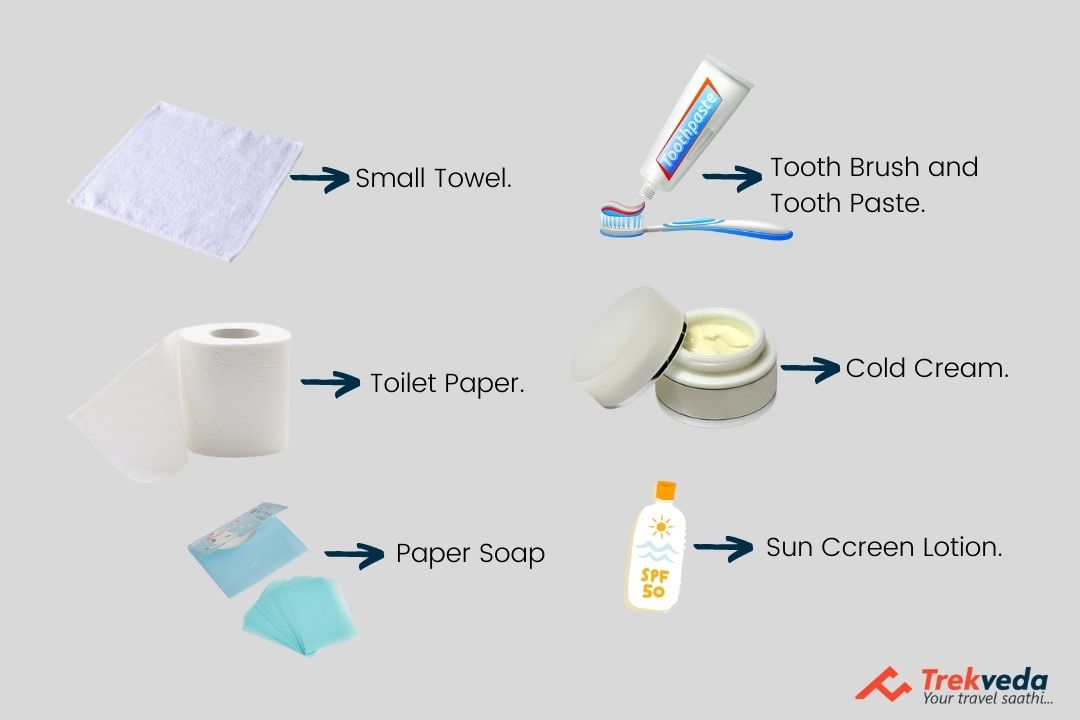
Be wise while choosing your cosmetic needs and daily use products. Refrain from using the non-biodegradable products, if you do so then make sure that you leave residue on the mountains. Always carry a zip bag to put such piece of stuff after use. Sanitary napkins also needs to be treated in the same manner.
Indispensable Water Bottles
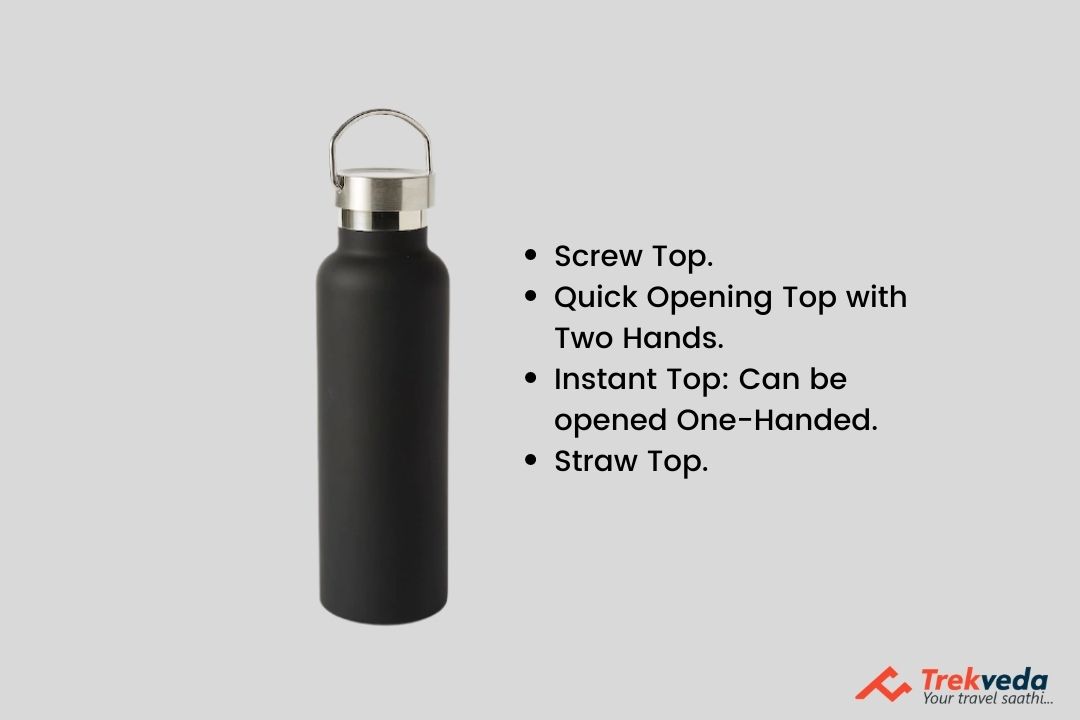
To keep your body hydrated during the trek, you are advised to carry your own water bottles during the treks since leaving plastic and its product is not advised on the mountains since they are not suitable for the environment of the altitudes.
Plastic Bags
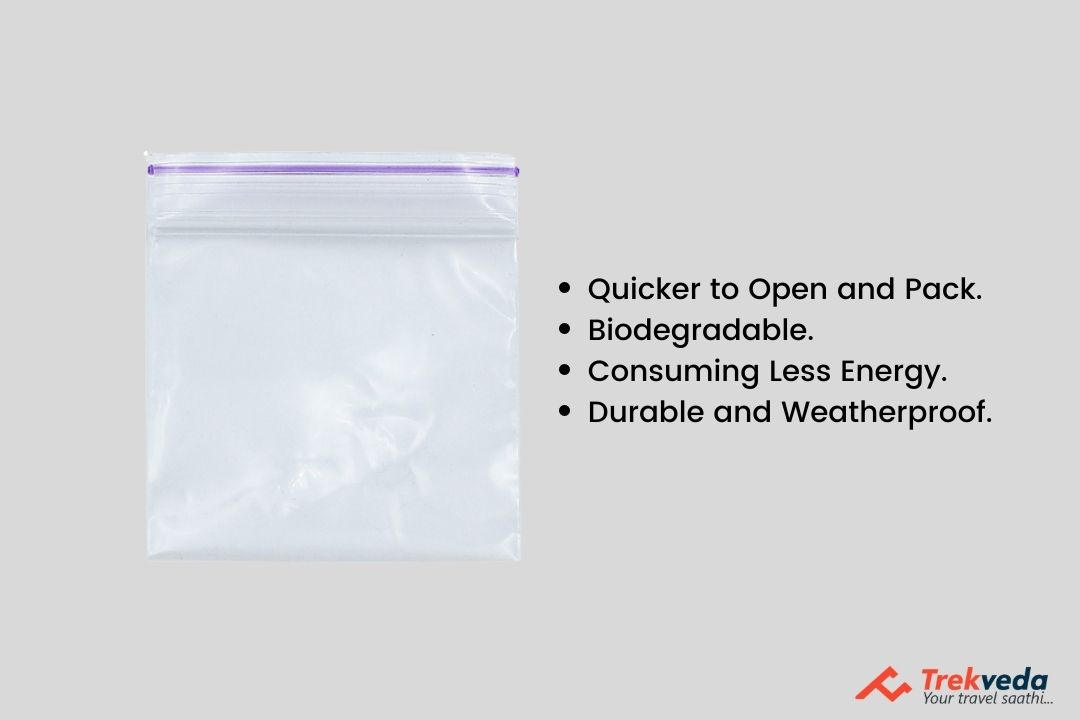
To keep everything organized, you should compartmentalize the stuffs into plastic zip bags and also carry a few in spare for wet clothes and other by-products.
Mandatory Documentation There are certain rules and laws that you need to abide by, while going for the treks, however Trekveda takes care of all such kind paper works which is inclusive in the package. Certain registration fees and document verification along with some permissions are required in order to protect the nature and its evergreen heritage for future. In addition to this, if you need to avail a guide, you can also hire a guide with some bucks and a nominal paper work.
Please carry the documents mentioned below. Documents two and three need to be downloaded (PDF), filled in, signed and handed over to the trek leader at the base camp.
✔ 1 passport size photos and an original + copy of government photo ID document – required for Sanctuary registration and TIMS (Trekker’s Information Management System) ✔ Medical Certificate (first part to be filled by a doctor and second part by the trekker) ✔ Disclaimer form (to be filled by the trekker)
Measures Taken by Trekveda to Ensure the Security of Trekkers
Trekking is altogether a different kind of adventure where you required to be physically and mentally prepared for the best and adverse, all at once. With high altitudes making it tough to breath, the scenic beauty of those pristine mountains leave you spell-bounded so that you forget to breath for a moment or two. In addition to the physical and mental preparation, there are certain aspect of the health that are needed to be considered at the first hand when you make up your mind for the trekking,
Trekveda, by dint of its team of trained professionals, leave no stone unturned to provide you with the best trekking experience while ensuring your safety as its priority. Here are some vital aspects that Trekveda includes in its checklist to ensure the safety of its trekkers.
Criteria for Fitness Analysis
Trekking at high altitudes demands endurance and fitness and those who are prone to any kind of physical or physiological ailments are advised to not to go for high altitude treks in the beginning. To get assurance about the trekker’s fitness, we comply with certain aspects of the being fit such as BMI (Body Mass Index) along with the fitness proof since we can’t put the trekkers into the risk.
Acclimatization is another important aspect when it comes to getting an adaptation to the climate at the high range treks. A day at rest is not just the rest but a chance to get used to of the place and its habitat.
Monitoring the health is one thing that is conducted regularly during the trek by the trek leaders which includes the monitoring of your blood pressure, oxygen level and pulse rate. Details of your health during the trek is maintained in the health card on the regular basis. Health card can be collected from the trek leader at the end of the trek.
Medical Kit for High Range Trekking
An ideal medical kit that’s developed for the trekking has Blood Pressure Monitor/checker, Stature, Oxygen checker and Oxygen Cylinder coupled up with certain must have medicines, in case of medical emergency:
- Dexamethasone
- Nifidipine
- Asthalin Inhaler
Trekking Equipment for High Altitudes
Trekveda provide you all the necessary equipment for trekking from tents to ropes. In addition to that, our trek leaders also ensure the safety by various safeguards they take time to time for your safety. Micro spikes are provided to attach to your shoes which help you to keep the traction on the snow and make it easier to climb. An additional gaiters are provided to cover the shows which prevent the entering of snow into the shoes. Customized tents are provided to the trekkers which ensure the warmth and temperature 10 degrees higher than the outside coupled up with high quality sleeping bags which can endure the temperature up to 15 degree Celsius below the freezing point.
Nutrition and Hydration
Trekveda, keep all your nutritional and hydration requirements on its checklist, our trek leaders will guide you to keep your body hydrated on the high altitudes as de-hydration can attract to the severe medical emergencies on high altitude treks.
We provide the highly nutritious meal to energize your body for the trek, however before certain long trails we ensure your nutritional requirements to be fulfilled with some high energy snacks or packaged lunch.
Make sure you keep up with your hydration and nutritional part as this can lead to some fatal consequences for your health.
In case of any symptoms you feel during the trek, don’t ignore or avoid them, immediately tell the trek leader.
Keeping up with the pre-defined processes and the guidelines will help you to have a memorable trekking experience.
What Trekveda has to offer in case of medical emergency like AMS, HAPE or HACE?
In case of medical emergencies, Trekveda and its trek leaders bear the sole responsibility to get you back to your wellbeing with their training and techniques. Suspecting any physiological disturbance in your body, immediately report to your trek leader as they are trained to counter such problems.
Problems like Acute Mountain Sickness can be prove fatal if not taken into consideration seriously on time. If you encounter/experience any of the symptoms such as persistent headache, fatigue or weakness, nausea, dizziness, loss of appetite, difficulty in sleeping, you shouldn’t let it go or treat it by your own either.
Acute mountain sickness is one of the most common yet the fatal problem trekkers face due to number of reasons, if the problem continues to persist, then you’re advised to descend down to the basecamp and then to visit the doctor immediately.
People with AMS are treated with number of medicines such Diamox, Nifidipine etc. coupled up with methods like Triple One Test- where one disprin is given with a liter of water along with the rest for an hour.
While AMS is most common at the high altitudes yet it can’t be risked taken casually as it leads to severe fatal conditions like HAPE (High Altitude Pulmonary Edema) or HACE (High Altitude Cerebral Edema) which, if not treated on time can lead to number of serious chronic disorders. These conditions need to not to comply with AMS, they can occur without AMS preceding.
It’s suggested to take every single disturbance into the consideration while you’re on the trek.
However, Trekveda is capable of tackling all the medical emergencies with its trained professionals yet there are several things that you need to consider, specially the intake of medicines and the knowledge about their advantages and side-effects. Don’t administer the medicine if you’re trekking through an organization, always seek help from the trek leaders, they are trained for such purposes, while in case of being a solo trekker, you should know about the medicines.
Keeping yourself hydrated and nutritionally fulfilled curbs the chances of AMS.
Risk and Response
A high altitude trek requires an audacious state of mind, however leaving on a bold excursion without computing the dangers is absolute idiocy. That is the reason we have recorded a couple of Risk and the Response arranged by Trekveda to limit or address the dangers in the most ideal way.
Risk: Altitude
Before you begin the trek, it is critical to comprehend the ramifications of high altitude on your body. Know about side effects of AMS (Acute Mountain Sickness) like mellow cerebral pain, queasiness and general distress.
Response: If you feel any of these indications, illuminate the trek pioneer on need and take after his directions. Each campground has as stretcher, completely prepared medical aid pack, oxygen chambers to address the circumstance.
Risk: Weather
Weather is unusual in the Himalayas. Despite the fact that we are constantly attentive about the evolving climate, nobody can ensure a snowfall, rain or Sun. Do comprehend that your security is of most extreme significance to us and we won't continue any further from the campground if the climate isn't ideal.
Response: The choice of the Trek Leaders and Guides to continue or sit tight for the climate to show signs of improvement will be last.
Risk: Injuries
Often, while trekking over troublesome territories, you may have minor wounds like leg sprain, wounds and so forth. Genuine wounds like breaks or real cuts are exceptionally uncommon.
Response: All our Trek Leaders are Certified Wilderness First Aid responders. They are prepared to deal with crises and can handle minor wounds with an all-around prepared medical aid unit. If there should arise an occurrence of genuine wounds, the patient is carried on a stretcher to the closest street head and is directed to closest therapeutic focus.
Risk: Lack of Communication
In the remote zones of the Himalayas, portable systems don't reach. On a trek, one is cut off from the universe of calls, SMS or WhatsApp Messages.
Response: We’d depend on walkie-talkies and sprinters to communicate between the campgrounds and the base camps.
Here is what the trek fee includes:
- Accommodation – Stay is included from Day 1 to the last day of the trek. You will be staying in the guest houses of the respective locations & camping on remaining days of the trek.
- Meals – All meals from dinner on Day 1 to breakfast till last day of the trek are included. We provide simple, nutritious vegetarian food on all days of the trek.
- Camping Charges – All trekking permits and forest camping charges are included.
- Trekking Equipment – You will stay in high quality tents and sleeping bags in all the camps. Our high-altitude sleeping bags can withstand temperatures as low as -10 ºC. We provide ice axes, roped, micro spikes, gaiters etc. as required.
- Safety Equipment – First aid, medical kit, oxygen cylinders, stretchers etc. will be available at all campsites to deal with emergencies.
- Services of an expert Trek Leader – All our trek leaders are qualified in basic / advanced mountaineering courses.
- Services of an expert Trek Team – The mountain staff on this trek consists of well-trained guides, cooks, helpers and porters.
Here is what the trek fee excludes:
- Transport to and from the base camp – Trekveda will offer the taxi services from and to the base camp.
- Food during transit to and from the base camp – The trek fee does not include meals purchased during the journey to and from the basecamp.
- Backpack offloading charges - If you wish to offload your backpack, there will be an additional charge of Rs. 1200 + 5% GST. The backpack cannot weigh more than 9 kgs. Suitcases/strollers/duffel bags will not be allowed. Please note that charges will vary for last minute offloading in case you decide to offload your bag after reaching the basecamp (Rs. 1400 + 5% GST). Online offloading in advance is possible up to two days prior to the trek start date.
- Stay at hill station on the last day.
- Personal expenses of any kind.
- Anything apart from inclusions.
- Buffer day – It is mandatory to have this extra day as any bad weather or rain will delay your pass crossing. If buffer day is utilized, you will need to pay Rs. 1,700 + 5% GST. This amount is to be handed over to your trek leader.
Terms and Conditions
Cancellation Policy
Cancelling a trek is like a real pain when you have been dreaming of it since a long time. But, to resolve it and to lesser your disappointment. We have a user-friendly cancellation policy for you.
So have a look.
Covid Relief Cancellation Policy
This Policy is effective from 1st June 2020 to 31st Dec 2020 only as per your booking date .
- If you are cancelling your trek prior 7 days from your trek date, then we provide you with the FULL REFUND .
- If you are cancelling your trek within 7 days from your trek date, then there will be NO REFUND .
- If you want to change the date of your trek, then it should only be done before 14 days from your trek date. No changes will be made within the 14 days from your trek date.
Trekveda Cancellation Policy
This Policy is effective from 1st Jan 2021 .
- If you are cancelling your trek prior 30 to 15 days from your trek date, then a 100% REFUND will be provided .
- If you are cancelling your trek prior 14 to 7 days from your trek date, then 70% REFUND will be provided.
- If you are cancelling your trek within 7 days from your trek date, NO REFUND will be done.
Trek Cancelling Exceptions
We never cancel any treks at Trekveda but In case we cancel your trek because of any natural calamities, political unrest, and sudden global health concern, riots, government instructions etc. So, Trekveda will issue you a voucher to redeem your trek in 1 year with any trek you want.
Trekveda Refund Policy
In case of refund, there will be a deduction of 4% bank charges and 5% GST from the total fee you have paid. Also, if you have opted for trek insurance, the amount will not be refunded. In the process of refunding the amount, the full amount will not be refunded in the first phase . It will take 15 working days to repay the half and another 15 working days for another half of the amount calculated according to the company's cancellation policy .
Former Cancellation Policy
Note- This Policy is only applicable for those who have booked their trek prior 1st June 2020 with us.
- Prior cancellation 40 days from the start of the trek is 90% refundable .
- Cancellation between 40 to 20 days from the beginning of the trek is 45% refundable .
- Cancellation between 20 to 10 days from the start of the trek is 10% refundable .
- Cancellation within 10 days from the start of the trek is non-refundable .
How to cancel your trek?
We don't want you to get into any situation where you need to cancel your trek, but sometimes things don't work the way we want. So no worries we have a most comfortable way for you.
- Drop an email on [email protected].
- Inform your trek coordinator about your cancellation and a reason for the same. Then they will help you with the futhure process.
What is Trek Voucher?
Trek voucher is your credit amount at Trekveda that you can redeem by trekking in future with us within 1 year.
How to use Trek Voucher?
You can get in touch with our sales executive on given numbers 9821325153/54/56 . They will help you in the redemption of your voucher.
Voucher Terms and condition:-
- The vouchers are valid for 12 months from date of issue.
- Unused values will not be refunded or attributed to any transactions after the expiry date.
- The vouchers can be redeemed against any Tour / Trek operated by Trekveda, the rates will be applicable as on day.
- The vouchers cannot be redeemed for cash, returned for a refund.
- The Voucher can be transferred to your family members / friends, at a reduction of 45% .
- The voucher can be redeemed for any Tour / Trek before 15 days of travel date, the base rates as on date will be applicable.
- The voucher can be extended 30 days prior expiry date, for 03 months , 06 Month and 12 Month with reduction of 30% , 45% , 60% respectively.
- Incase tour / trek amount exceeds the value of voucher, balance amount must be paid by online banking, Google Pay and Paytm.
- Trekveda reserves the right to cancel a voucher if we deem such action necessary i.e. after expiry date.
- Trekveda can vary or replace these conditions from time to time (including to introduce new fees).
Note- The voucher is non-refundable, non-transferable, and non-extendable.
Other Trek Policies
- The trek fee includes all costs of the trek from the start at the base camp to the end.
- Emergency during trek: In case of medical emergency, the trekker will be taken care at the primary stage since we don’t accompany the doctors during the trek, however our trek leaders are trained for the first-aid treatment. Post the first-aid Trekveda will take the liability to send down the trekker to the nearest basecamp or road head.
- Fitness: Before you head to plan a Chadar trek, your body fitness needs to be maintained for the high-altitude Himalayan treks since level of oxygen is considerably low at high ranges, thus proper cardiovascular training is a vital component of pre-trek preparation.
- Non-liability: Trekveda is not responsible for any loss/damage of your gears/equipment or other belongings on the trek.
- Payment: Payment for the trek can be done online through credit/debit card or net banking. Cheque/draft or cash is not accepted.
- Drinking and Smoking during the trek is strictly prohibited . If found flouting the rules, your participation on the trek will be cancelled with immediate effect.
Tour Payment Terms Initial amount of 20% of the Invoice amount, the Client must pay the balance amount 15-20 days prior to the date of departure of the Tour.
Adventure Tours (Trek & Expedition) Payment Terms:
- INR 1500/- per person as an advance booking amount to confirm your adventure tour.
- Remaining amount of your booking will have to be paid 1 days before the date of travel .
Tour Amendments / Cancellations Policy If the Client is willing to amend or cancel his/her booking because of whatsoever reasons including death, accident, illness, or any other personal reasons including non-payment of the balance payment, the Company is liable to recover Cancellation charges from the Client, as company had already paid your amount in advance in order to Guarantee your services.
For Other Tours
Note:- 1. 100 % Voucher will be provided if the trek/ tour is canceled due to unforeseen circumstances or any kind of Natural Calamities, Political Unrest, and Sudden Global Health Concern, Riots, Lockdown Government instructions etc. in this case Trekveda will issue you a voucher of respective amount having 1 year validity from Voucher date, which can be used in any trek of your interest operated by Trekveda
2. In case of any restriction/health issue (guest gets Covid +ve), we will be avoiding charging any cancellation basis documents been shared .The credit note for the same amount will be issued which guest can use in future.
Itinerary Policy
This itinerary is a sample itinerary based on the information available at the time of publication, all information given in this program Trekveda reserves the right to change any program information before or after your booking the tour due to any events beyond our control. In case if we are aware of any changes sufficiently in advance we will notify you at the time of booking, otherwise our Tour Manager or Local representative will inform you of the changes. Major road works or floods, landslides may necessitate route changes in the itineraries. All of these may cause us to make changes in the itineraries. The Company has mentioned the detailed itinerary, price inclusions & exclusions, special notes etc. in the pdf.
ACTIVITIES OF THE ITINERARY
Trekveda is a travel and holiday organizers only, we do not control or operate any airline, neither do we own or control any shipping company, coach or coach company, Hotel, Transport or any other facility or service mentioned in this program. We take care in selecting all the ingredients in your holiday; but because we only select and inspect them and have no control in running of them, we cannot be responsible for mechanical fault or any injury, death, loss or damage which is caused by the act or default of the management or employees of any hoteliers, airlines, shipping company, coach owner/ Transport operator who are the company’s independent contractors arising outside our normal selection and inspection process.
TERMS & CONDITIONS:-
1. There is no Contract between the company and the client until the company has received the initial deposit amount per person as specified for each tour package. The full payment must be received in accordance with procedures laid down under Payments Terms. If not paid in that time, the company reserves the right to cancel the booking with consequent loss of deposit and apply scale of cancellation charges as mentioned in the cancellation policy hereunder.
2. The Company has the right at any time and for any reason:-
- To terminate the Contract after acceptance of the deposit but prior to the Commencement of Tour without assigning any reason whatsoever. In the event, the Company terminates the Contract, the company shall refund the initial deposit amount without payment of any interest.
- To amend, alter, vary or withdraw any tour, holiday, excursion or facility it has advertised or published or to substitute an Independent Contractor of similar class if it is deemed advisable or necessary. In either case, the Company shall not be liable for any damage, additional expense, or consequential loss suffered by the Clients or for any compensation claims made.
- The Company would be operating its Group Tours with minimum group strength of 6 adult passengers in each group. If the group strength falls below 6 passengers, the Company reserves the right to Pre-pone OR Postpone OR Merge or Cancel the group. If the Company cancels the Group Tour for any of the above reasons then the monies paid till then by Clients will be refunded against the receipt copies. It is clear understanding between either parties that any loss arising on account of cancellation of flight / train / bus tickets booked by the Clients; either through the Company or on his/her own or through a third party; the Company shall not be liable for such losses or additional expense, or consequential loss suffered by the Clients.
3. No person other than the Company, in writing, has the authority to vary, add, amplify or waive any stipulation, representation, term or condition in this program.
4. In the event of the Company exercising its rights to amend or alter any of the services as mentioned in the itinerary, after such tour or holiday has been booked, the Client shall have the right:
- To continue with the tour or holiday as amended or altered.
- To accept any alternative tour or holiday which the company may offer. In either of these above cases the Client shall not be entitled to, or the Company shall not be liable to the Client for any damage. Additional expense, consequential loss suffered by him or to pay any amount as refund.
5. In case of any dispute, decision of TREKVEDA will be final and binding.
6. TREKVEDA reserves the right to call you back on the contact number shared by you on the website. Health & Safety: The Company shall in no circumstances whatsoever will be liable to the Client or any person traveling for:
- Any death personal injury, sickness, accident, loss, delay, discomfort, increased expenses, consequential loss and / or damage or any misadventure howsoever caused
- Any act, omission, default or Independent Contractor or other person or be any servant or agent , employed by them who may be engaged or concerned in the provision of accommodation, refreshment, carriage facilities or service for the Client or for any person travelling with him howsoever caused.
- The temporary or permanent loss of or damage to baggage or personal effects howsoever caused In this condition the expression “Howsoever caused” includes negligence on the part of any person.
7. No liability on the part of the Company arising in any way out of this Contract in respect of any tour, holiday, excursion facility shall exceed the total amount paid or agreed to be paid for the tour holiday, and shall in no case include any consequential loss or additional expense whatsoever.
8. If the Client has any complaint in respect of the services provided by any of the Independent Contractors, the Client shall immediately notify the same in writing to the Independent Contractor and a copy thereof should be handed over to the Tour Manager of the Company in order to enable the Company to take up the matter with the Independent Contractor so that in future other Clients do not face the same difficulty. a) Any claim or complaint by the Client must be notified to the Company in writing within 07 days of the end of this holiday tour. No claim notified to this Company beyond this period will be entertained and the Company shall incur no liability whatsoever in respect thereof.
9. Each of this condition shall be severable from the other end if any provision be invalid, illegal or unenforceable. The remaining provisions shall nevertheless have full force and effect.
10. Insurance: The tour cost does not include any costs towards the Travel / Meclaim Insurance premium. In case if the Client needs an Insurance coverage, it is suggested to go for suitable insurance policy on your own. The Client has to deal directly with the Insurance Company in case of settlement of any claim.
11. Change in Tour Price: The tour prices printed / advertised / quoted to Client are dynamic prices. The person booking tour early is likely to get the lowest price as communicated / offered by the Company, subject to availability of seats. Similarly, person booking tour at the last will be offered the highest prices. This pricing module has been adopted to get early bookings on tours. Hence it is quite obvious that persons travelling on a same group tour are likely to have paid different tour prices. The Company will not entertain any claim whatsoever on account of the same. Also it is clear agreement between either parties that the prices quoted in the proposal / brochure have been calculated based upon the prevailing hotel / transport tariffs and applicable taxes thereon at the time of printing this brochure. The Company reserves the right to amend the price published in this program in case of costs increased before the date of departure. All such increases in price must be paid for in full before departure by the Client. The company also reserves the right to charge offer time to time as per the present situation demand / circumstances.
12. Force Majure:-Acts of god (including exceptional adverse weather conditions), earthquake, fire , war (declared or undeclared), invasion, rebellion, revolt, riot, civil commotion, civil war, nuclear fission, Lockdown, strike, act(s) of omission/commission by any concerned government(s), or government agencies, judicial or quasijudicial authorities, occurrence of any event can force the Company to change or extended. Hence any additional expenditure occurred due to the above reasons the same will be borne by the passengers.
13. Please note trekking / driving time given in the program are approximate and it may vary due to break for refreshments, photography, bad weather and Road conditions.
The menus are pre – set menus provided for breakfast/lunch/dinner on the tour as mentioned under each Tour itinerary and inclusions as printed in our brochure. The meals will be served at restaurants of hotel of stay. The enroute meals or meals during excursions could be packed meals or served by enroute/local restaurants / Dhabas. We cannot process a special meal nor do we guarantee the special diet to the customer. We however reserve the right to change the meal arrangement if circumstances make it necessary to do so. If a tour participant does not avail his/her meal in stipulated time; he/she has to avail the meal on his/her own arrangement and expenses. No claim can be made for the meal which he/she has missed and not utilized.
Itinerary Changes
For the comfort and convenience of our clients, we will sometimes reverse the direction, or slightly amend the itinerary. We will try to advise you of these amendments, prior to the start of the tour or on tour. In the event that a tour participant misses on any part of the sightseeing tour or any such tour due to delay on his part, he will not be entitled to claim refund of the same.
We have mentioned the indicative names of the Hotels for each tour. We reserve the right to change the same due to unavoidable circumstances. In that case we may provide alternative, similar accommodation for which we are not liable to pay any refund. We will not be responsible or liable in case of loss of property or life at the Hotel. Similarly any damages caused to the hotel rooms during your stay, shall be payable by the Clients and the Company will not be liable for the same.
Transport / Coach / Sitting
We use Deluxe 2 X 2 Coaches or vehicles such as Tempo Traveller, Tata Winger, Chevrolet Tavera, Mahindra Scorpio, Toyota Qualis, Tata Sumo or similar as per the availability of vehicles and actual size of the group. Our tour manager / local representative will take reasonable care of your luggage but if you are carrying any high value items on the coach, we advise you not to leave them behind when you leave the coach. We will not be responsible or liable in case of theft or robbery of the said items from the coach. All baggage and personal effects are at all times and under all circumstances your responsibility. Any damages caused to the hotel rooms / coach during your stay, shall be payable by the Clients and the Company will not be liable for the same. The drivers of the vehicles are bound by specific rules like maximum driving hours within a day/during a week, rest period per day/week etc. Clients will have to strictly adhere to the prescribed timetable for the day so that the driver can complete the travel. In case, any of the sightseeing schedules is missed due to delays caused by the client, the same will not be refunded to the client under any circumstances. Please note that AC will not work in Hills and no claims to this regard shall be entertained.
Risk and Liabilities - Clients shall agree that Trekveda shall not be held responsible for consequences of natural calamities, weather condition, failure of scheduled airline, detention and delays due to quarantine, strike, theft, force major, civil disturbance, government restriction or regulation, accident by aircraft, car, bus or any other form of transport relating to program schedule. The travelers understand that such situations may occur, and we will inform you of the situation as soon as we have knowledge of it. The right is reserved to cancel or alter any package as conditions require, all additional cost occurs in such case will fully be borne by the travelers. Also, Trekveda shall not be held responsible for any loss/damage of your personal belongings.
- Price is subject to change without any prior notice
- Price is based on the “Base” Category of Hotel Room; this is Irrespective of the Package Category Chosen. Upgrade to Higher Category is available at an extra cost.
- All domestic Hotels/Transport rates are based on current tariff & subject to change without prior notification; the revised rates will be charged extra.
- Many regions do not have star category hotels. Generally there isn’t any star categorization in this sector, however the same is demarcated as per prices and put into slabs of 2*/ 3*/ 4*or STD/ DLX/ PRM or equivalent.
- Quote based on Non-Ac Rooms in Hills. AC Rooms on Extra Charges
- Please be reminded that all special requests like early check-in, smoking, non-smoking, views, floors, king, twin, adjoining and/or interconnecting rooms are strictly subject to availability upon arrival and cannot be guaranteed prior. Any expenses arising out of this is to be borne by the customer.
- Only 01 extra bed/mattress is allowed per room. This extra bed means a Mattress / Roll over Extra mattress on floor provided where proper extra bed isn’t available.
- In case of guests cannot climb the higher floors, we request you to update this at the time of booking so that we may take appropriate action and try for rooms in the Ground floor. This is again subject to availability and difference if any will have to be settled directly before check out.
- In hills, hotels may be located in a way where the view might be of a building in the front, beside or behind it.
- There will not be any refund in cased any of the sightseeing is missed/uncovered during the trip.
- The Hotels may/may not have some of following amenities as per its policy. Tea/coffee maker/ mini fridge/ enhanced toiletry kit (with moisturizer, tooth paste, brush, shaving kit, lufa, bathroom sleepers, bath-robe) etc.
- For meal plans, menu will be on fixed plan/ buffet basis and not on A-la-Carte basis. MAP & AP Meal plans do not include Evening snacks & cold drinks / liquor, Soups or Deserts. For order on A-la-Carte basis, guests are requested to make direct payment for additional items.
Incidental charges due to unforeseen situations
All arrangements made by Company are in the capacity of an agent only. Company will not be liable for claims or expenses arising from circumstances beyond our control such as accidents, injuries, delayed or cancelled flights & acts of Force majeure/ traffic jams / traffic halts/ diversions/ bandh/ curfew, Union strike, VVIP movement, etc. – We will request you to bear with us the situations beyond our control. We will arrange for alternate sightseeing. In case of discontinued itinerary due to these reasons no refund on the hotel booking will be provided and alternate accommodations (as per availability) are managed in the place where you have to stay back. While it is our endeavor to manage the alternate arrangements during such scenarios, please note the difference may be charged for the same.
1. Is Stok Kangri trek suitable for the Beginners? Stok Kangri trek is graded as difficult trek with an altitude of 20,190 Ft. A beginner can’t opt for Stok Kangri trek.
2. Where Stok Kangri trek is situated? The trek starts from Leh Ladakh situated in Jammu & Kashmir.
3. What is the physical fitness requirement for Stok Kangri trek? Stok Kangri trek is a difficult trek. Hence, and not recommended to the beginners, only those can hit the trail to Stok Kangri, having experience in Himalayan treks before.
4. What is the best time to do Stok Kangri trek? The best time to visit Stok Kangri Trek is between May and mid-October.
5. What is an age limit for Stok Kangri trek? Age limit for Stok Kangri trek is minimum 20 years.
6. Which mobile network words in Stok Kangri trek? Stok Kangri trek nestled at an altitude of 20,190 Ft. which is inaccessible for any mobile networks. So, it would be better to inform your family earlier.
7. Is there any risk of wild animal or avalanche in Stok Kangri trek? There are very few chances of Avalanche & wild animals in Stok Kangri trek; therefore, it is advised to not go beyond your trekking group.
8. Is liquor and smoking allowed in Stok Kangri trek? No, Liquor and smoking aren’t entertaining in Himalayas, for your own health where people get easily sick of high altitude. Having liquor in Himalayas is not at all advisable and smoking? A big no, because one needs fresh oxygen to trek, therefore smoking is like a Trauma.
9. What is a trek distance of Stok Kangri trek? Stok Kangri trek distance is 40 Km.
10. Is Stok Kangri trek hard to Conquer? No, the trek is not hard to conquer; anyone with decent fitness and have at least an experience of Himalayan treks before.
+91 8534094170
Similar Tour Packages
Book your tour.
Choose Trek
Customise Trek
Suggest me a trek
Rent a gear
Volunteer Program
Blogs & Articles
Discounts & Offers
Stok Kangri Expedition – Ladakh
Stok Kangri Expedition – 4th Aug to 11th Aug 2012

Written By: VISHAL JHANJI
- Search for:
A little something about you, the author. Nothing lengthy, just an overview.
Explore 360
Find Your Expedition
- Mountaineering
- Weekend Wonders
- 360 Pyrenees
- Womens Only
- Meet the 360 Team
- Latest News
- Terms and Conditions
- Grading Information
- 360 Blogs & Updates
- Social Media
- Testimonials
Select Expedition
Need inspiration, stok kangri.
P4 - Sustained physical effort calls for a state of high conditioning. You should already have experience of tough challenges (P3) and be regularly training as part of your normal routine. Expect days of up to 8 hours and longer while carrying a pack up to 8-14kg in weight. Summit night could be easily in excess of 12 hours.
Visit our Grading Information page for a full overview.
T3 - May involve harder scrambling or some trekking and climbing with ropes. If snow is encountered then glacier travel with ropes, ice axes and crampons will be necessary. Basic climbing skills are ideal, but these will also be taught (and certainly practiced) during the expedition and pre-summit phase.
Date & Prices
Pics & Vids
We are sad to have to inform you that Stok Kangri is now closed for the next few years (2020 and until further notice). This is to help the land recover from tourism. We have kept Stok Kangri up as we know many of you are keen on this peak so to make this information easier for you to find.
As an incredible alternative (not as a second-best) we are now running Kang Yatse .
Stok Kangri , 6,153m, a stunning mountain of the mysterious Ladakh region of Northern India . The trek to its summit is achievable by someone with little trekking experience but huge enthusiasm. It’s a fantastic entry level 6,000m peak as the ascent is not considered technical, especially as the majority of the mountain is snow-free in July – early September.
Ladakh is a land of many contrasts. It’s one of the highest, driest inhabited regions on Earth, a semi-desert where Buddhism meets Islam, India meets Tibet and where the Himalayas meet the Karakorum. Dotted with small villages and ancient monasteries, the high mountain panoramas blend into eternal blue skies and vibrant festivals spring up with cheerful regularity. Arriving from Delhi into Leh (at 3,524m) we spend a few days acclimatising, exploring the town and local monasteries. Our trek begins at Choksi where one extended family farm the small, verdant valley. From here the trek is a wonderful ascent through wild Indian countryside, rural villages and up into spectacular mountain scenery of plunging rivers, steep gorges and high passes surrounded by majestic snow-capped peaks.
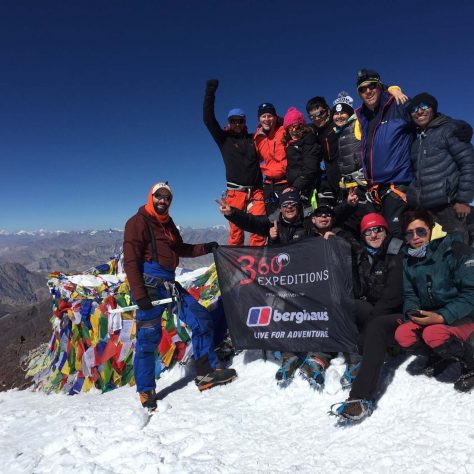
Date & Prices
For private trips or bespoke itineraries inc. different dates, please contact the 360 office on 0207 1834 360 . A monthly payment plan is possible, please contact the office to chat through the options.
We currently have no scheduled dates for this expedition, however if you give the office a call on 0207 1834 360 it would be easy for us to get this up and running.
Please note that if 360 is booking your international flights, a supplement may be applicable
if the flight budget (as seen above) is exceeded.
- Local guides and a 360 guide (depending on group size)
- International and domestic flights plus taxes
- Airport transfers
- Packhorses for porterage
- Accommodation during trek (camping)
- Accommodation in Leh in doubles/twins with breakfast
- All accommodation based on two people sharing
- All food whilst on trek
- Breakfast when city based and 2 dinners
- Climbing gear (crampons, ice axe) for those without
- Park fees and monastery entrance fees
- Discount at Cotswold Outdoor
- Monthly payment plan, on request
Not Included
- Indian visa
- Personal equipment
- Staff and guide gratuities
- Personal travel insurance
- Items of a personal nature – laundry, room service, alcohol etc
- Unscheduled meals
- Any additional costs associated with leaving the expedition early including any airline surcharges as a result of changing return airline tickets
- Single supplement £240
- Airport transfers when not booking on with flights
DAY 1 : Depart UK
Fly to Delhi and connect for our Leh flight. The spectacular connection flight over the Himalaya takes us to one of the highest airports in the world at 3,350m.
DAY 2 : Arrive Leh
Today we arrive in Leh. If the weather is good we should see the Karakorums from the plane, and get a peek at Stok Kangri as we land.
The rest of the day is free to relax and acclimatise to the altitude (3,500m). In the afternoon we can have a wander around Leh and its bazaars and explore our home for the next couple of days.
DAY 3 : Leh
We stay in Leh in order to begin acclimatising. You are welcome to join us on a very leisurely sightseeing tour to three of the major gompas (monasteries) in the area. We first drive to Shey, a former Royal Palace of the Ladakh kings. Inside is a small temple containing a 350 year old copper and gold statue of Buddha. Next stop is Tikse, perched prominently on top of a hill, its red and white buildings visible for miles. A recently built temple contains a magnificent image of the Future Buddha. Final stop is Stakna, a small, friendly monastery high above the Indus River.
DAY 4 : Leh – Choksi (3,210m)
We leave Leh and drive to the start point of our trek. We follow the Indus River for a short while before turning off onto an unpaved track that winds along the Zanskar River. The open valley begins to narrow and steepen until we find ourselves driving along the bottom of a magnificent gorge. At the first bridge we leave the vehicle, put on our packs and have a short climb to Choksi (3,210m) where we camp. This pretty village is inhabited by one large extended family who farm this small valley. In the afternoon we can have a short acclimatisation walk in preparation for tomorrow or just explore our environs.
DAY 5 : Choksi – Shepherds hut
Today is our first day of proper trekking as we climb steeply out of Choksi, the valley narrowing spectacularly as we get closer to its head. Looking back over our shoulders, the colourful Ladakh mountains are spread before us. We reach camp around lunchtime, and have the afternoon to explore the area, potentially climbing up to the ridge opposite us for views of the surrounding peaks.
DAY 6 : Kang La (4,900m)
We have a short morning’s walk today up to the base of the Kang La (4,900m). After lunch we can climb up to the top of the small rocky peak behind our camp. At 5,056m the views are magnificent – we can see the Kang La and Palam Peak ahead and the Himalayas are spread in front of us.
DAY 7 : Kang La (5,260m)
Although the altitude gain today is seemingly small, today remains a tough day as we head for our first pass. The climb is gentle and long at first, but the last section is steep, rocky and challenging as we try to identify the little-used path.
Once we reach the pass the climb up Palam Peak (5,380m) is well worth doing for the views from its summit that are almost as good as from Stok Kangri itself. Looking behind us towards Leh, now several days past, we look ahead towards Stok Kangri, our objective. All around us are panoramic views of the Himalayas.
We continue from the top, contouring the top of the valley in view of Stok Kangri. Just below the ridge is a high camp we can use, or we continue down towards the base of Ganda La, depending on the weather.
DAY 8 : Ganda La (4,970m) – Rumbak
We continue round the valley following the contours once more and then climb up to Ganda La, our second pass, and the entrance to the Markha Valley. From here we can identify the path for the next couple of days, as well as enjoy the spectacular views of the north face of Stok Kangri in the east and the Karakoram Range in the north. The mountain slopes of Gander La are home to several species of Himalayan wildlife such as blue sheep, marmots, golden eagle and the mystic snow leopard. After enjoying the views we descend down the valley and come across the one house village of Yurutse before entering the Rumbak Valley. Rumbak is inhabited by 20 families and a small gompa.
DAY 9 : Rumbak – Mankarmo (4,300m) via Stok La (4,950m)
Today is a big day of trekking, but also one of the most rewarding as we cross the Stok La with its amazing colourful rock formations. The path slopes gently, but soon starts to steepen as it zigzags towards the pass. The views of the Indus Valley, Zanskar and Karakoram Ranges once we reach the pass are second to none, while layer upon layer of multicoloured rock cathedrals are spread before us in every direction.
We then drop steeply down the other side, levelling off to contour the valley once more to meet the river that drops from Stok Kangri, following it until we reach Mankarmo, a shepherd settlement.
DAY 10 : Mankarmo – Base Camp (5,000m)
The trail from Mankarmo climbs gradually through a rocky river bed towards Base Camp. As we climb higher we can see the north east face of Stok Kangri ahead of the valley. The distance today is quite short so we take our time. After a warm lunch we can get a good rest and in the afternoon organise our climbing gear for the early morning push for the summit. There will be a full briefing about tomorrow’s ascent and a run through of walking in rope teams and with crampons. After an early dinner we retire to bed to rest for a few hours.
DAY 11 : Summit (6,173m)
The summit push, like many others, is long and hard. We’re up very early for coffee and porridge before setting off around 2am. The initial climb is gradual, but after about 3 hours we cross the glacier and things get steeper. At around 5,700m we traverse to the exposed left ridge of the mountain, scrambling up the rocky, icy final section to the summit.
The route isn’t technical, but the altitude and cold will make it hard work. But hard work will be rewarded with stunning views of the Himalayas and Karakorums, and on a very clear day the sunrise might even pick out K2 in the distance. After lapping up the views and catching our breaths, we head carefully back down to basecamp for a warm brunch, and the chance to climb back into our sleeping bags and catch up with some sleep.
DAY 12 : Base camp – Leh
Our final trek day is a stunning one as we wander back down a spectacular valley with wonderful colourful rock formations culminating in our emergence into a fantastic gorge before the trail widens and we reach Stok. Here our transport will meet us and return us to Leh for hot showers and a welcome celebration that evening.
Sometimes we are lucky and the Leh festival coincides with our date and if this is the case you could be in for a colourful afternoon/evening. The festival is one of the major cultural celebrations in Ladakh and takes place in Leh on a large scale with a procession of several cultural troupes from different parts of the region which traverses through Leh Market. There is dancing, singing, traditional music and people wearing colourful traditional Ladakhi dresses. The festival takes place in Leh and surrounding villages with archery, polo, masked dances from the monasteries and dances by cultural troupes from the villages. There are musical concerts too.
DAY 13 : Leh to Delhi
We have an early start from Leh to catch our flight back to Delhi. All flights from Leh arrive either mid-morning or early afternoon into Delhi as, flying later in the day, there is always the risk of storms over the mountain.
Flights from Delhi back to the UK generally depart late evening or early morning which means we’ll have a bit of a long layover (somewhere between 9-12 hours depending on which flights we secure).
There are a few options:
As there is no left luggage store at the airport it may be worth booking a room at a local hotel (if there are a few of you) and leaving your big bags for the day. There are lots of hotels around the airport ranging in price and luxury (check booking.com) so you could always book a room and sleep all day.
The airport is well-served by public transport (the metro is great and goes directly to the airport) so you could take a trip into town and see some of the sights – there are also lots of companies offering sightseeing tours from the airport.
Just make sure that whatever you do, you are back at the airport with your bags ready to check in for your flight back to the UK!
DAY 14 : Depart Leh/Arrive UK
Today’s timings are dependent on your international flights.
If 360 are securing your flights, you will generally be departing Delhi in the early hours of the morning and arriving back to the UK today.
This will be dictated by flight routes, times and costs and if you tick “flights included”, then 360 team will do their utmost to find the most appropriate flights, giving you the best options. Please do let the office team know at the time of booking if you have a preference, and we will always do our best to accommodate.
These are subject to minor changes depending on flight arrival and departure times, weather, group dynamics and fitness and so on, but the itinerary outlined provides an excellent indication of the expedition and what you will experience.
Check out our video on YouTube for what to expect – https://www.youtube.com/watch?v=V1OIgvrSSPw
Bags & Packs
A 90 -120L duffel bag to transport kit. A duffel bag is a strong, soft, weather resistant bag without wheels but with functional straps for carrying. Suitcases and wheeled bags are not suitable
Approx. 40L capacity. Your day to day pack that you carry with your daily essentials, fitted with shoulder straps and importantly a waist belt
Nylon rolltop bags that keep fresh clothing and other important items like passports and iPods dry in the event of a total downpour that seeps into your kitbag. Good for quarantining old socks.
Please note that many countries are now banning plastic bags. We would always advise buying re-usable nylon rolltop bags for keeping your kit dry (and sustainability).
Waterproof rucksack cover
To protect rucksack from rain
Small kit bag or light bag
This is for any kit you intend to leave at the hotel and could even simply be a heavy duty plastic bag
For use on your kit bag for travel and on the expedition plus your hotel bag
Quantity: 2
Sleeping Gear
4 season sleeping bag.
You should get a sleeping bag rated to -10C and choose a sleeping bag that functions within the comfort rating of this temperature. A silk sleeping bag liner will enhance this rating on the coldest nights
Sleeping bag liner
Silk is best for keeping the bag clean and you a little warmer
Sleeping mat
A full length self-inflating rather than ¾ length Thermarest
Warm headgear
This can be a warm hat, beanie, balaclava, anything to reduce the heat loss from your head
Wide brimmed hat
Keeps the sun off exposed areas like ears and the nape of the neck
Essential for protection from the sun and dust
Preferably wraparound style
Ski goggles – Category 3 (excl. July - September)
For days when it may be snowing and very windy. Very useful on summit day. Only required when trekking outside the period July to September
Buy the highest SPF you can find as UV intensifies with altitude
Sun cream will not work on your lips and they are very susceptible to burn without proper protection
This is the layer closest to the skin and its principal function is to draw (wick) moisture and sweat away from the skin. You can also get thermal base layers for use at higher altitudes that provide an additional insulative layer while still drawing sweat during times of high exertion
Quantity: 3
These are typically lightweight microfleeces or similar technology that provide varying degrees of warmth and insulation without being overly bulky or heavy to pack
Gilet (optional)
Optional – A great low volume additional layer to keep your core warm, whether down, primaloft or fleece
Light insulated jacket
A lighter jacket such as a Primaloft or lightweight down which can be worn at lower to mid altitudes is a great addition to your kit offering greater flexibility with layering
Soft Shell (optional)
Optional – These should be windproof (not all are) and insulative. They are mostly made of soft polyester and sometimes resemble a neoprene finish which makes them very mobile and comfortable to wear. While offering a degree of weather repellence, they are not waterproof
These jackets are thin, highly waterproof and windproof and worn over all other items of clothing. You’ll find these made of Gore-Tex or other proprietary waterproof yet breathable technology. Inexpensive hard shells that aren’t breathable will prevent evaporation, making you sweat intensely and are not recommended
Down jacket
These provide the best insulation and are worth every penny. Ask advice in the shop (or from us) when buying the jacket and mention you want it rated to -20C and the assistant will recommend the correct fill for you
Warm gloves
Consider liners or a light polartec pair for lower altitudes and evenings, and a thicker waterproof pair like ski gloves for higher altitudes
Down mitts & waterproof mitts
Essential for higher altitudes and cold temperatures. To be worn with a liner glove underneath and waterproof & windproof layer over the top.
T-shirts / Trekking tops
For wearing in Leh and lower down the mountain when the weather is warm.
Trekking trousers
These tend to be polyester so they dry quickly after a shower and weigh little in your pack. Consider perhaps a pair with detachable lower legs as an alternative to shorts
Softshell trousers
Windproof or thermal lined trekking trousers for higher altitudes and the summit phase. Thermal leggings can still be worn underneath if necessary
Thermal insulation for the lower body
Waterproof overtrousers
Like the jacket, an essential piece of kit to stay dry and should also be Goretex
Merino or wicking material, not cotton. How many pairs you take is entirely up to you
For wearing in Leh on your days off and for lower down on the mountain. Whilst Leh is fairly liberal, longer shorts are preferable.
4 season trekking boots
Well broken in with mid – high ankle support
High altitude plastic boots (excl. July - September)
Double or triple layered to keep feet warm. Either La Sportiva G2 SMs, Scarpa Phantom 6000s, La Sportiva Spantiks or 8,000m boots are suitable. Make sure you can fit 2 pairs of socks for added warmth with room to wiggle your toes. Only required when trekking outside the period July to September
High altitude socks (excl. July - September)
These socks are super thick to provide maximum insulation. Three pairs, keep one clean for summit day, wear with a thinner inner. Only required when trekking outside the period July to September
Trekking socks
Start with lighter socks lower down, working up to thicker pairs for higher up as it gets colder. Some people like a clean pair every day, others are happy to change every other day – that’s a personal choice
Quantity: 4
Spare laces
Just in case
For camp, saves stomping around in heavy boots for the entire day. You could also opt for walking sandals or Crocs.
Technical Equipment
Climbing harness (available locally at no cost).
We recommend Petzl harnesses. Try a variety on in a shop before you buy to ensure a good fit. Legs clips are a good option and avoid having to step into the harness to put it on. Harnesses are available locally at no cost.
HMS Locking karabiners
Climbing equipment, for attaching a rope to your harness
Sling (60cm)
Quantity: 1
Ice Axe (available locally at no cost)
A walking ice axe between 55cm and 65cm. Go to an outdoor shop and try different ones for weight and size so that you get one that feels good to you (available locally at no cost)
Crampons (available locally at no cost)
12 point mountaineering crampons with anti-balling plates that fit your specific boots (not ice climbing crampons), (available locally at no cost)
Micro crampons
A smaller style of crampon, designed to give you a bit more grip on more icy terrain when full crampons are too much, or if you’re wearing lighter boots. Microspikes can be invaluable on slippery slopes, and we would suggest they are carried in your day pack with you when higher up on the hill. Please note these cannot be hired in situ – but as they are only around £15, hopefully a good little investment for you anyway!
(An example here , though other brands and styles are of course available.)
Water purification
Although generally all water is boiled some prefer to double up and add purification tabs as well. Always good to have in your bag
Water bottles/bladder
3L equivalent – Camelbaks are useful at lower altitudes but have a tendency to freeze up at higher altitudes without insulation tubes, Nalgene bottles are better at altitude and can be put in your down jacket
Pee bottle (+ optional Shewee for the girls!)
A good idea if you are storm bound at higher camps. A 1ltr Nalgene bottle is a good option but do make sure you label it as your pee bottle!!
Keep it simple on the mountain. Essentials are toothbrush, toothpaste and deodorant. Moisturiser is advisable, everything else is a luxury!
Travel towel
Travel towels from the likes of Lifesystems are perfect
Preferably biodegradable, these are great for washing when modern shower facilities become a thing of the past
Alcohol gel
A must have for good camp hygiene
Insect repellent
For early stages and once back down
Toilet paper
Provided on the mountain but a spare in your daysack may be useful if you need to hide behind a rock between camps
Nappy sacks or dog poo bags
Only needed to bag your toilet paper if you are caught short in between camps and for keeping your rubbish tidy in your tent
Medications
Personal first aid kit.
The 360 med kits are designed to be used in emergencies and akin to an A&E rather than a pharmacy on Expeditions so please come prepared with useful meds for yourself such as painkillers (Ibuprofen if you can take it and a Paracetamol) plus blister plasters, plasters, antiseptic, rehydration sachets and any muscle rubs you wish to use.
Personal medication
Keep this in your daysack
Miscellaneous
We recommend Petzl head torches. Bring spare batteries.
Trekking poles
These tend to be a personal preference but help with your stability and can dampen the pressure on the knees coming down hill
Bring plenty of spare batteries and memory cards
Penknife (optional)
Sewing kit (optional).
You will be fed very well and given snacks each day however we advise bringing a small selection as a little bit of comfort. For summit night it’s always good to have a few extra chunky bars for that extra boost. Energy gels and protein bars are not suitable
Documentation
Don’t forget this! Your passport should have at least 6 months validity. With your passport expiry date at least six months after the final day of travel.
Copy of passport
Scan of passport picture page
Passport photos x 4
We need these to obtain your climbing and trekking permits
A visa can be obtained from the Indian Embassy in London or using the e-visa website . Non UK residents should check with their local Indian Embassy
Dental check up
We recommend you have a dental check-up before your trip. New fillings can be an issue at altitude if there is an air pocket left in the gap
We recommend you take around $120 – $150 onto the mountain in small denominations to tip the local team. Plus about $250 for any extras along the way, satellite phone calls etc.
Travel insurance
Copy of own travel insurance details. And relevant contact numbers.
We have a partnership with True Traveller and would recommend that you contact them when looking for travel insurance for your trip with 360. However, it is vital that you ensure that the insurance cover they offer is suitable for you, taking your personal circumstances (items to be insured, cancellation cover, medical history) into account. Many other insurance providers are available and we do recommend that you shop around to get the best cover for you on the expedition you are undertaking.
It is your responsibility to ensure that you have the appropriate insurance for your intended trip. To include medical evacuation and coverage up to the maximum altitude of this trip.
Food and Water
What will we be eating.
Food served on this trek is vegetarian and consists of a wide variety of Tibetan, Indian and continental dishes.
Breakfast: Chapati, bread, jam, cheese, butter, cornflakes, omelette, porridge, pancake, tea, coffee
Lunch: bread, cheese, jam, fruit, spring rolls, chocolate, boiled potato and egg.
Dinner: Tibetan, Indian and continental dishes.
If you have food allergies, let us know in advance and we’ll do our best to cater for these.
Where does the drinking water come from?
Drinking water comes from a stream or spring near the campsite. As it’s mostly rain run off or snow melt it’s going to be pretty pure to start with but we’ll boil or treat anyway for good measure.
How often is fresh water available to top up during the day?
There are streams and springs on the way so bring purification tablets or a water filter (the latter are noticeably heavier and bulkier than the former) you can replenish whenever you run out, but generally we fill our bottles up in the morning before we set off.
Accommodation
How big are the tents.
We use 3 man tents for two people to give you a bit more personal space and more room for your gear.
Will I have my own room/tent?
Most altitude related symptoms manifest themselves at night. We therefore recommend room and tent sharing from the onset of all our expeditions. Room share is always organised according to sex and where possible age groups. Obviously if you are climbing this mountain with a friend or partner then share rooms with them. If you have joined the team by yourself then it is highly likely that you will be sharing a room with your pre-assigned room buddy unless prior arrangements have been made.
If you would like your own hotel room, please contact the office to make arrangements, a modest single supplement fee will be requested.
Do you use a mess tent for dining and relaxing?
Yes, we provide dining tents for meals and to relax and wind down in after a day’s walking.
Will the camp be freshly set up or will we be staying at existing camps at a set site on the way up? What will the lavatorial facilities be?
There are no fixed camps in the mountains, so we carry all camping gear with us on horses, pitching camp near some of the reliable water sources. In terms of the camp “facilities”, there is a portaloo toilet in its own tent, and a shower tent.
Health and Safety
Am i likely to suffer from altitude sickness on this expedition.
There are different types of altitude sickness. Although our acclimatisation regime ensures that everybody enjoys the best possible chance of getting high on the mountain, altitude related problems can happen. The most common of this is high altitude sickness – AMS (Acute Mountain Sickness). Symptoms for this can include headaches, nausea and vomiting.
This sounds quite dramatic but generally this is just the process your body naturally goes through to adjust to the higher altitudes and the reduced partial pressure of the atmosphere. For some people the acclimatisation process takes a little longer than others.
For our guides this is all part and parcel of ascending a 6,000m peak and, although we assess each client’s personal situation carefully, we also further consider the compounding effects of dehydration brought on by excessive vomiting and loss of appetite. AMS might sound frightening but our guides are fully trained (and highly experienced) in helping relieve your personal symptoms and providing advice on how to best proceed.
What can I do to help prevent AMS?
In most cases AMS can be avoided by following guidelines:
- Drink lots of water
- Walk slowly
We recommend that you familiarise yourself with the various affects that altitude can cause. During your pre-climb briefing, we describe altitude sickness to you in detail, and advise you how to cope with it. The most important thing is not to fear it, but to respect it and to know how to deal with it and more importantly tell your guides how you feel.
Our guides have seen every condition that can occur on this trek, and they will always know how to deal with problems.
Is there a risk of getting HACE (High Altitude Cerebral Edema) and HAPE (High Altitude Pulmonary Edema) on the mountain?
HACE and HAPE rarely occur on this trek and our guides are fully trained in recognition of the onset of these problems and will deal with them at the first sign of their development.
Should I bring Diamox on the expedition with me?
Although we recommend you come armed with a course of Diamox or other high-altitude drug on this expedition, we do not recommend that take you these as a prophylactic during the trek or climb. We view Diamox as a treatment drug rather than a preventative medicine. Most adventure medics give similar advice, however we do appreciate this can be confusing, as many GPs (who aren’t necessarily mountaineers) do suggest taking it as a prophylactic.
We pride ourselves on designing all our itineraries with acclimatisation very much front and centre and this expedition itinerary has been carefully designed to allow for your body to adjust to the altitude gradually, safely and comfortably. However, if you find that you are still having problems adjusting to the altitude (see our FAQ on Altitude Sickness) then your expedition leader or expedition medic will recommend the correct course of action regarding taking Diamox.
Should I take Diamox?
It is far preferable to take Diamox if and when needed during the course of the expedition. If you are already taking it and then start having altitude related problems you are left with few options but to descend to a more comfortable altitude which sadly often means that the summit is not attainable.
Furthermore, Diamox is a diuretic, meaning you will have to drink a lot of fluid to prevent dehydration. Of course, the upshot of this is you’ll have to pee more which means you’ll probably be having to get up more in the night and take cover behind rocks during the day. Another quite common side-effect is that it can cause your extremities to “buzz and tingle” including your fingers, toes and lips which can feel quite unsettling. Other side-effects can include dizziness and light headedness with loss of appetite, nausea, vomiting and diarrhoea. Although all these side-effects are manageable when you have symptoms of altitude sickness, we personally believe it is counter-intuitive to take it unless necessary.
Of course, it is totally up to you, this is just our recommendation and we’re not doctors. If you do decide to take Diamox on the advice of your doctor then please do let your leader know in situ so they are aware of this. We also suggest you take the drug for a couple of days a few weeks before travelling so you can experience the symptoms before taking them during the trek.
What happens if there is a problem on the mountain?
We’re in the developing world now, and help isn’t quite so easily at hand. However, if there’s a serious injury or sickness the 360 leader carries a satellite phone and we can get a helicopter from the Indian Air Force to airlift a casualty to Leh. Remember you’ll need insurance to cover the expenses if this happens.
What happens if I need to leave the expedition early (not requiring medical evacuation, but I need to get home quickly)?
If something has happened at home and you need to get back quickly, we can get you to the nearest road head and arrange a pick-up to drive to Leh. If you’ve had to be turned back, or you feel you’ve reached your limit for the expedition, normally you will be led back down to base camp to wait for the others unless it is felt you need to return to Leh. Unfortunately you will be liable for any additional costs that this has incurred.
Do I need to take Malarial drugs? Do I need to have a yellow fever certificate?
There is no malaria or yellow fever in Ladakh, and you don’t need a yellow fever certificate UNLESS you are traveling from an area where YF is present.
What vaccinations do I need?
The standard vaccinations that are generally recommended for travel to the Indian subcontinent are Hepatitis A, Typhoid, Diphtheria, Tetanus and Polio, some people consider a rabies jab to be important. However you should consult your doctor, travel clinic or nurse practitioner for the most recent accepted advice rather than take our word for it.
You advocate taking a small first aid kit, what should it have in it?
We advocate a little bit of self-help on the trek. If you have a blister developing for example then please stop take off your boot and treat it before it becomes a problem.
Your own first aid kit should contain: a basic blister kit, plasters, antiseptic, sun-protection, your own personal medication (sometimes your porter might get to camp after you and if he is carrying your medication you may not be able to take it according to the regime you are used to), basic pain relief (aspirin and Ibuprofen,) a personal course of antibiotics if prone to illness etc. Foot powder in your socks every morning is great for preventing blisters.
Generally the best approach packing your first aid kit is to include such basic medications as if you would on a family or personal holiday.
Your 360 expedition leader and/or a local porter carries a very comprehensive first aid kit which contains a wide range of supplies and medications. They are fully trained to use whatever is needed for any emergency that may arise. We advocate keeping this in mind when packing your own first aid supplies and keeping your own FA kit as compact and light as possible.
What clothing should I wear on the mountain?
If this is your first foray into high altitude climbing and don’t already own much equipment then we advocate borrowing gear from friends, buying second hand (not shoes) or hiring from our partners Outdoorhire.co.uk as the cost of buying everything on the kit list can be more than the trip itself.
Our guides usually start the walk wearing long, lightweight trekking trousers and T-shirts. Long trousers are recommended as a deterrent to insects, stinging plants and to act as sun protection. Shorts can also be worn on the initial few days of the trek as the temperature is usually warm. Ensure that you apply sun- protection frequently, or buy a once a day product such as P20 if you’re not very good at remembering to apply it. Sunglasses are worn for most of the trek as well as sunhats.
The prevailing conditions on the mountain will dictate what you will wear: if it is cold when you leave the camp in the morning then wear your fleece. As things warm up take advantage of the zipper system which most trekking clothing has – open and close the zips to adjust to your own preferred temperature. If you get too warm then take a layer off.
Over the top of your clothing you will wear a climbing harness and be attached to a rope for some of the day.
Waterproofs are needed on hand at all times. Stok Kangri is a big mountain that creates its own weather system. It is not unusual to be caught out in an afternoon rainstorm low down on the trek. Waterproofs should be Goretex material or similar.
What do your guides wear on summit day?
On summit day it gets cold and temperatures of 0C to -10C are not unusual.
Typically our guides wear 2 sets of base layers (long johns), a thick fleece layer (top and bottom) and then on the legs waterproofs whilst on the upper torso a down jacket is worn. As the wind picks up near the summit ridge our guides will put on their windproof layer to ward of the wind chill. On their hands they’ll wear a thin layer of fleece working gloves over the top of which a thicker set of ski gloves or mittens is worn.
Their heads are covered by a thermal beanie hat or a thick balaclava and the hood of their down jackets. On their feet the guides wear one pair of thin socks and one pair of thick.
Waterproofs are used as an invaluable windshield to protect you against the effect of wind chill when a strong wind blows.
What is the best type of footwear to use?
Whilst plastic boots are generally essential for climbing 6,000m peaks, Stok Kangri at the end of summer is generally the exception that proves the rule! You are very unlikely to need plastic boots as the summit (and summit day) are generally snow-free. If plastic boots are deemed necessary they will be supplied in-country.
In a similar vein, crampons aren’t always required on Stok Kangri and will very much depend on the snow conditions on the mountain. Crampons WILL be provided if you don’t have your own.
You will however need a good pair of trekking boots, which should be sturdy, waterproof, insulated against cold temperatures and offer adequate ankle support. In addition it is highly recommended that your boots are well worn in to prevent the formation of blisters. A range of suitable boots are on the market and further advice as to which brand names are available can be found online or at your local gear store and do also check out our useful guide for boots and crampons .
What will happen to my mountain hardware during the climb?
All the mountain hardware (plastics, crampons, ice axes, etc) are brought directly to the camp by porters.
What about back in Leh?
The temperatures in Leh will be anywhere between 15C and 35C so shorts and t-shirts will be fine, possibly trousers in the evening on a cooler day.
Can I leave my civvies at the hotel whilst we’re on the mountain?
Yes, you can leave a bag of clothes and personal effects that you’re not planning to take up the mountain in Leh, they will either be looked after by our local team or left in a lock-up at the hotel.
How much will my pack weigh during the trek?
A daysack is worn by the climber at all times during the trek. The content of this is mandatory and should include: a fleece (for when taking breaks or the weather changes); a full set (top and bottom) of waterproofs; sufficient water for the day; snacks; camera equipment; personal medication and a head torch.
Your day-to-day rucksack should weigh no more then 3 – 4 kilos and a rucksack of around 30 – 40 L capacity will more than suffice. This rucksack can be filled to the brim with extra stuff when checking in at the airport. Our guides for example put their down jackets or a thick fleece and a pair of mountain socks in this bag so as to free up space in their hold luggage. It is important that your day sack has an adjustable waist belt to transfer the weight of your daily load onto your hips and from here onto your legs (strongest muscles) to do most of the carrying. Another handy feature would be a compartment in which to fit a platypus/ camelbak or water bladder.
Our main luggage will be carried from camp to camp by horses. Our initial check in luggage should be around 22kg.
Are down jackets necessary?
They are highly recommended and are worth their weight in gold on summit day. Our guides wear them every evening from the high camp up. A layer system comprising of several layers of base and thermal layers, fleeces, and a thick jacket will suffice on most summit nights but nothing beats the efficiency of a good down jacket (especially when topped with a water proof layer).
How warm does my sleeping bag need to be?
Should be rated within the -10C comfort zone. From the first camp upwards it is not unusual to experience frosty nights and a good night’s sleep is important to giving you the best chance to climb this mountain. Ensure you get a sleeping bag that has this temperature rating at this comfort zone rather than as its extreme zone.
Our guides take sleeping bags rated to well below -10C to ensure that they are warm at night. 3 season sleeping bags can be enhanced by using an inner silk liner (or similar), and ultimately by draping your down jacket over you. The idea is to be as comfortable and warm as possible for the night and henceforth to ensure plenty of sleep for the arduous days ahead. It is important to remember that down sleeping bags work by your own body heating the down that’s inside the bag.
Once you have warmed the bag up the feather down will retain the heat and ensure that you sleep at a temperature that’s your own body temperature. For best results wear as little as possible when inside your sleeping bag. Our guides will often only wear a set of thermals in their bag. It is important for the bag to trap the heat. By wearing multiple layers of clothing your clothing will trap this heat and your bag will not function properly.
Is it possible to rent equipment before I go?
You can rent equipment from our friends at www.outdoorhire.co.uk. Look under Partner Kit Lists, 360 Expeditions. However,we do advocate the use of personal equipment when it comes to footwear, your boots should be well worn in to your own feet.
What is the best time of the year to do this trek?
August and September are the best months for climbing Stok Kangri, offering stable weather and good temperatures.
Whilst there can sometimes be rain/snow showers, it is usually very stable.
September has the added adventage of there being fewer trekkers.
We did experience unseasonably snowy weather at the end of September 2018 but that was unprecedented and something our local crews have never before experienced and don’t expect to again. You can read more about their trip here .
What is the overall success rate for climbing the mountain?
The success rate for Stok Kangri is about 80%.
How long is summit day?
The summit day is about 10 – 14 hours.
What is the ratio of leaders to clients?
On the trekking phase we have one overall 360 leader who runs the expedition, assisted by 1 local guide per 8 clients. Once we reach base camp the team increases and we use 1 local guide per 4 clients.
How out of my comfort zone will I be?
On a day to day level remember that you will be camping at altitude in cold temperatures. You are likely to be cold, washing and toilet facilities will be limited, your appetite may be affected by the altitude and as you get higher on the trek you are likely to suffer shortness of breath and many people experience difficulty sleeping. Remember that everyone on the trek is likely to be experiencing exactly the same symptoms, physical and mental.
How fit do I need to be for this expedition?
Climbers are expected to be in good physical condition. The better your physical shape the more you will be able to handle the demands of trekking to the base camp and then climbing the peak. Having a good level of fitness will allow you to enjoy the expedition all the better and increase your chances of reaching the summit.
How cold / hot can it get?
The temperature in the mountains can vary from 30C during the day to 0C in the evenings. Add some windchill on summit day and it could be somewhat cooler. In Leh the temperature can vary between 15 – 35C.
The Weather
The temperature in the mountains can vary from 30C during the day to 0C n the evenings. Add some windchill on summit day and it could be somewhat cooler. In Leh the temperature can vary between 15 – 35C.
Where do I meet my Leader?
Your guide will generally meet you at the airport. At the check-in desk look for someone wearing a 360 logo.
Do I need special insurance fro this expedition?
You must carry individual travel insurance to take part in the trek. We cannot take you on the mountain without proof of insurance.
It is your responsibility to ensure that you have the appropriate insurance for your intended trip. To include medical evacuation and coverage up to the maximum altitude of this trip.
Your insurance details are requested on the booking form, however this can be arranged at a later date. 360 Expeditions will be requesting your insurance details 8 weeks before your departure.
Any tips on how I can maximise my chances of success?
The 360 training programs have been devised to be expedition specific. Use these as a guide but also feel free to contact us for individual advice on how to best incorporate the most suitable fitness program with your own lifestyle. The idea is to increase the intensity of the exercise over 4 to 6 months before you leave for the expedition. Concentrate on cardiovascular work-outs during the initial weeks by taking short runs when time allows and try to spend at least 2 weekends a month going on long duration walks (longer than 6 hrs) carrying a rucksack of around 10kg. As you get stronger increase this rate of exercise and the duration by walking every weekend and running 5km every second day.
A focused regime will not only prepare your body for carrying minor loads but will harden your body against the big days on the mountain itself. In addition the weekend walks will help break in your boots and get you used to your equipment. In combination this will pay dividends when you reach Stok Kangri because even though you can’t train for altitude your body will be ready for arduous days and you will be familiar with how to best use your equipment.
When is the money due for this expedition? What kind of payment do you accept?
Generally speaking deposits are due upon booking as we need to book your international flights well in advance. The full amount should be paid 4 months prior to departure. However having said this, our aim is to get you to the top of this mountain and we understand that personal financial situations can vary. Please contact our friendly office crew to discuss a suitable payment plan if monthly payments would make life easier.
What is your cancellation policy? What is your refund policy?
Please read our terms and conditions carefully before you depart. 360 Expeditions highly recommends trip cancellation insurance for all expeditions. Due to the nature and heavy costs of government and operator permits we must adhere to a stringent refund policy.
Money: what currency should I take?
You can’t buy or sell Indian Rupees outside of India. Therefore we would recommend taking either British pounds or American dollars and then changing them when you arrive in country. Both are readily recognised and are easily converted to the local currency. Upon arrival there will always be a bureau de change at the airport. There are also plenty of ATM’s around Leh. Generally either of these provide a better rate of exchange then your hotel.
Again, do check with your bank, what the charges are for withdrawing cash in India.
What additional spending money will we need?
The amount of money you will need depends on how many presents you wish to buy or how much you wish to drink when you come off the hill. As a basic rule of thumb $300 should be more than adequate for any post expedition spending. India is a relatively cheap place and when indulging in the local custom of haggling then goods can be very good value for money. The only cash you’ll need to consider taking with you on the mountain is the local crew tips which are presented to them usually on the final evening at the last camp before you sign out from the national park.
How much do we tip our local crew?
Our local crew work extremely hard to ensure that your expedition runs well. While tipping is not compulsory, once you see how hard the crew work and realise the small amount of money they get paid relative to one’s own income, tipping will seem the least you can do to say thank you. As a general rule we suggest between $80-100 for tipping the local crew.
For the leader this is your call.
Electronics
Will i be able to charge my camera/phone battery on the trek.
Opportunities to charge your batteries will be limited. If you can get hold of a solar battery charger this is probably the best option. This together with making sure that you keep your spare batteries warm i.e. by keeping them near your body day and night should mean that you can keep snapping all the way!
Is there mobile phone reception on the trek?
Your best bet is to buy a local SIM to use in and around Leh to call out as it’s very unlikely that the local networks will you let you join through your UK operator.
Will my valuables be safe?
While we will do everything we can to provide adequate safety for the group and security for your possessions, the general rule is that if you don’t need it, don’t bring it. This includes jewellery, necklaces, rings and even watches. Your passport and money should be kept on you at all times. As with travel in any foreign country, you need to look after yourself and your possessions, and this is no different.
I wanted a challenge and knew Stok Kangri would a good one! My personal highlights were camp, expedition life and summiting. The expedition was excellent and I would highly recommend it to my friends!
A rucksack is like a faithful dog
Request a brochure.
You will receive an email containing a link allowing you to reset your password to a new preferred one.
Verification mail has been sent.
Please check your mail to verify your account.
Click Here to Login
- How To Reach
- Dates & Price

32°53'49.1"N 78°13'33.8"E
- Mentok Kangri Expedition

Pickup Point
Leh Airport, India
Minimum Age
- Expeditions
Mentok Kangri expedition offers a striking contrast of trekking in a dry cold desert valley while providing beautiful views of Ladakh & Zanskar ranges, the 21,000 ft Kang Yissay and the 20,086 ft Stok Kangri peaks.
The trek brings an unmatched vantage point to the beautiful Tsomoriri Lake that it overlooks.
Revel in the thrill of climbing a six thousander!
Spot elusive wildlife species like the Tibetan Gazelle, Mentok Kangri, Tibetan Wolf, Mountain Goat, Blue Sheep, Black Necked Cranes, to name a few.
Even the idea of climbing one of the highest trekkable summits of India is sure to put euphoric images in a trekker's mind; if you are an experienced trekker who has previous experience can put this idea into action. Mentok Kangri trek will be a memorable experience for anyone who decides to venture into this part of Ladakh. As it's peak stands at a great height, the trek has gained popularity amongst mountain explorers. If you are someone who wants to test their limits and if your trekking skills are commendable then, by all means, read ahead to know all there is to know about Mentok Kangri Trek in Ladakh. If you're a trekker, chances are you've got your heart set on the Mentok Kangri trek as the ultimate Himalayan adventure. Being one of the highest trekkable summits in India, it is a little wonder that the Mentok Kangri trek height is the most appealing factor to most adventurers; 20,834 ft. above sea level. Given the stunning high altitude that the trek reaches, combined with the challenging and rocky terrain has earned Mentok Kangri the fame it enjoys. If there's one trek that every adventurer wants to set foot on, it's got to be the Mentok Kangri trek in Ladakh.
A striking Himalayan massif tucked away in the beautiful Rupshu Valley of Ladakh, Mentok Kangri is an enticing challenge for adventurers. Standing tall at 20,834 ft, it offers unmatched views of the Changthang peaks, reflected in the turquoise waters of Tsomoriri Lake. The dreamy landscape of Ladakh, exotic wildlife species and the unbeatable views of the lofty neighbours weave the Mentok Kangri trek!
Though the trek is quite a challenge, the high of climbing a six thousander overshadows all fear and fatigue. The trail winds through beautiful rustic Ladakhi villages, alpine meadows, loose moraines, narrow ridges, and cavernous valleys. The reward of this challenging trek is the view from the top. Expansive Himalayan ranges, including Kang Yatse, Chamsher, and Lungsher peaks, Markha Valley, and the Tibetan plateau greet you with an embracing sprawl!
Considering the very high altitude that Mentok Kangri trekking involves, the importance of proper acclimatization cannot be overstated. Make sure you're well-hydrated through the trek. Take acclimatization walks seriously, and keep yourself sufficiently warm. A twenty thousand is not your regular trek, and as such, requires resilience - mental and physical.
Book your seats at the best Mentok Kangri Expedition cost with Trekmunk! The Mentok Kangri expedition cost includes top-notch grade facilities and safety equipment, with a journey that promises to be scorched in your memory for years! The Mentok Kangri trek price is higher than the other treks because of it's high elevation and difficulty. Mentok Kangri trek booking costs approximately around INR 75,000 which has all the inclusions right from accommodation to meals.
Best Time to Visit
The mid-July to October is the ideal season for the trek, as the snow will have considerably cleared up, leaving a fresh trail that opens to stunning, clear views! Winter season in Ladakh is extremely harsh, which is why one should avoid it entirely.
Brief Itinerary
Detailed itinerary, day 1 : arrive at leh.
To reach the base camp of the trek, first, you have to arrive at Leh. Leh has good connectivity via road and air but it is not connected by rail. You are certain to get regular buses and flights from major cities of India. The Kushok Bakula Rimpochee Airport in Leh is the highest airport in India. Once you reach Leh, you need to get rid of all the fatigue. After reaching Leh, take an ample amount of rest to be fresh for the rest of the journey.
Day 2: Explore and rest in Leh
Considering the high altitudes of Ladakh, as soon as you reach here, you are already prone when it comes to altitude sickness. The elevation of Ladakh from the mean sea level is around 11,500 feet. So, generally at a height of above 8,000 feet, you are prone to altitude sickness. So we would suggest you spend the rest of the day resting and getting better acclimatized to the high altitude of Leh. You can use this day to move in and around Leh. Alongside exploration, this day will also serve as a day for getting properly acclimatized to resist the difficulties at the high altitudes of Ladakh.
You can spend the day visiting some of the many famous monasteries of Leh – Ladakh, like the Spituk Gompa, Magnetic Hill. You also visit the Zanskar river, and the confluence point of the rivers Indus and Zanskar. Feel free to explore as much you want.
Later in the evening, after unearthing the local culture and tasting the delicacies of local cuisine, we will retire for a sound sleep. The next day will mark the beginning of the voyage to explore one of the longest treks in the Himalaya region.
Day 3: Drive to Rumtse and trek to Kyamar
This day marks the commencement of the Mentok Kangri. We will drive to Rumtse after an early breakfast at Leh. You are advised to carry extra water as it may take many hours to find a source of drinking water during the complete day’s trail. Amidst the drive to Rumtse, you will come across a bunch of euphoric landscapes.
The trek on foot will begin from Rumtse, and we will head towards Kyamar, over a mild, gradual trail that climbs uphill. We will maintain a steady pace today, as the trail is mostly ascending. We will reach an elevation of 15,000 today after trekking 4 hours from Rumtse to Kyamar.
Overnight stay will be arranged in camps. After having some fun sessions and gulping the delicious dinner, we will retire to the tents for a good sleep.
Day 4: Trek from Kyamar to Tisaling via Kyamar La
We begin trekking towards Tisaling after a sumptuous breakfast at the campsite. Today’s trail will bring us beautiful views as we climb up to the Kyamar La, which is a perfect vantage point to the stunning beauty of Kyamar unfolding right below. The exotic landscapes covered with snow-covered trees promise to give you a blissful experience of life at such high altitudes. If it is your first time trekking in the Himalaya, the landscape will come as a pleasant surprise. Lined with verdant snow-clad trees and lofty peaks, you will surely find a trace of heaven here. After long hours of arduous trekking, we will finally reach Tisaling which is located at an elevation of 16,000 ft. Overnight stay will be set up in Kyamar. You can opt for an acclimatization walk in the evening. After the walk, we will return to the campsite and have our dinner. The inception of a tight sleep in order to have a fresh start on the next day will mark the end of day 4 on this trek.
Day 5: Trek from Tisaling to Pangunago via Shibukla
From Tisaling, we have to move forward to Pangunago which is located at an altitude of 15,748 feet. This is going to be our third camp which will take us a little closer to the summit. Overnight stay will be arranged in camps. After having some fun sessions and gulping the delicious dinner, we will retire to the tents for a good sleep.
Day 6: Trek from Pangunagu to Nuruchan
We will make our way from Pangunagu to Nuruchan Base Camp. Today, we will trace an elevation of 15,190 ft after continuously trekking for 5 hours. We will camp overnight at Nuruchan base camp, right in the laps of the mountains of Ladakh. This is one of the best campsites of the entire Himalaya region. The serenity of this place will certainly make you wonder about the beauty that nature offers to mankind. The gushing of the serene river water will provide a musical taste to your heart.
Day 7: Trek from Nuruchan to Rajungkaru
Post lunch, we will start setting up camp here. The evening of this day will be scheduled for equipment briefing and providing other necessary details that need to be known for further advancement in the pursuit of scaling this juggernaut mountain peak.
Day 8 : Trek from Rajungkaru to Gayambarma via Kyamayuri La
The main objective of day 8 is to trek from Rajungkaru campsite to Gayambarma Base Camp via Kyamayuri La. Gayambarma is located at an elevation of around 17,388 feet from the mean sea level. The whole trek objective will take roughly around 5 hours to complete the day’s trail.
After having early and healthy morning breakfast, we will set out for the next trail which is Gayambarma. The terrain consists of mostly rocky paths. There is a steep ascent all the way to the top of Gayambarma. There are very few water points throughout the trail. Please carry enough water to survive the water needs during the trek. The trail is well marked which ensures that you won’t be lost on the trek. The mesmerizing views of the forests and mountains keep you entertained throughout the trail.
We will camp for some time under the sky while having our dinner. Overnight sleep in the tents will mark the end of this day.
Day 9: Trek from Gyamabarma to Korzok via Yalung Nyau La
We will start the day early after having a healthy breakfast at the Gyamabhara campsite. The trekking distance is a little more making our way through the Yalung Nyau La. It will take 6-7 hours to reach the Korzok Campsite. It is advised to carry 2 liters of water. You will find a few water sources down the day’s trail where you can replenish your water needs. Spend the day resting and exploring around the campsite. Today, you will get a lot of time to rest and recuperate for the challenges that lie further ahead in our quest for the summit. Overnight camping will be set up in tents.
Day 10: Trek from Korzok to Mentok Kangri Base Camp
The next trek is from Korzok to Mentok Kangri base camp. Stok Kangri Base Camp is located at an elevation of around 17,717 ft. from the mean sea level. Trek from Korzok to Mentok Kangri Base is not very long. The total trekking distance from Mankorma to Stok Kangri Base Camp is around 5-6 kilometers and it takes approximately 6 hours to complete this trail. This is going to be our last campsite which means that we are just one trek away from reaching the mighty Mentok Kangri summit. After having rested for a while, a short acclimatization walk is a must. The upper reaches of Koezok afford grand views of the beautiful alpine neighbors like Golap Kangri, Parcha Kangri, and more. Besides the spectacular views that the walk brings, it also aids you in getting more acclimatized to the altitude, which prepares you for what lies ahead. In the days that follow, these short walks will prepare your body to endure the extreme altitude, freezing weather, and thin air. Sudden temperature variation is found beyond Korzok. The oxygen level is considered to be less than 10 percent in this region and there is a drastic change in the weather conditions in the vicinity. Most of people develop altitude sickness at this point and hence they are not able to scale the summit of Mentok Kangri. It is very important to take ample rest in order to acclimatize with the weather before your final attempt at the mighty Mentok Kangri peak. So, make sure you’re well-rested and well-fed to enjoy a good night’s sleep.
Day 11 and Day 12: Summit Day
Finally, we have to be all set for the most-awaited and crucial day of the entire trek and hence it also gives rise to the most difficult day of the whole journey. So, brace yourself for an exhilarating day ahead. Starting the trek, we need to tread through steep inclines and make way across the snow-filled trail. Though the day is quite taxing, it brings great excitement as you ascend the high mountain. The descent takes a notorious turn as the route is covered in moraine and scree. It's important to be more sure-footed in this region. After spending some quality time at the summit, we will make our way back to the base camp.
Day 13: Trek from Base Camp to Korzok
We will emulate the same path that we took while onboarding the trek. The beauty of snow-clad mountain ranges hangs in the skyline as you make way for Korzok. Overnight stay will again be in the tents. This will be the last night of this trek. Dinner will be served and campfire will be set up if the weather permits. We will sing and dance to the memories that we shared all along this mesmerizing trek.
Day 14: Drive from Korzok to Leh
This is the last day of your trek with us where we will drive back to Leh from Korzok. The elation of victory accompanies you throughout. Ideally, you should reach Leh by the evening, when you check in to your accommodation again. You can depart from Leh the next morning or you can choose to go for all the sightseeing that you might have missed on the acclimatization day.
We can arrange a cab for you from the pickup point in Leh which will be the Airport, the charges for the same are not included in the package. For communications purposes, we will create a Whatsapp Group before the departure date of the trek and will share the details regarding the transportation. The drop at Leh Airport after the trek will be arranged in a similar way.
How to reach Mentok Kangri Expedition Starting Point ( Leh ) :
By Air
The Kushok Bakula Rimpochee Airport in Leh is the highest airport in India. You can get daily flights to Leh from most of the cities in India. Frequent flights ply from Delhi, Mumbai, Bangalore, Chennai, and Kolkata. Standing at an elevation of 11,150 feet, Leh is one of the highest cities in India.
The nearest major railway station is the Jammu Tawi railway station which directly connects major cities of India like New Delhi, Mumbai, Chennai, Bangalore, Kolkata and many more. It is the most convenient stop, from where frequent buses and cabs are available.
You can use either the Manali-Leh highway or Srinagar-Leh highway if you wish to travel by road. The Srinagar-Leh highway is more preferable than the Manali-Leh highway.
Latest Stories
Why trek with us .
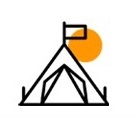
Fixed Departures All
Get yourself fit, nutrition tips, things to take, health & safety.
- Accommodations at Trek: All accommodations on the trek will be on twin sharing basis in Tents or Homestays. Any accommodation in a hotel/guest house/hostel will be in a budget hotel.
- Trek Leader and Guides: An experienced and certified Trek Leader , as well as a professional guide, will accompany you for the trek. The team will have years of experience and well equipped for any emergency situation.
- Services of a Professional Trekking Team: A team of an experienced Cook, Camp Staff, Porters/Mules will accompany you for all the arrangements on the trek .
- Meals: All Meals on the Trek are included. We will serve Vegetarian Indian food on the trek which will be cooked by our high altitude chefs. It will be a five-course meal plan.
- Camping and Safety Equipment: All the camping equipment such as Tents, Sleeping bags, Toilet Tents, Dining Tent, Mattresses, and other things will be provided by us and we guarantee the quality. Safety Equipment including Medical kit, Oxygen Cylinder, Oximeter, Crampons & Gaiters(if required) will be provided by us. We recommend you to bring your own sleeping bags if possible.
- Trek Permits and Forest Camping Charges: Only for Indian Clients, All the applicable trekking permits, Camping Charges, Forest Entry Fee, etc will be paid by us. Foreigners have to pay these charges if not mentioned.
- A Life-Changing Experience: We assure you that by trekking in the Himalayas you will have a life-changing experience and we will do everything we can to provide you with the best services and make your venture in the wild an unforgettable one.
Note: Prior to booking any adventure with Trekmunk, it will be mandatory to sign the waiver form and get a medical certificate from a doctor in due time, without these, you will not be allowed to start the trek. All this will be done online without using any paper.
- GST and Other Taxes: The goods and services tax is not included in the price mentioned with the trek. They are subjected to change according to the government rules of India.
- Food in Leh: Food in Leh is not included in the package. You can dine anywhere in Leh city, we can recommend a few good options.
- Flights and Transportation: Flights or other means of transport are not included in the package. Transportation from Home city to Leh and Leh to Home city is not included in the package. Any expenses occurred during the journey are not included in the package cost.
- Personal Equipment: Your Rucksack, personal clothing, shoes, trek poles, and other personal trekking gear is not included in this package. You have to bring your own gear according to the weather and difficulty of the trek.
- Portage of Personal Bags(Offloading): We highly advise you to carry your own burden (your rucksack) but due to any reason, if you wish to not carry your rucksack, we can arrange for a porter/mule to carry it. For this service, you will be charged over and above the trek cost. The charges for offloading vary with every trek.
- Travel Insurance: Travel Insurance is not included in this package. We recommend you to have travel insurance before opting for such adventures. You can buy insurance from us while booking the trek, it is optional.
- Personal Expenses: Any personal expenses incurred (Laundry, Bottled Water, Beverages, Snacks, Orders at tea houses or dhabas, Tips for guides, Camera fees, etc) are not included in the package.
- Emergency Expenses: Any costs arising out of unforeseen circumstances such as accidents, bad weather, landslides, road conditions and any other circumstances beyond our control are not included in the package.
- Anything not mentioned in Inclusions of the package.
Cancellation Policy And More Information
Booking Terms:
1. Confirmation Policy :
Upon Booking, An invoice will be sent to your mail & within 12 to 24 hours the booking confirmation with additional details will be sent to your mail.
2. Cancellation Policy:
(a) 10 percent of the prices of our trips/treks/tours or product or service is your deposit and is not refundable, in any case.
(b) Cancellation received 45 days or more: 90% refund
(c) Cancellation received 30 - 44 days: 60% refund
(d) Cancellation received 30 - 15 days: 30% refund
(e) Cancellation less than 15 days: No refund
For more details, go to https://www.trekmunk.com/cancellation-policy
3. Refund Policy:
Any refund applicable will be processed within 10 to 15 business days as per the company policy.
4. Postpone/Transfer of a booked trek:
1. You can postpone your booked trek for a period of two months (61 days) but we will charge a 20% processing fee. The last date for the postponement will be 15 days before the start of the trek. Failing to book the slot in 2 months (61 days) time, would be considered a cancellation with no refund of any kind. Postpone of a booked trek can only be done once.
2. You can transfer your booked slot for the trek to any fit person till 15 days before the trek. You just have to mail us the request and rest we will handle. The new person has to get all the mandatory documents duly signed for the trek.
More Information:
1. We Trek for a Cause : For overall development of the areas we run our operations in, we donate Rs 100/- per booking from our profits which are used for the upliftment of the local people and conserving nature. We have named this initiative as - Trek for a Cause. For more details, follow: https://www.trekmunk.com/trek-for-a-cause
2. We are paperless : We are focusing on Sustainable Tourism and to do that we are trying all measures to convert our trek operations to be Eco-Friendly. Going Paperless is one step closer to our aim.
3. Single-Use Plastic : Trekmunk does not encourage the use of single-use plastic items. We are ensuring that our team is working together to reduce the problem and educate those around them. We will send you instructions on how to go plastic-free on your adventures.
4. Preparing for your Holiday : Getting some additional exercise makes a lot of sense to spend time before coming on a trekking adventure. The fitter you are, the more enjoyable you will find the experience. Hiking in the hill country is the best training but jogging, squash and swimming are also good for developing cardiovascular fitness and stamina. To read more on how to get fit, follow: https://www.trekmunk.com/get-fit-for-trek
5. Electricity Supply & Plug : You will get electricity supply till the starting point of the trek. If not Indian, We recommend you check if you require an adaptor for your electrical items at: http://www.worldstandards.eu/electricity/plugs-and-sockets/
6. Currency: The unit of currency in India is the Indian Rupees.
7. Health & Vaccinations:
Severe Allergies : If you have a severe allergy please inform the Trekmunk office before you travel. We will do all we can to help, but we cannot guarantee an allergy-free environment on trekmunk trips. You will need to carry your own treatment for the allergy with you, as 'adrenaline auto-injectors' are not carried as standard by our leaders and staff. You should inform your leader on the arrival of your allergy, and let them know where you keep your adrenaline pen.
Vaccinations : You should contact your doctor or travel clinic to check whether you require any specific vaccinations or other preventive measures. You should be up to date with routine courses and boosters as recommended e.g. diphtheria-tetanus-polio and measles-mumps-rubella, along with hepatitis A and typhoid. Malarial prophylaxis is not usually required for trips in the mountains, however, if you are visiting rural and remote low lying areas then they might be necessary.
8. Passport & Visas/Identity Proofs : If foreigner, Validity for 6 months, should have blank pages, and should be kept with yourself all the time.
9. Water : If you are on a trekking or cycling holiday, water is supplied to fill up your individual bottles. This will be boiled or filtered. Additionally, you should take purification tablets or a filter bottle (such as a LifeStraw, Sawyer Filter) to treat your water when in towns or where water is not supplied. We do not encourage the purchasing of single-use plastic bottles.
10. Altitude : This adventure involves going to a very high altitude. This is not something that you should worry about; the human body is quite capable of adapting to a very wide range of altitudes, but it is important that we follow some simple rules in order to acclimatize successfully. We will send you the information in your mailbox about Acute Mountain Sickness and trekking in high altitudes. On this trip, we carry bottled oxygen for use in emergencies.
11. Guidance on Tipping : Tipping is the accepted way of saying thank you for good service. Normally the guide and any other trek staff are given their tips at the end of the trek and this is best done as a group. The main guide will make sure that the tip is appropriately distributed among all the staff members on the trek.
12. Spending/Emergency Money : Approximately Rs. 8000-10000/- (in Indian Currency)should be carried for miscellaneous expenses including porter and trek crew tips, drinks, soft drinks, etc. We recommend that you carry your travel money in the form of cash as the availability of ATM is less in these remote areas. This can also serve as your emergency spending money.
13. Travel Insurance : It is recommended to have travel insurance for these kinds of adventures. When taking out insurance please ensure the policy you choose covers you for the activities and altitude included in your itinerary. We will ask for the Travel Insurance Details over a mail. Indians can buy insurance from us while booking the trek.
I and my friends went to Markha Valley trek with Trekmunk and we all had a great time. Walking up and down the hill, coming across some beautiful sites was mesmerizing. Staying in tents was so much fun. And our guide had all the knowledge about the trek. Trekmunk is really good w ...
Chadar trek is considered to be one of the most difficult and dangerous treks, which requires a lot of skilled trek leaders, a perfect guide and a strong team of porters. I choose Trekmunk for Chadar and they proved they are a perfect team. Highly skilled trek leaders, profession ...
Traveling with these people is surely an insanely enthralling experience. This is my second backpacking trip with these people and the way I had imagined backpacking to be has been fulfilled by them and they have given me surely more. The best thing about travelling with these pe ...
I and my friends went to Markha Valley trek with Trekmunk and we all had a great time. Walking up and down the hill, coming across some beautiful sites was mesmerizing. Staying in tents was so much fun. And our guide had all the knowledge about the trek. Trekmunk is really good with its food and accommodation facilities. I highly recommend Trekmunk. Kudos to their Team.
Chadar trek is considered to be one of the most difficult and dangerous treks, which requires a lot of skilled trek leaders, a perfect guide and a strong team of porters. I choose Trekmunk for Chadar and they proved they are a perfect team. Highly skilled trek leaders, professional skiers, gave us details on how to walk on slippery ice. Professionally trained and certified with wilderness medication programs always ready to take your care in any condition and travelers themselves. One will enjoy their company, their travel stories and their way of leading a trek. Cheers to team Trekmunk.
Traveling with these people is surely an insanely enthralling experience. This is my second backpacking trip with these people and the way I had imagined backpacking to be has been fulfilled by them and they have given me surely more. The best thing about travelling with these people is that you understand the true meaning of travelling and experience it very closely. You are given great freedom but at the same time taking care of. You participate in the process of backpacking. You have a trip leader with you but he acts more like a friend as the days pass by! We attended the hornbill festival and did a wonderful trek to Dzukuo valley in Nagaland with the leadership of this group. You break the boundaries of yourself when you travel like a true traveller and that is possible with these people.
I chose (after a lot of research) Trekmunk for my first trek - The Hampta Pass and Chandratal Trek. And I am so really glad I did so. The trekker needs to only focus on the trek and the beautiful landscape around him/her. The rest of everything is taken care of by Trekmunk from day 1 till the end of the trek. Scrupulously managed logistics; no compromise on safety and security; experienced, intelligent and knowledgeable trek leaders; scrumptious meals; contingency and backup plans; etc. make Trekmunk an ideal choice to go trekking with. My trek was lead by Ashish Pathania, Prashant Reddy and Sanjay Thakur. The three are were thorough professionals. They were jolly, very helpful, experienced, knowledgeable, organized, and needless to say polite yet strict when needed. They played the most important roles in making sure our overall trekking experience was a wonderful one. Thank you Trekmunk for one of the most beautiful experiences I have had till date. Will see you guys soon.
We were a group of 12 friends and booked a trek to Kedartal with Trekmunk, it was an amazing experience..even though it was our first trek to the Himalayas and Kedartal being a difficult terrain trek we were guided excellently by the Trekmunk team. They served us nutritious food, took complete care of our safety and health and gave us the right advice to overcome AMS. Eagerly awaiting our next trek with them.

Related Blogs
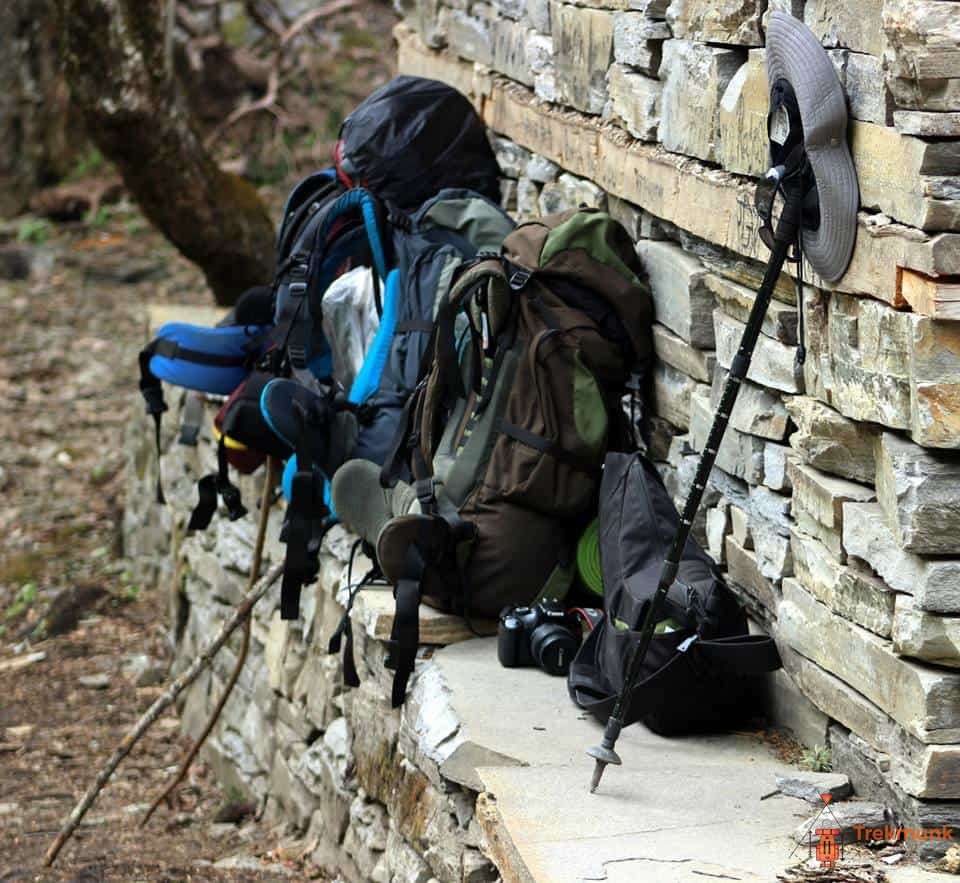
Related Tours
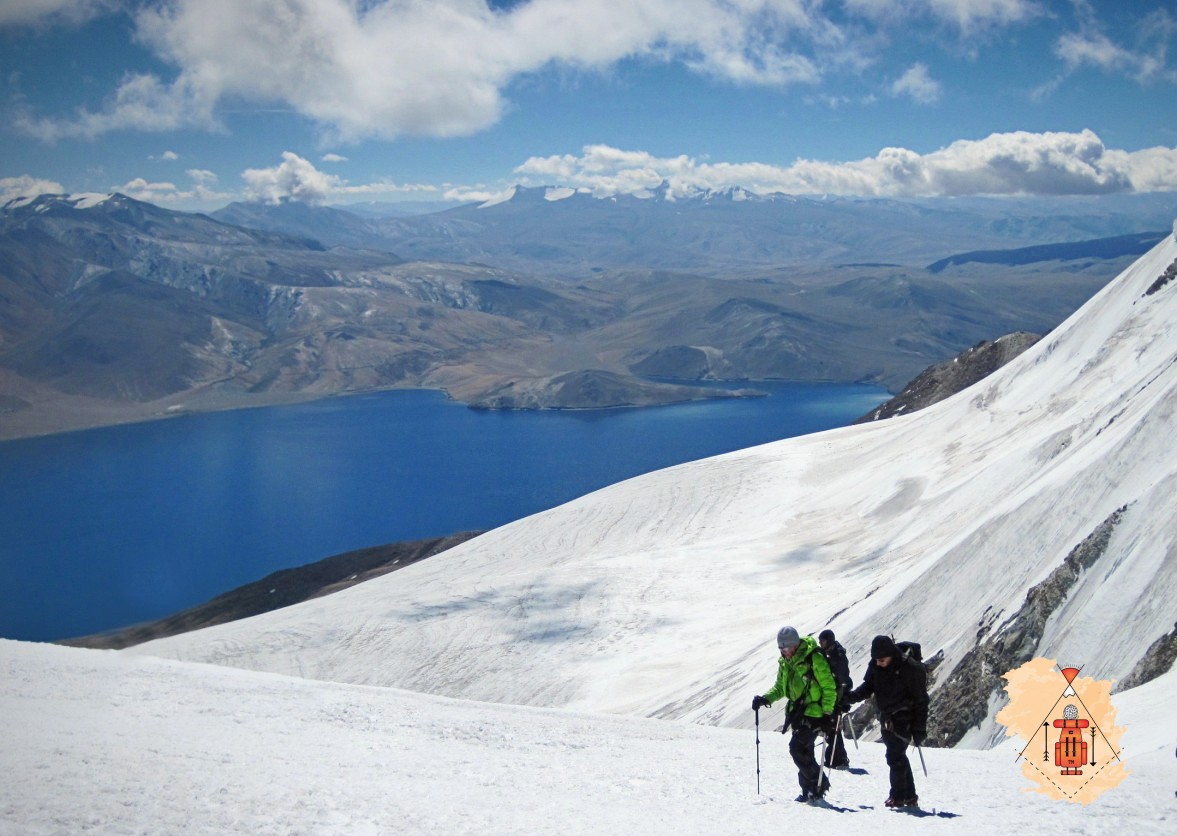
Chamser Kangri Expedition
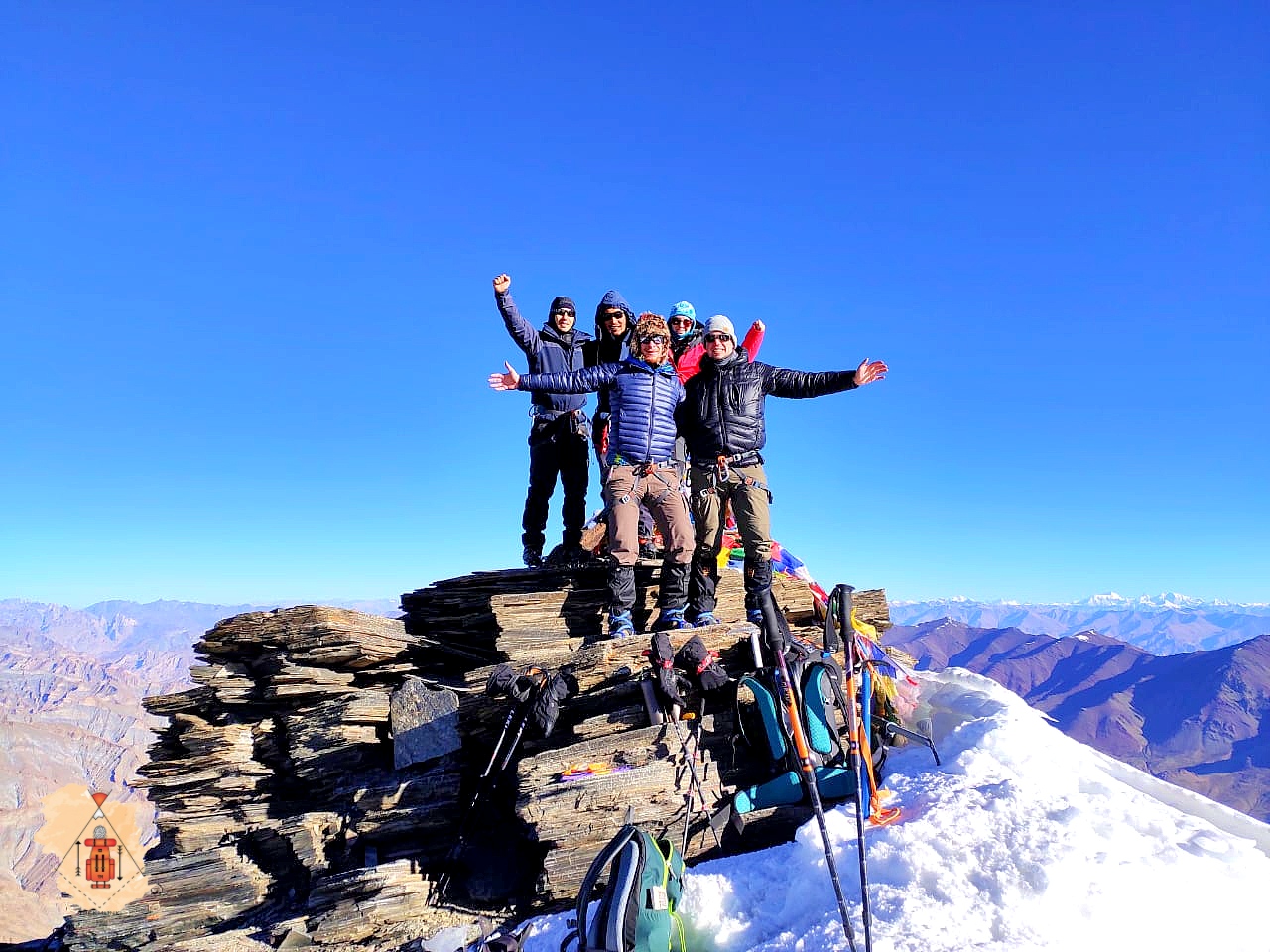
Kang Yatse II Expedition
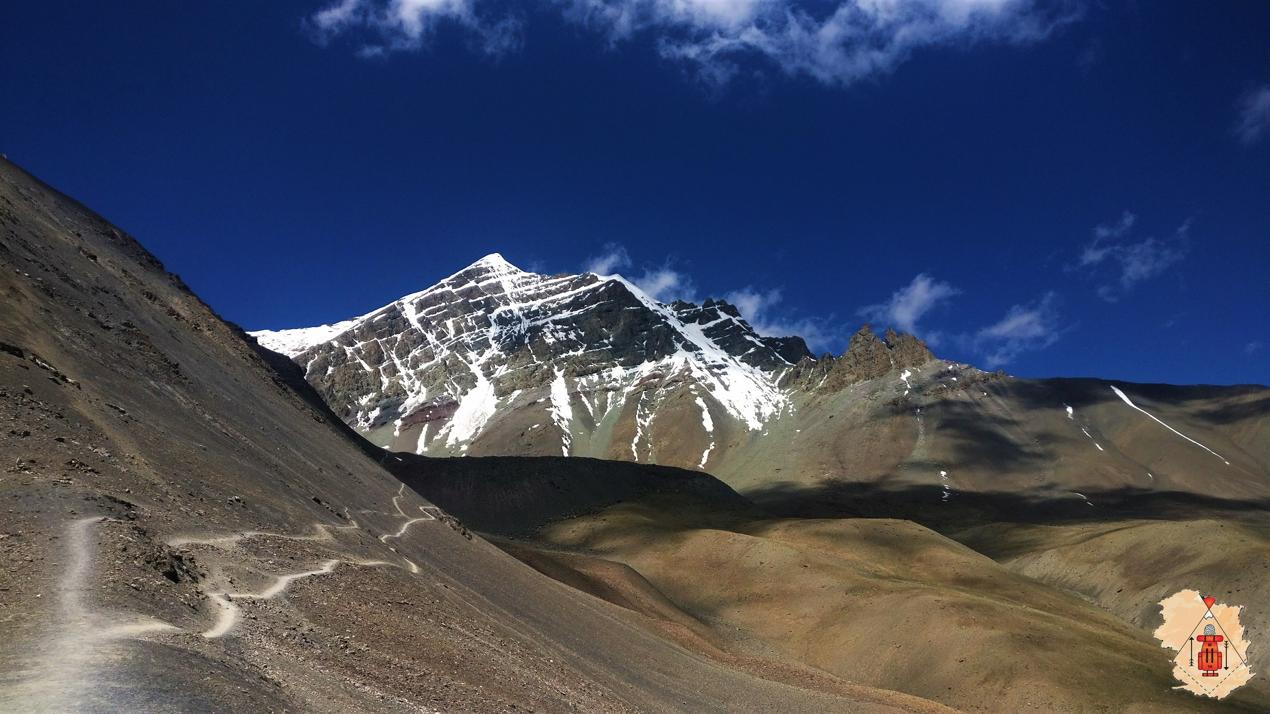
Stok Kangri Trek
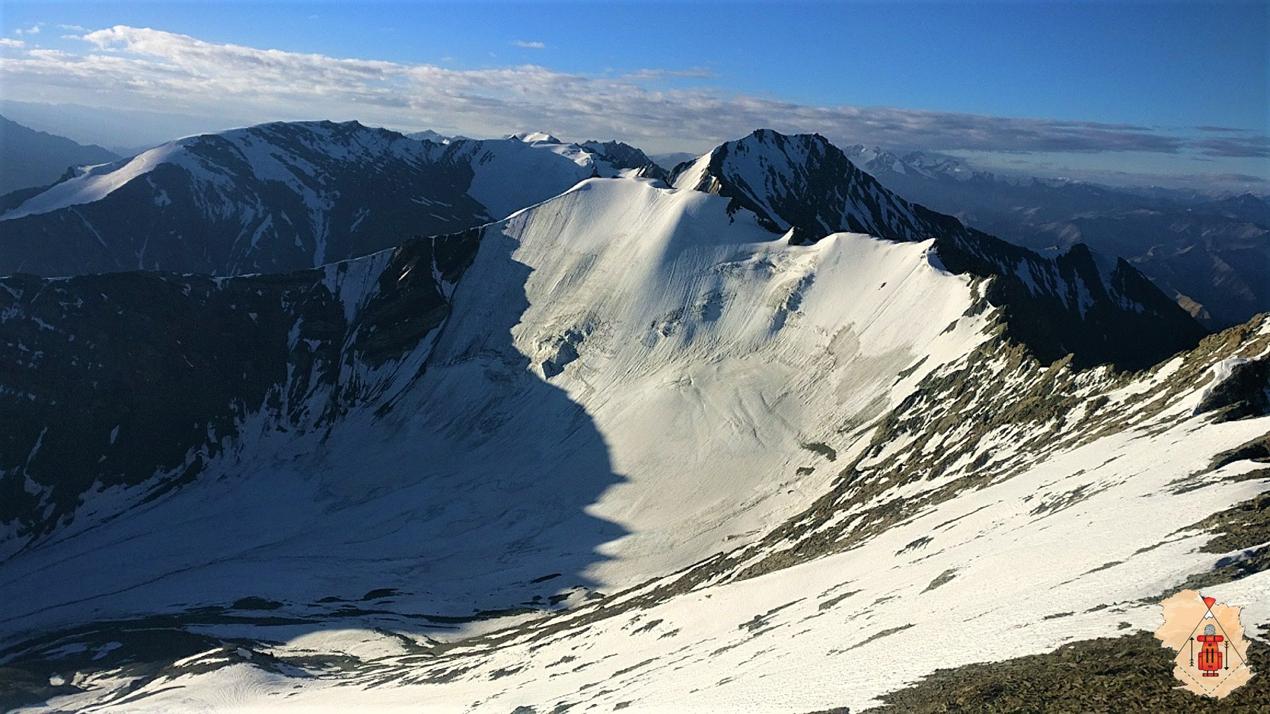
Stok Kangri Winter Expedition

"Trekmunk is changing the indian trekking industry"
"10 Most Promising Adventure Sporting and Trekking Companies - 2020"
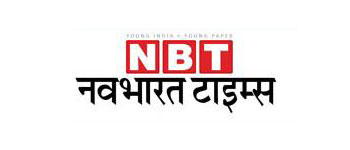
" Things you do for the Passion for Travel"
Hello there, How can we help you ?
Timing: 10 am to 6 pm IST (GMT +5:30)
Whats App Us

IMAGES
VIDEO
COMMENTS
Stok Kangri Trek. At 6,153m above sea level, Stok Kangri is the highest mountain in the Stok range of the Himalayas. It is situated in the Hemis National Park which is in the Ladakh region of Jammu and Kashmir in India. Hemis National Park is itself famous for being home to the greatest concentration of snow leopards in the world.
The Stok Kangri trek difficulty is considered to be tough. It is approximately 40 kilometres in length and takes around 8 days to ascend the summit and descend back. The Stok Kangri trek height is approximately 20,187 feet above the mean sea level. It is the highest peak in the Stok Range of the Himalayas in the Ladakh region of north India.
The Stok Kangri summit is a wonderful gift for Indian trekkers. It is truly a summit worth climbing and a trek that does not require mountaineering skills. With proper preparation and judgment everyone can make it to the summit. Just don't let the glamour of a 20,500 feet summit, cloud your vision.
Stok Kangri is one of the highest trekkable peaks in the world. It stands at an elevation of 20,100 ft. and is higher than the highest mountain in Europe, Mt. Elbrus at 18,510 ft and although marginally, it is even higher than the highest mountain in Africa, Mt. Kilimanjaro at 19,340 ft. It beats two of the highest mountains across two ...
Stok Kangri (6,153 metres (20,187 ft)) is the highest mountain in the Stok Range of the Zazkar Mountains a Trans-Himalayan mountain in the Ladakh region of north India. The peak is located in Hemis National Park, [2] 12 km southwest of the trailhead (3,610 metres (11,844 ft)) in the village of Stok and around 15 km southwest of the city of Leh ...
Stok Kangri Trek a Demanding Traverse amid Towering Himalayas. Stok Kangri top most expedition trek in the Leh or Ladakh, Towering peaks all around with deserted landscapes, Stok Kangri peak has become popular in past few years. Moreover, Located at Leh in Ladakh, it lies 6, 153 meters (20185 feet) above the sea level.Thus, every year this place is chosen by many tourists as a great trekking ...
The Stok Kangri trek is a challenging and exhilarating adventure located in the Ladakh region of northern India. It's renowned for being one of the highest trekking peaks in the Indian Himalayas, offering trekkers an opportunity to summit a 6,153-meter (20,182-foot) peak. The trek offers breathtaking views of the Ladakh and Zanskar ranges, including… Continue reading Stok Kangri Trek
The ideal time to visit Stok Kangri trek is between May and mid-October. During this time, the weather in Ladakh is warm and pleasant. The temperature usually ranges between 20 and 30°C in the daytime. Also, the highways leading to Ladakh are open for civilian traffic.
Here is the 'trek' itinerary. Day 1 - Arrive at Leh (11,500 ft.) preferably by air. Rest for the evening. Day 2 - Acclimatize in Leh. Day 3 - 15 kms drive from Leh to Stok Village (11,800 ft.)+5 kms trek from Stok Village to Chang Ma (13,800 ft) Day 4 - 3.5 kms trek from Chang Ma to Mankorma (14,200 ft.) Day 5 - 4 kms trek from ...
Total Stok Kangri trek distance - 42 to 43kms (including acclimatisation walks) Altitudes: Leh - 11,500 feet - Stok village - 11,800 feet - Changma - 13,100 feet - Mankarmo - 14,200 feet - Stok base - 16,350 feet - Stok summit - 20187 feet. Contact details: To get a quote on the cost, call 91 9599744950, +91 8447552839.
Stok Kangri Trek requires a total of 9 days Leh to Leh. Here is a brief itinerary of the trek. Day 1: Arrive in Leh. Day 2: Acclimatization in Leh. Day 3: Leh (11500 ft.) to Chang Ma (13087 ft.) via Stok Village (11800 ft.) Day 4: Chang Ma (13087 ft.) to Mankorma (14200 ft.) Day 5: Mankorma (14200 ft.) to Base camp (16300 ft.)
Published On 01 Mar 2020 by Oshank Soni. If you're a trekker, chances are you've got your heart set on the Stok Kangri trek as the ultimate Himalayan adventure. Being the highest trekkable summit in India, it is little wonder that the Stok Kangri trek height is the most appealing factor to most adventurers; 20,180 ft. above sea level.
Day 8: Trek from Stok Kangri Base Camp (16,300 ft) to Stok Village (11,750 ft, 5 Hrs) and Drive to Leh (11,480 ft) (1 Hrs). Overnight in Leh Guest House. The Stok Kangri trek includes high altitude trekking and mountaineering is ultimate experience would finally come to an end today at Stok Village. We will be starting early from base camp and ...
Day 1 to 4- Leh to Stok Kangri Base Camp via Stok Village,Chang Ma and Mankorma. Day 1 - Chang Ma - The trek started at around 10:30 in the morning from Stok Village (the last motorhead) with everyone in good spirits and walking through some stunning rocky landscapes. The path meanders through the valley and each bend opened into some ...
Stok Kangri Trek is a prominent expedition among trekkers, soaring to 20,100 ft. It towers higher than Mt. Elbrus in Europe (18,510 ft) and Mt. Kilimanjaro in Africa (19,340 ft), making it one of the most impressive mountains in the world.
Tour Highlights. Stok Kangri Peak situated at 6152 M is the most elevated Peak in the stok scope of Himalayas. The pinnacle is situated in Hemis National Park and its unmistakably noticeable from Leh and encompassing zones. Remaining at the summit of Stok Kangri, you can see the Karakoram Range to your north and Zanskar Range to your south. A ...
Join Trekup India for a majestic adventure in the Himalayas and summit the Stok Kangri peak, one of the highest trekkable mountains in India.
Stok Kangri Expedition - 4th Aug to 11th Aug 2012. About Stok Kangri mountain: Elevation: 6,153 m (20,182 feet) Stok Kangri is the highest mountain in the Stok Range of the Himalayas in the Ladakh. The peak is located in Hemis National Park, 12 km southwest of the trailhead at 3,610 m (11,845 feet) in the village of Stok and 24 km from the ...
Dream it. Plan it. Live it. Join 360 on an expedition to trek Stok Kangri, the highest mountain in the mysterious Ladakh region of Northern India.The trek mixes adventure with festivity, authentic rural experiences and Western comforts to provide an introduction to mountain climbing that is hard to beat and long remembered.
Stok Kangri Base Camp is located at an elevation of around 17,717 ft. from the mean sea level. Trek from Korzok to Mentok Kangri Base is not very long. The total trekking distance from Mankorma to Stok Kangri Base Camp is around 5-6 kilometers and it takes approximately 6 hours to complete this trail.